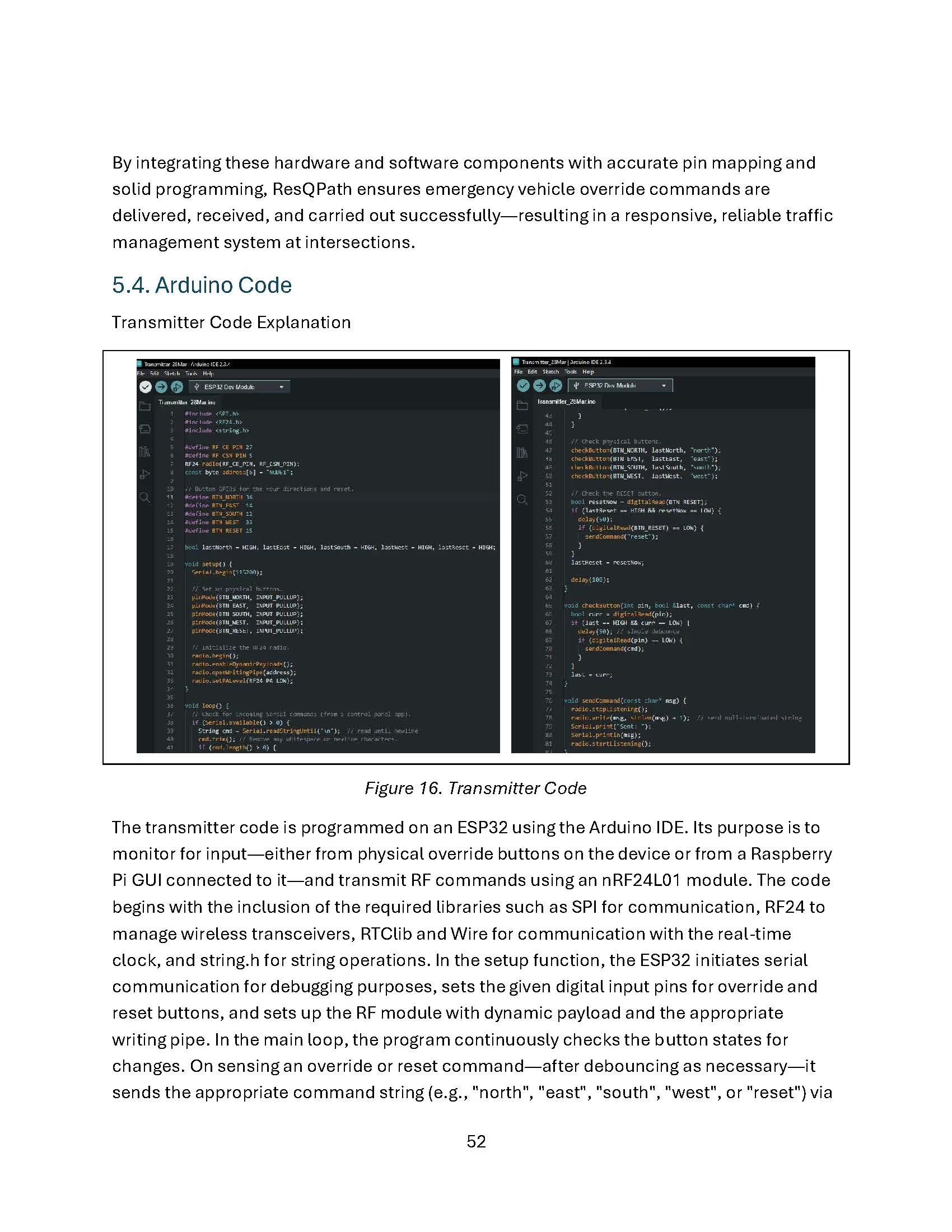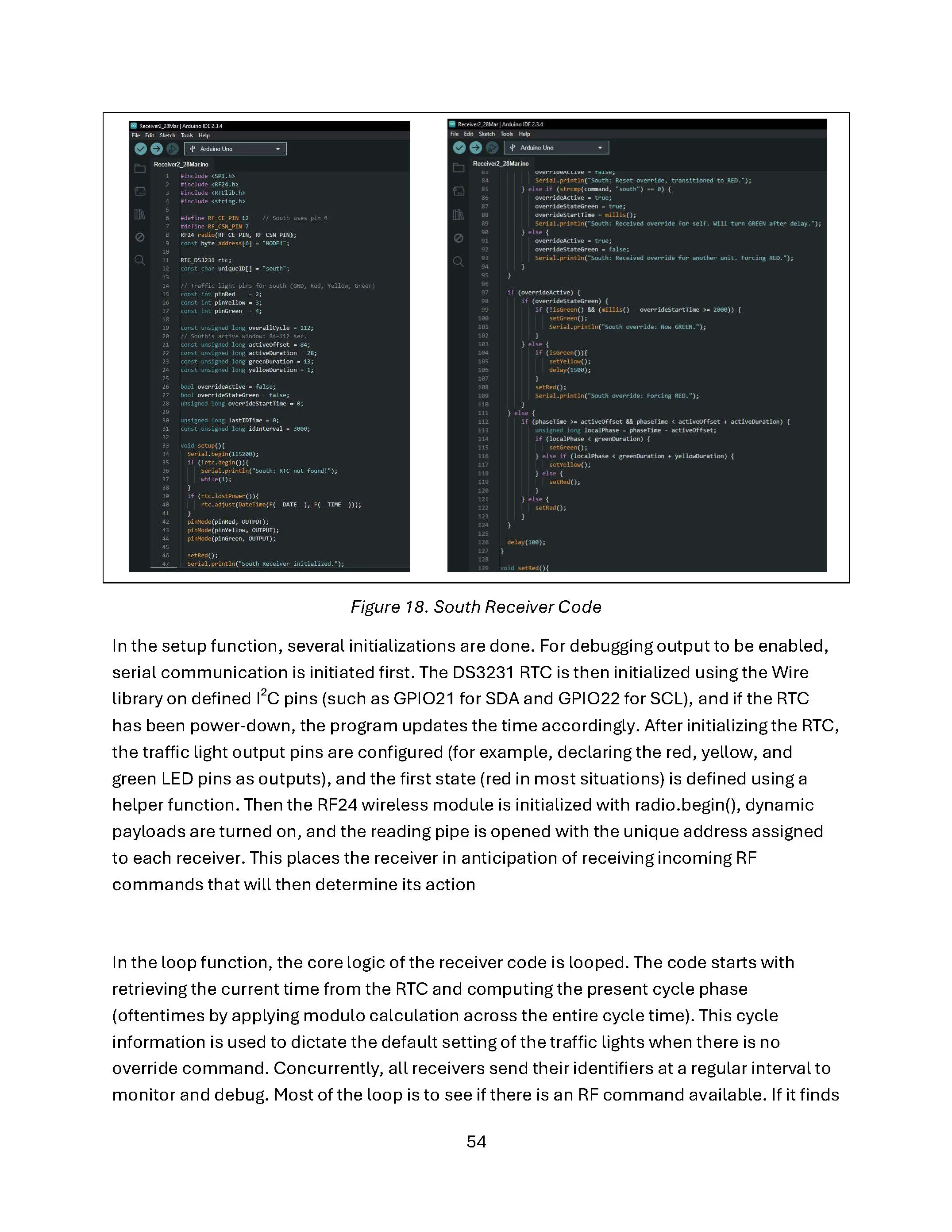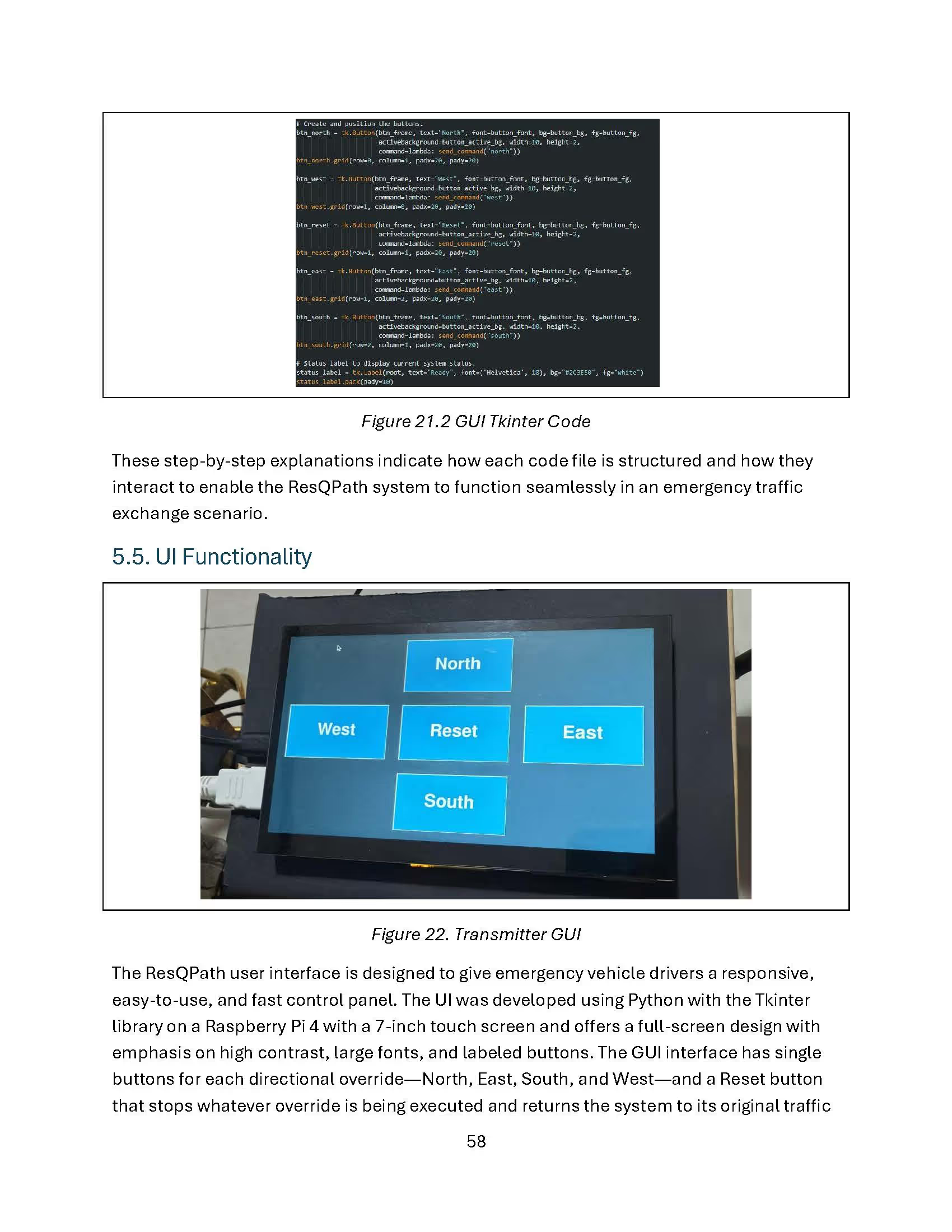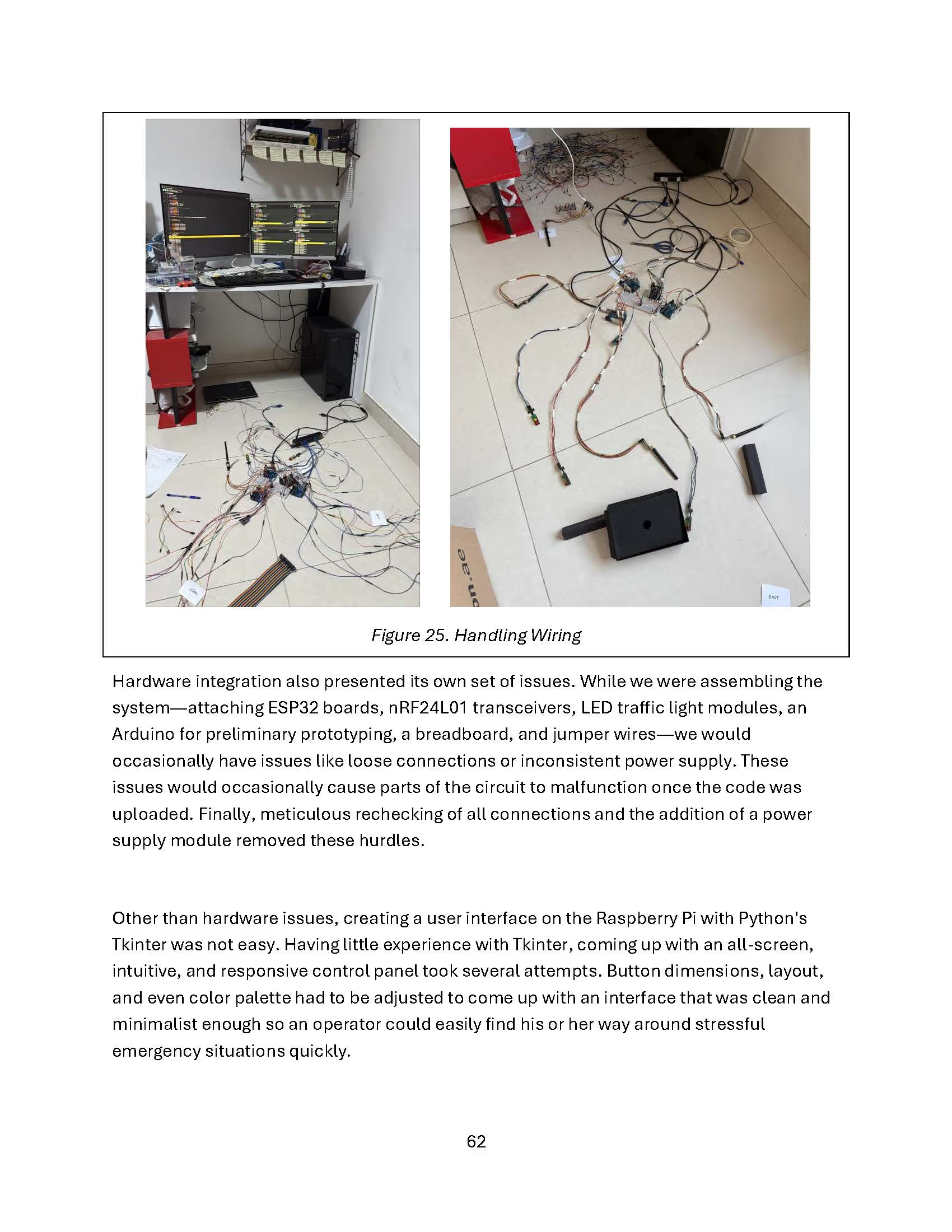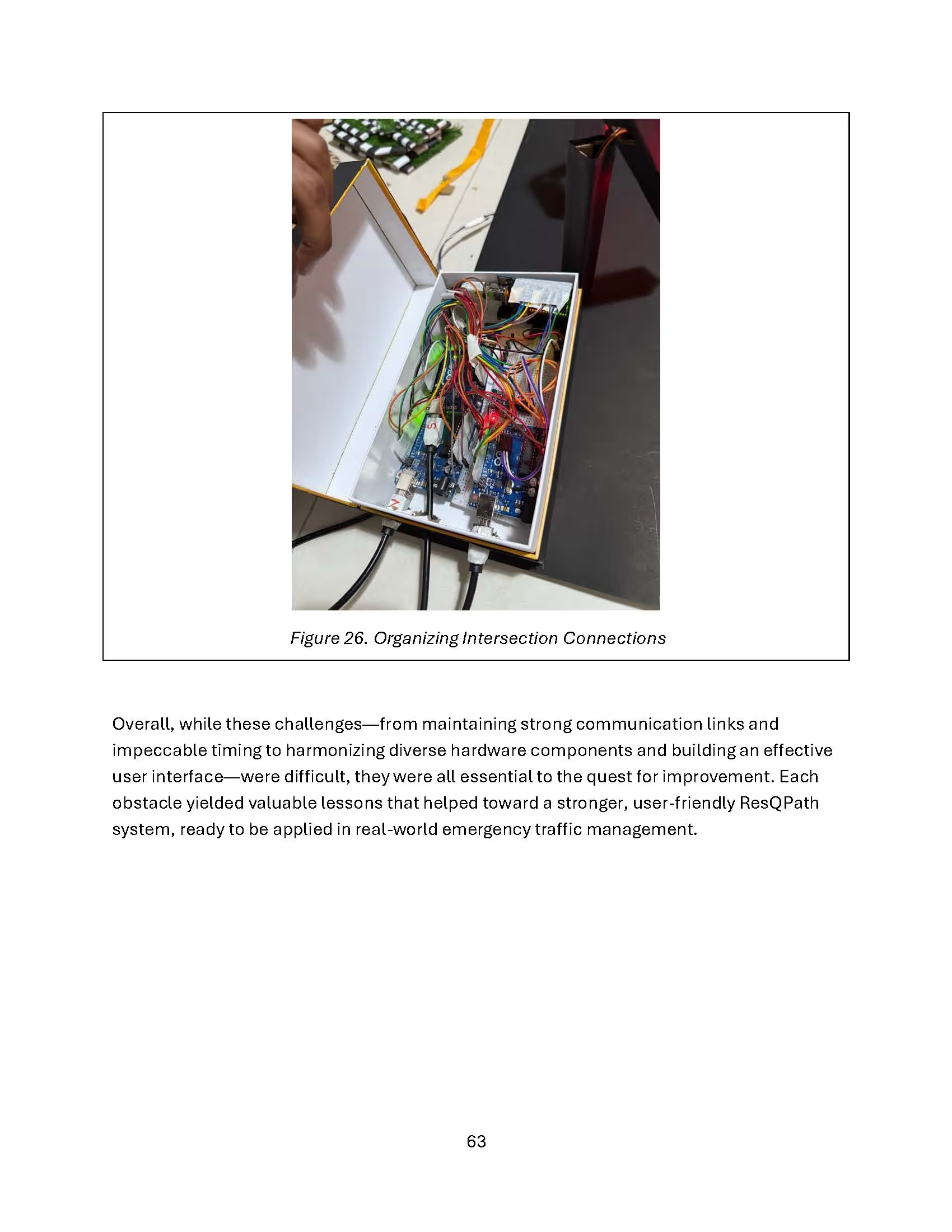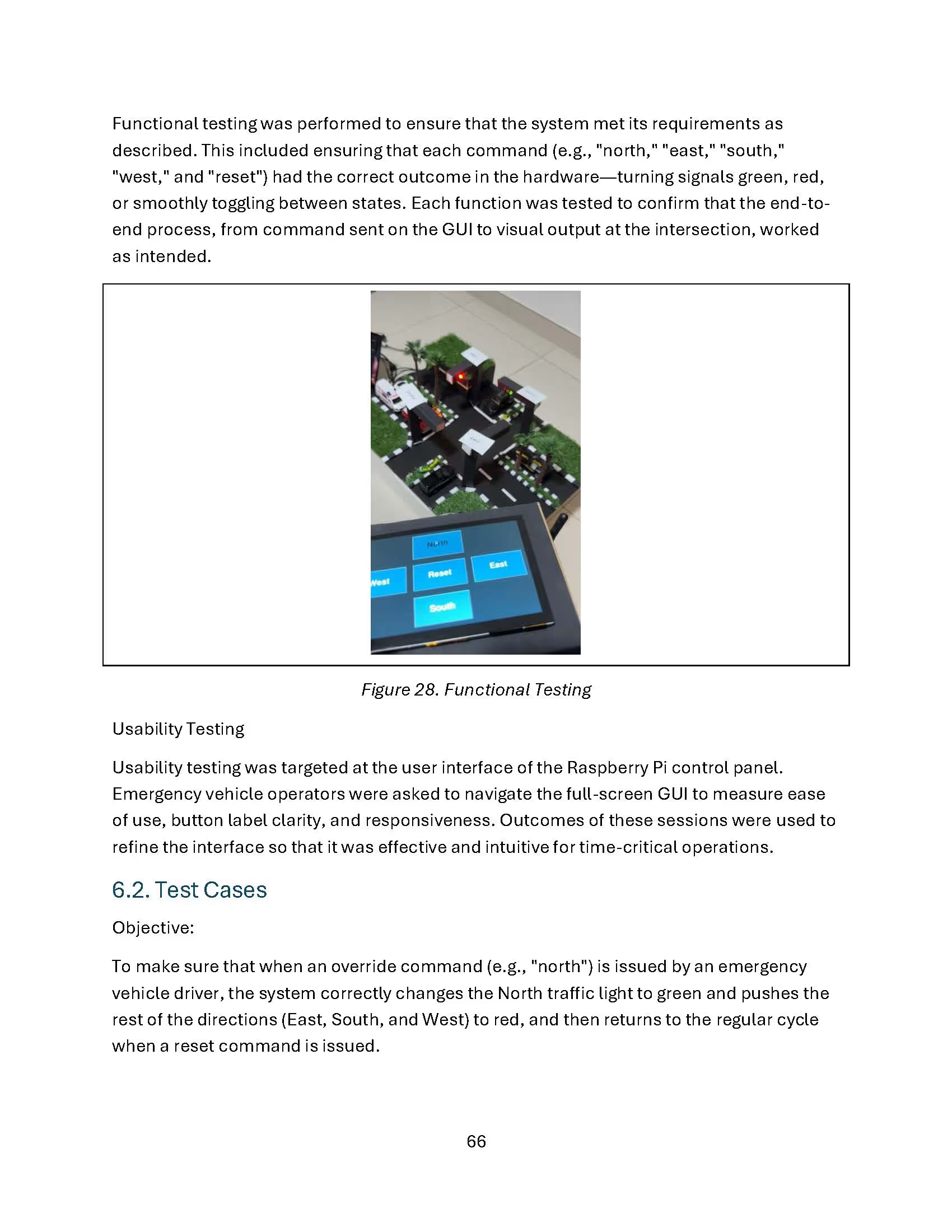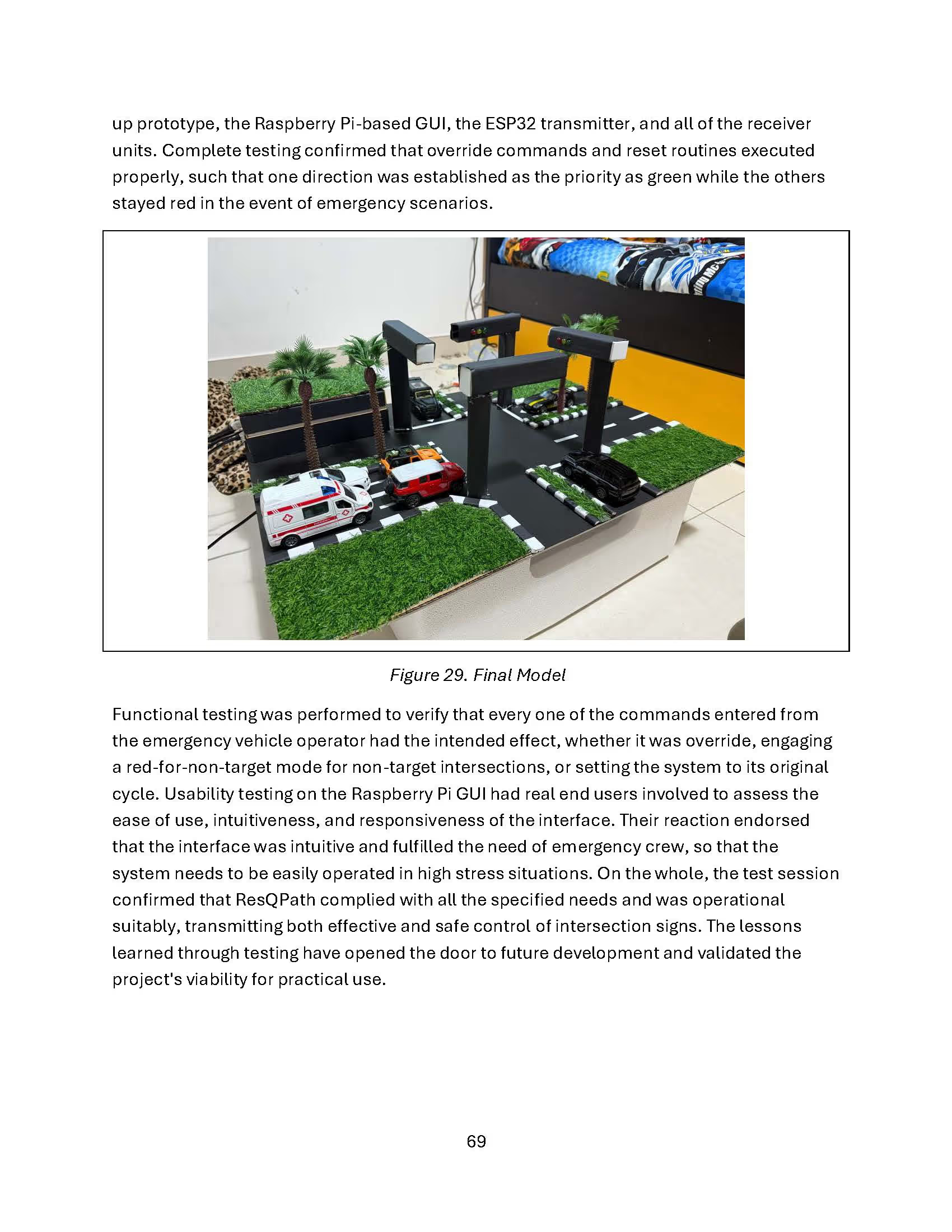Week 1: First Meeting with Supervisor and Idea Discussion
Date & Time: January 31, 5:26 PM – 5:36 PM
Duration: 10 minutes
Attendees:
-> Me
-> Ms. Shafa
Discussion Points
Project Idea Approval:
Presented the concept for the Emergency Vehicle Alert System, initially involving roadside signage to direct traffic, but also touched on alternative approaches like sending alerts to drivers’ personal devices.
Practical Demo Advice:
Supervisor suggested focusing on notifications to users’ devices instead of physical signs, as signage would involve legal permissions and logistical hurdles, making it difficult to demonstrate effectively in an academic setting.
First Cut Proposal:
I was advised to create a short outline detailing the project aims, objectives, and scope in preparation for the official proposal.
Ethics Forms:
We discussed whether any research ethics approval was necessary, particularly regarding collecting user data or location information.
Next Meeting:
Agreed to reconnect on February 4 at 9:30 AM to review the first cut proposal and further clarify ethics requirements.
Outcomes Idea Confirmation:
Received a green light to proceed, emphasizing the mobile notification path for ease of demonstration and compliance reasons.
Action Items:
• Draft a first cut proposal outlining project details. Decide if the ethics form is required, based on the nature of data collection.
Duration: 10 minutes
Attendees:
-> Me
-> Ms. Shafa
Discussion Points
Project Idea Approval:
Presented the concept for the Emergency Vehicle Alert System, initially involving roadside signage to direct traffic, but also touched on alternative approaches like sending alerts to drivers’ personal devices.
Practical Demo Advice:
Supervisor suggested focusing on notifications to users’ devices instead of physical signs, as signage would involve legal permissions and logistical hurdles, making it difficult to demonstrate effectively in an academic setting.
First Cut Proposal:
I was advised to create a short outline detailing the project aims, objectives, and scope in preparation for the official proposal.
Ethics Forms:
We discussed whether any research ethics approval was necessary, particularly regarding collecting user data or location information.
Next Meeting:
Agreed to reconnect on February 4 at 9:30 AM to review the first cut proposal and further clarify ethics requirements.
Outcomes Idea Confirmation:
Received a green light to proceed, emphasizing the mobile notification path for ease of demonstration and compliance reasons.
Action Items:
• Draft a first cut proposal outlining project details. Decide if the ethics form is required, based on the nature of data collection.
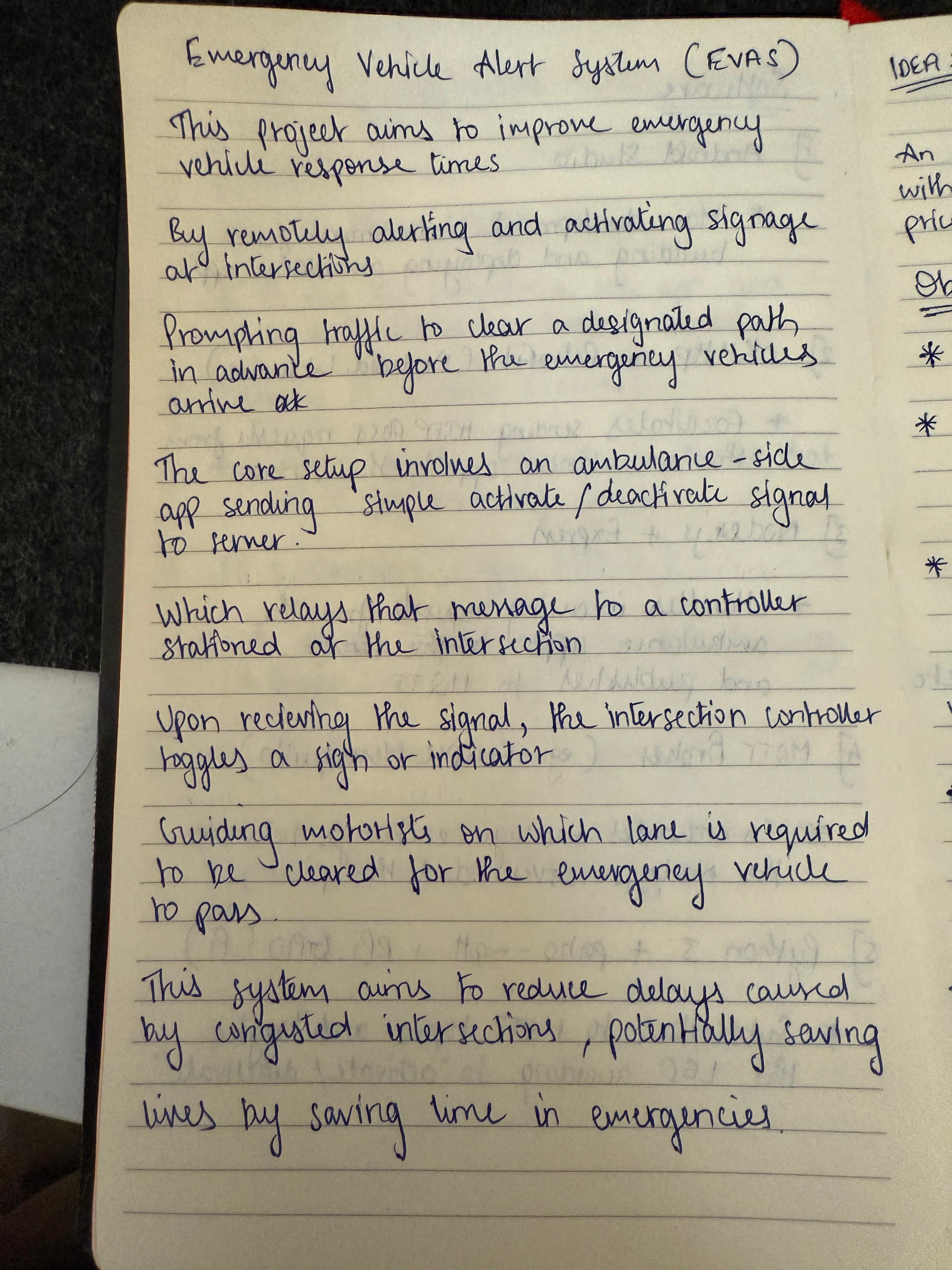
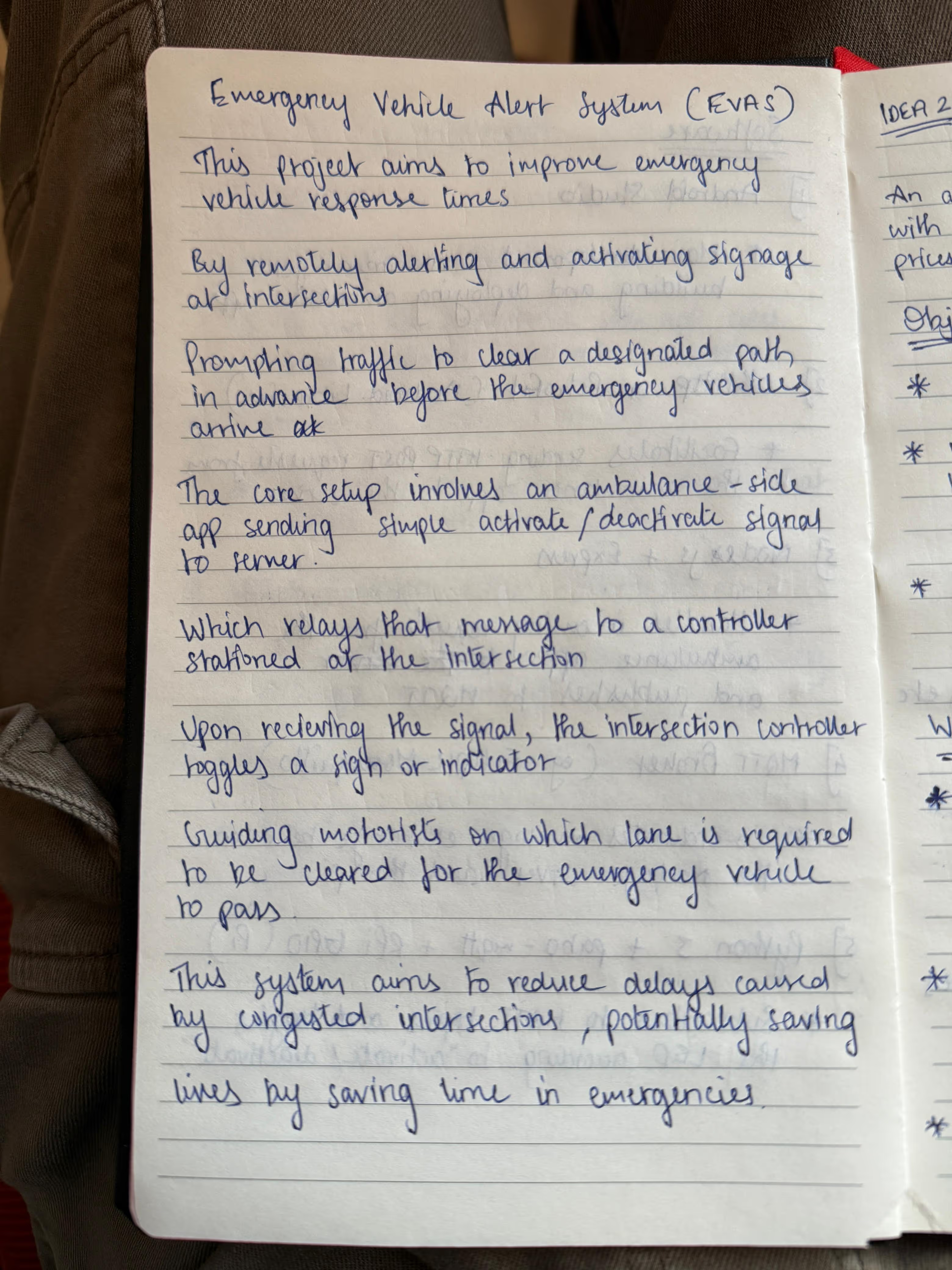
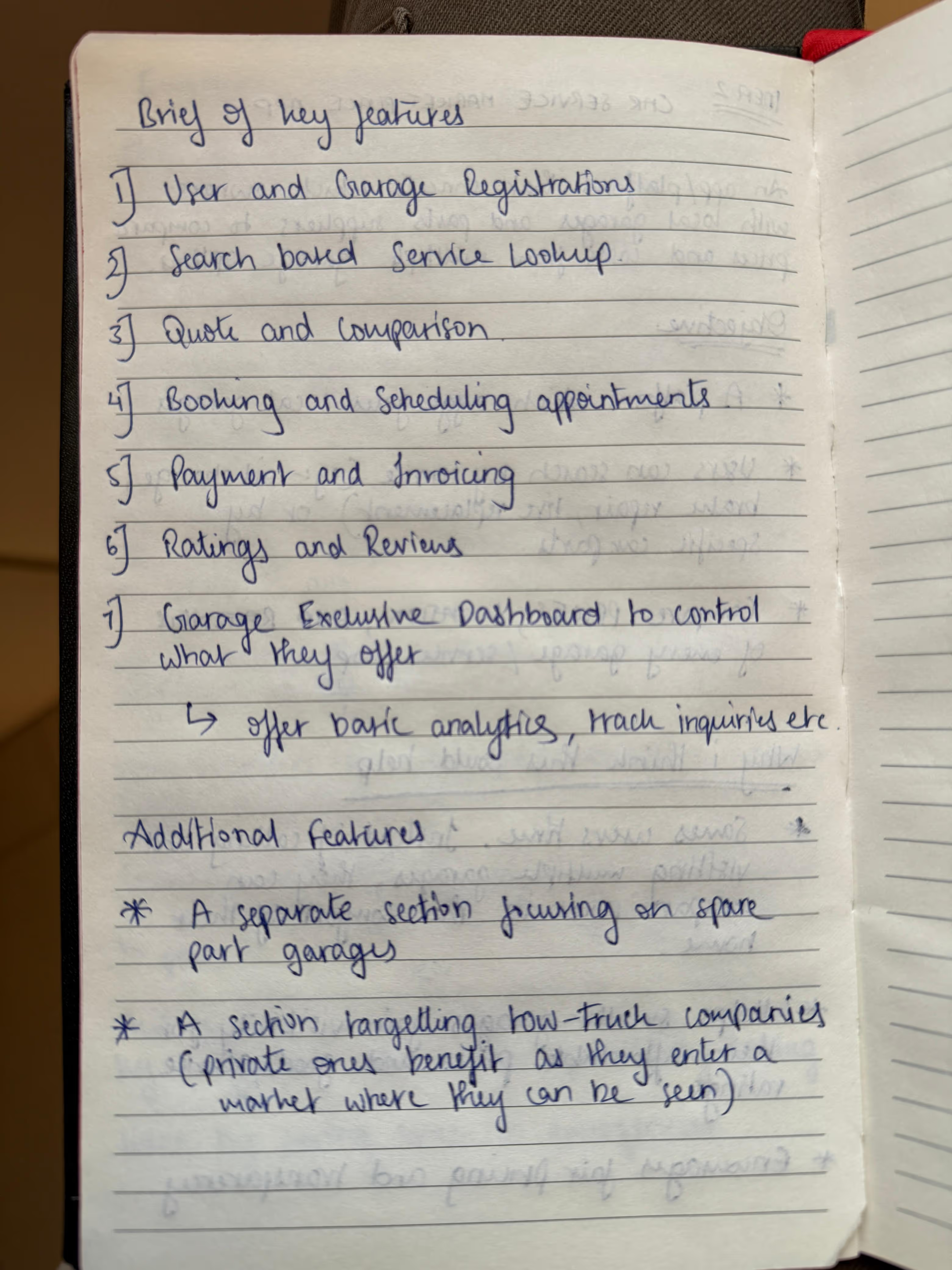
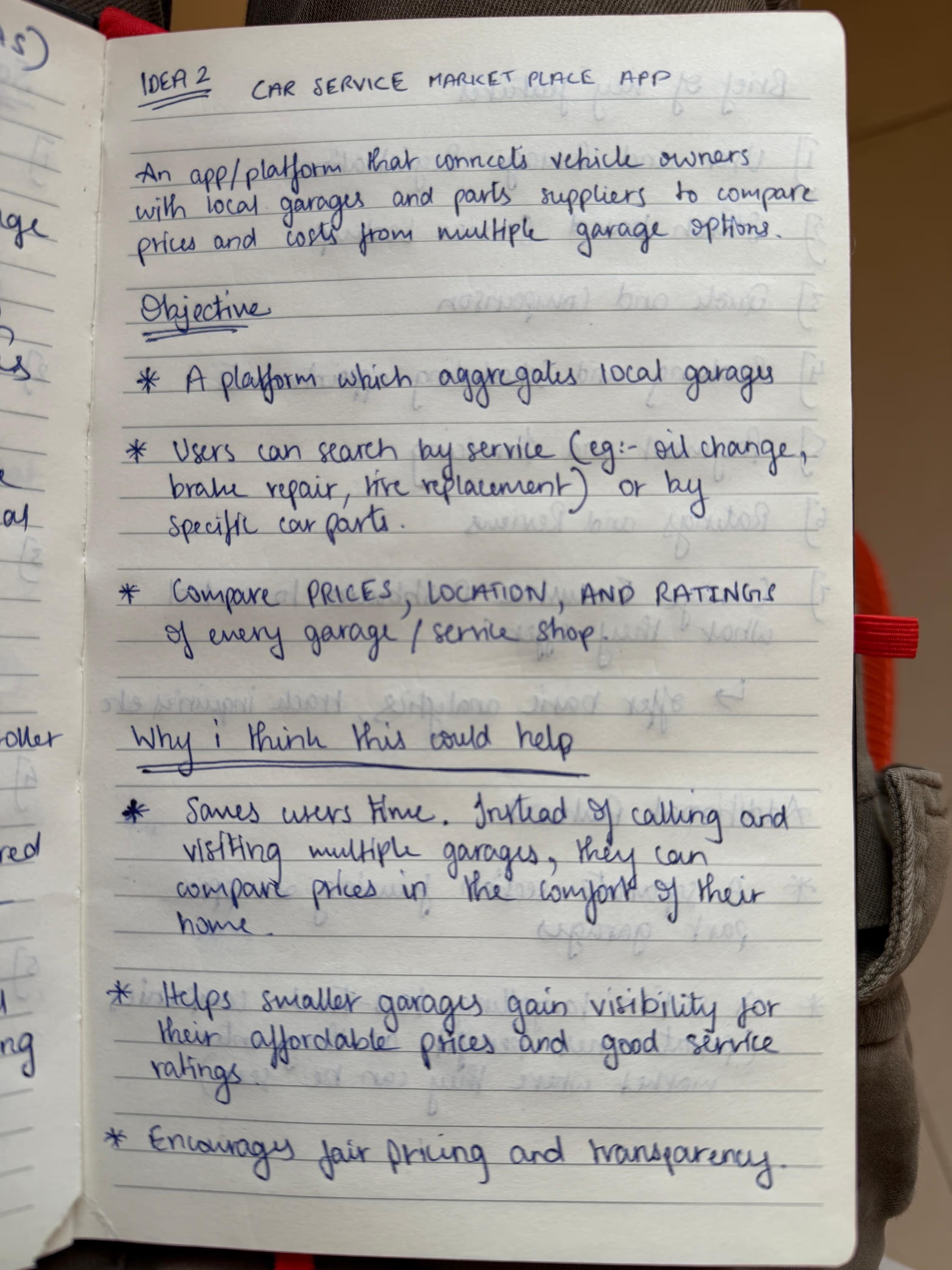
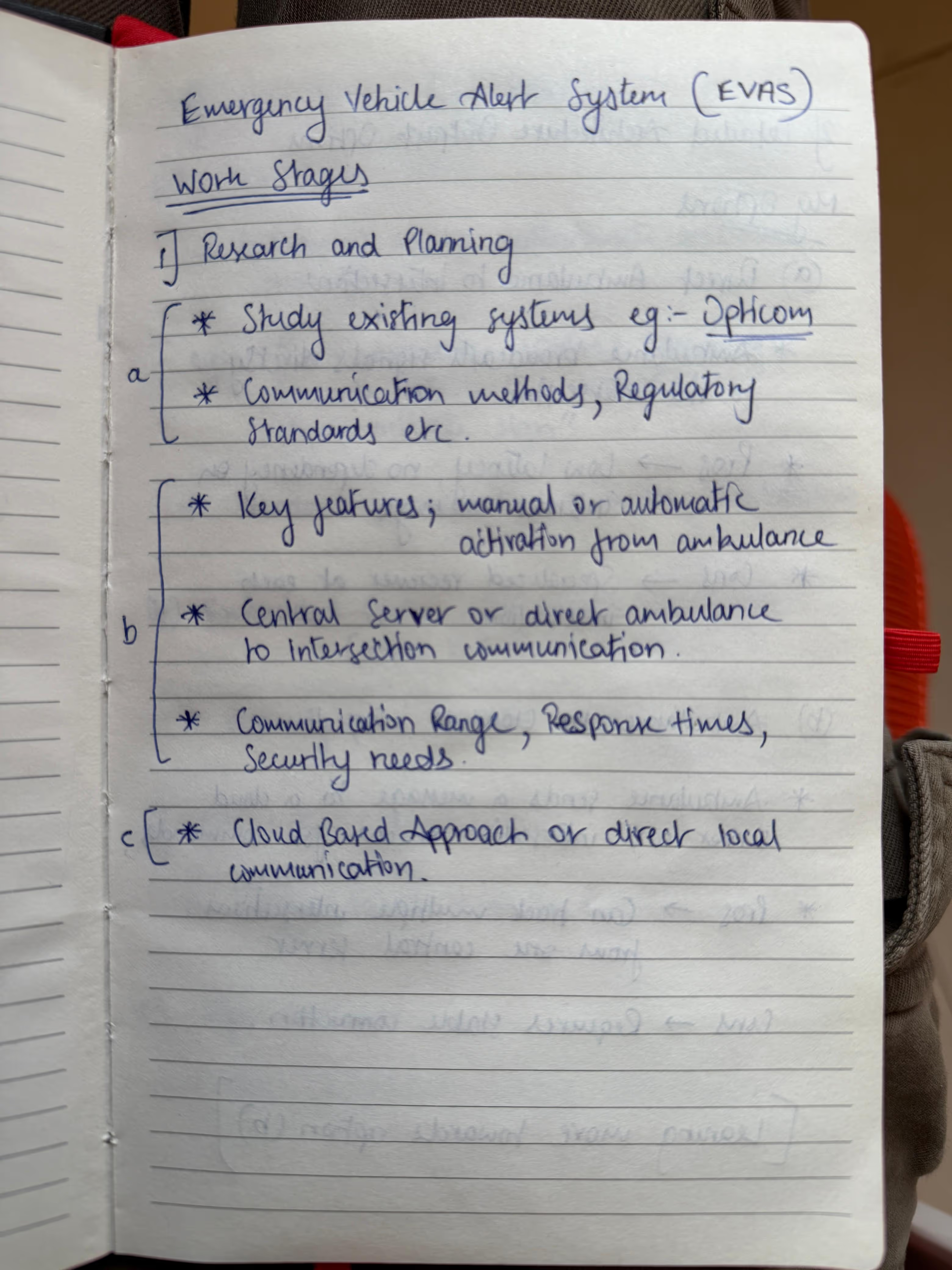
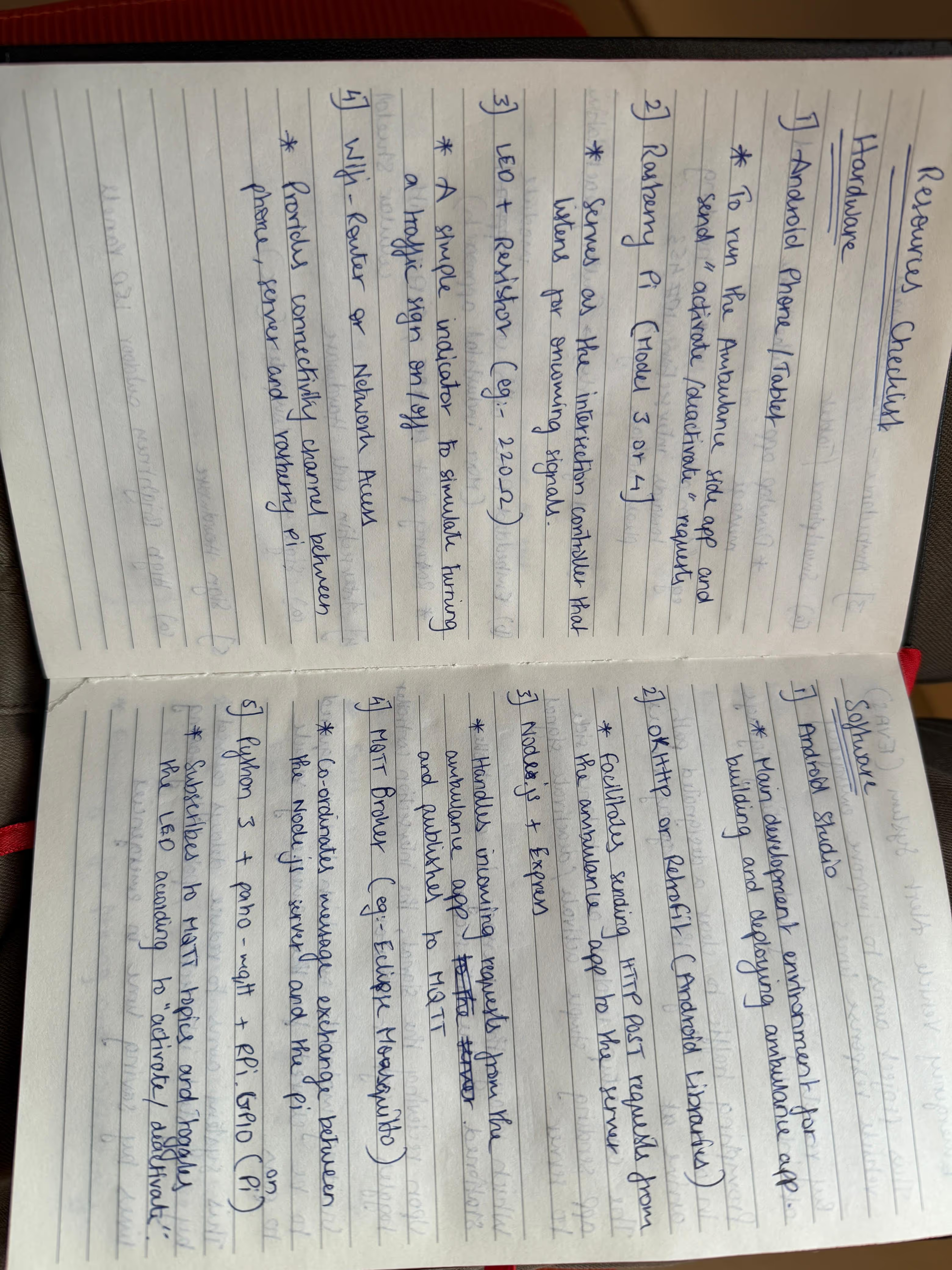
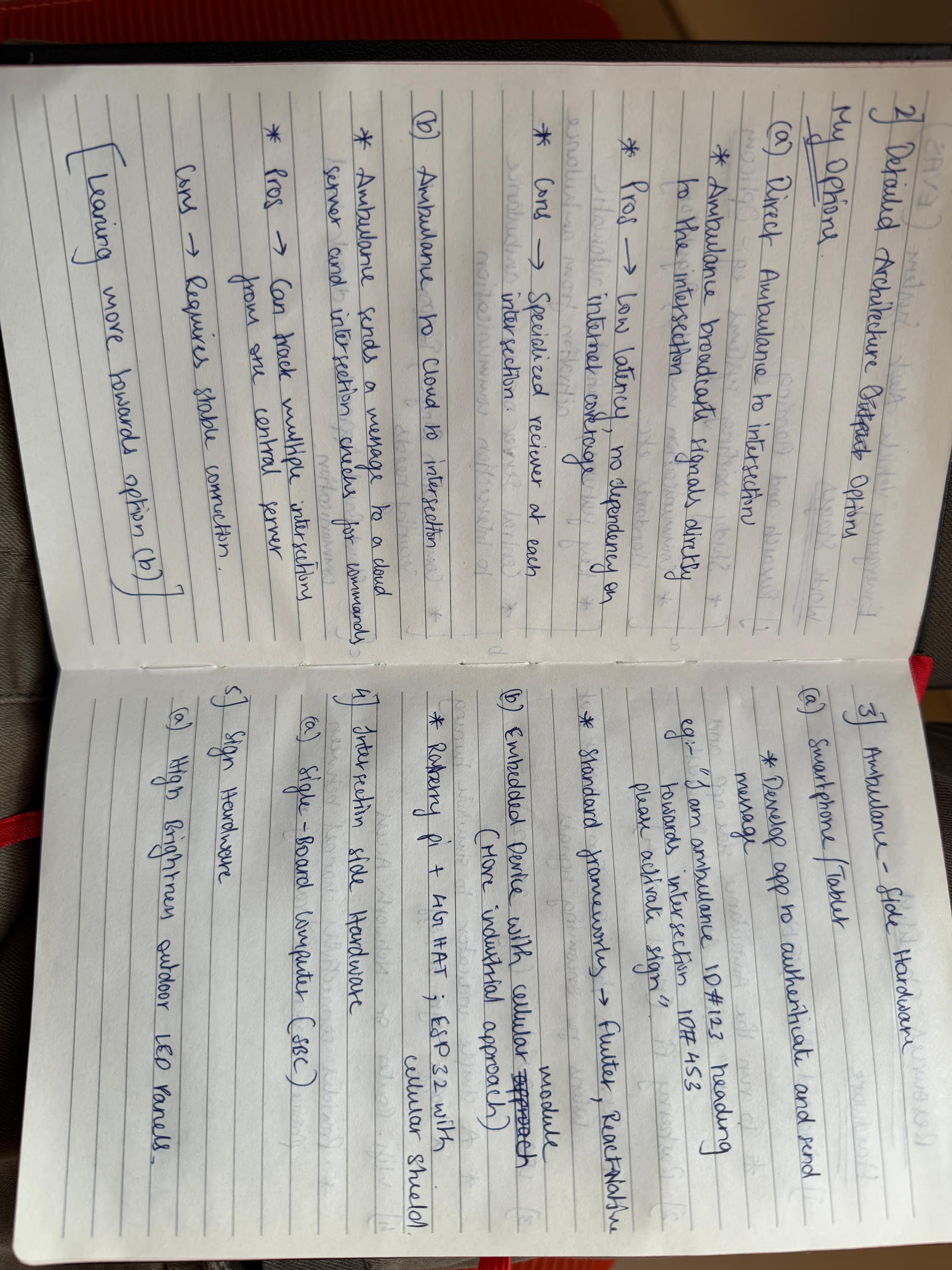
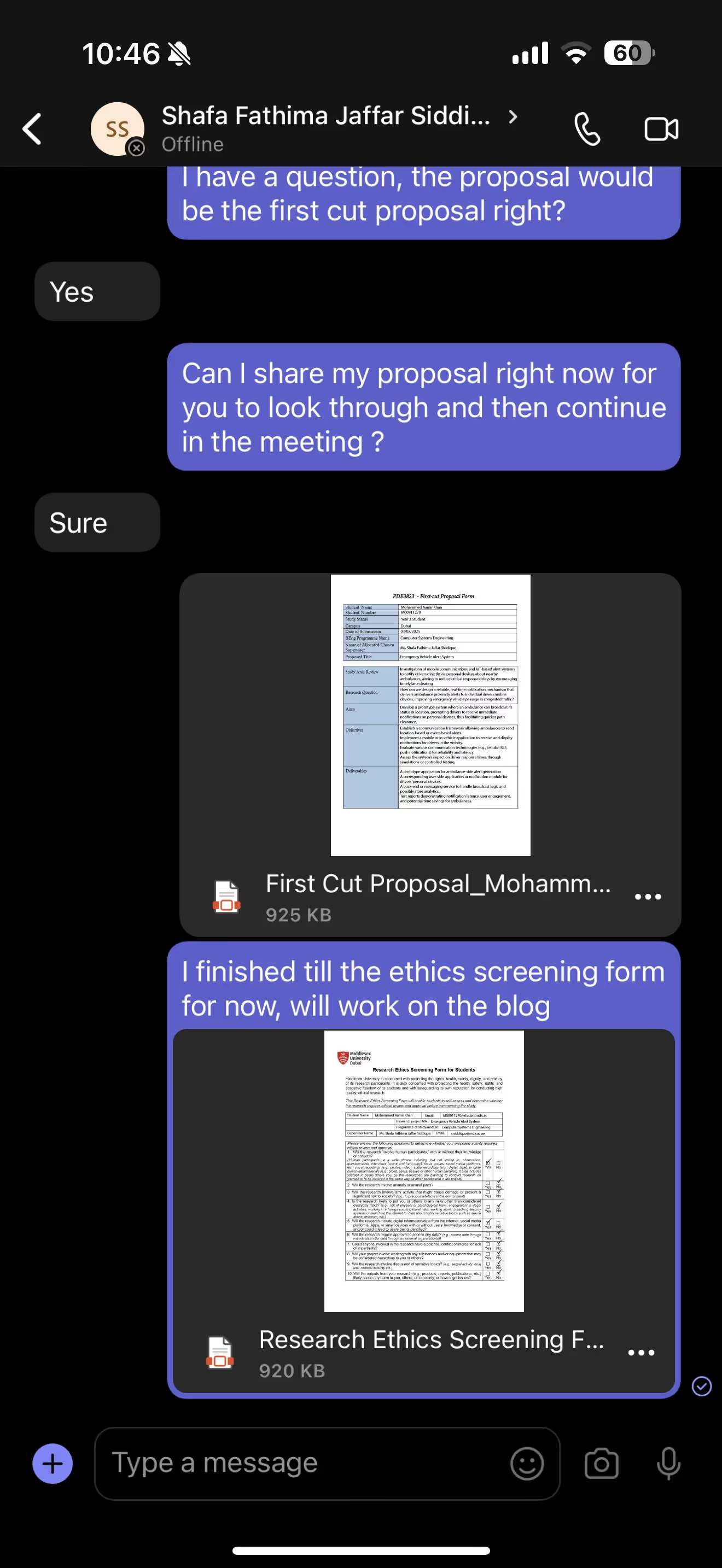

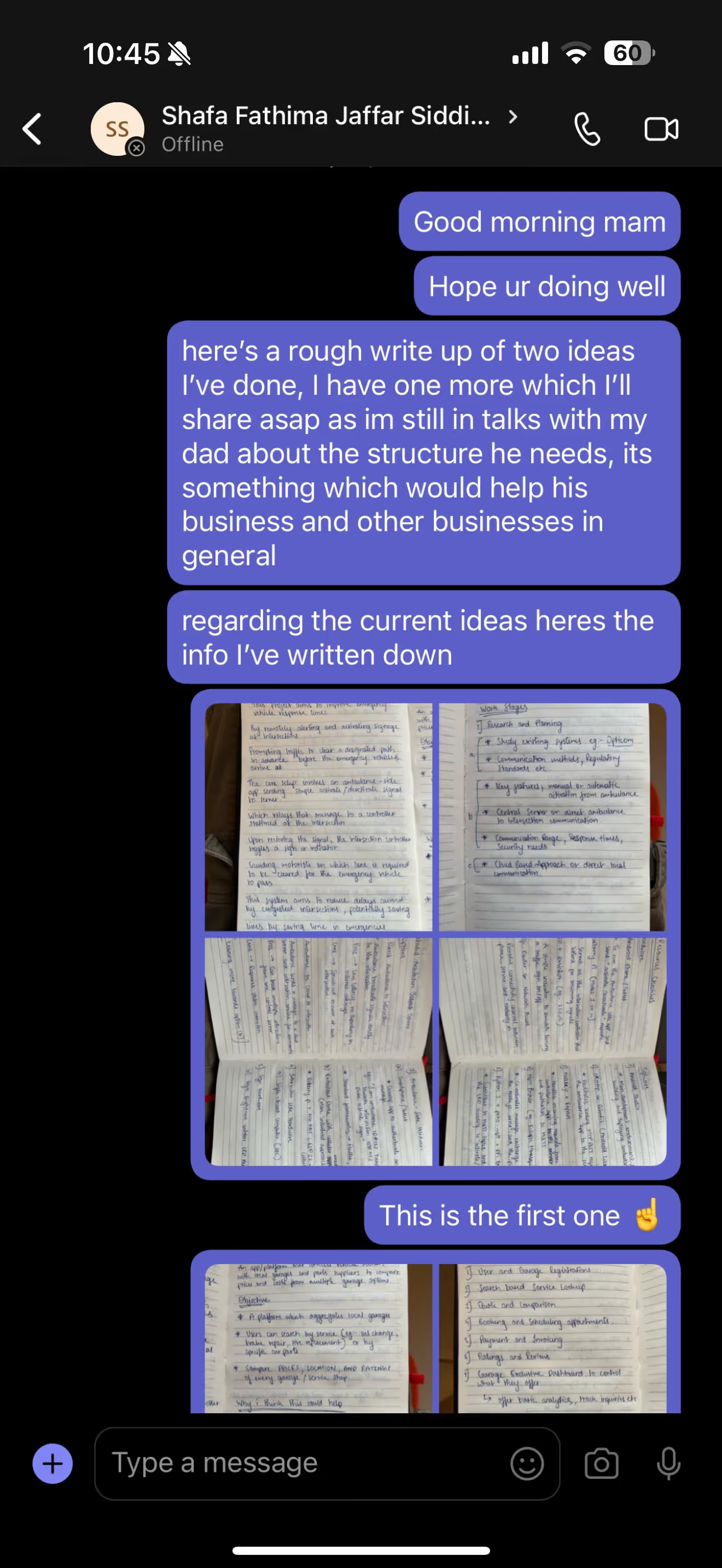
Week 2: Approval of Ethics Screening and Final Proposal
Date & Time: February 6, 2023 – 11:03 AM to 11:15 AM
Duration: 12 minutes
Attendees:
-> Me
-> Ms. Shafa
Discussion Points
During this meeting, we reviewed the first cut proposal, discussing revisions based on the initial feedback from Week 1. The focus was on refining the project aims, objectives, and scope specifically for the Emergency Vehicle Alert System and ensuring that the proposed approach meets academic standards. We also discussed the ethics screening form. Ms. Shafa confirmed that, given the minimal data collection involved (only basic notification data without sensitive information), the project would pass ethics screening. The final proposal outline was reviewed in detail, and additional suggestions were provided for clarity and enhanced project structure.
Outcomes:
• Ethics screening received approval, and no further modifications were needed regarding data collection and user privacy.
• The final project proposal was approved, incorporating the suggested revisions for clear aims and a streamlined scope.
Action Items:
• Revise the proposal based on the meeting feedback and finalize the document.
• Complete the ethics form and submit it as per university guidelines.
• Schedule a follow-up meeting to discuss the next steps in project planning and begin detailed design work.
Duration: 12 minutes
Attendees:
-> Me
-> Ms. Shafa
Discussion Points
During this meeting, we reviewed the first cut proposal, discussing revisions based on the initial feedback from Week 1. The focus was on refining the project aims, objectives, and scope specifically for the Emergency Vehicle Alert System and ensuring that the proposed approach meets academic standards. We also discussed the ethics screening form. Ms. Shafa confirmed that, given the minimal data collection involved (only basic notification data without sensitive information), the project would pass ethics screening. The final proposal outline was reviewed in detail, and additional suggestions were provided for clarity and enhanced project structure.
Outcomes:
• Ethics screening received approval, and no further modifications were needed regarding data collection and user privacy.
• The final project proposal was approved, incorporating the suggested revisions for clear aims and a streamlined scope.
Action Items:
• Revise the proposal based on the meeting feedback and finalize the document.
• Complete the ethics form and submit it as per university guidelines.
• Schedule a follow-up meeting to discuss the next steps in project planning and begin detailed design work.
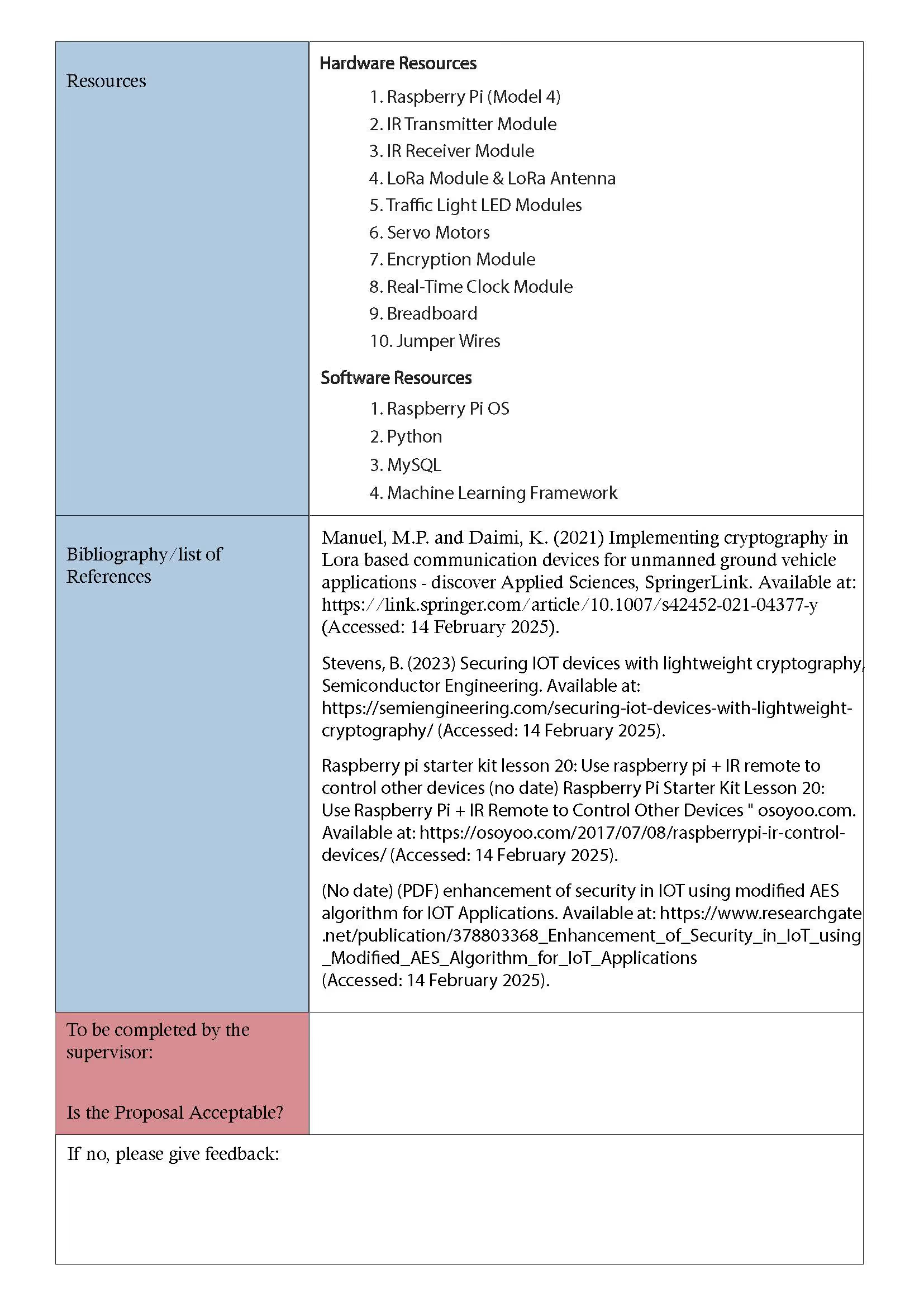



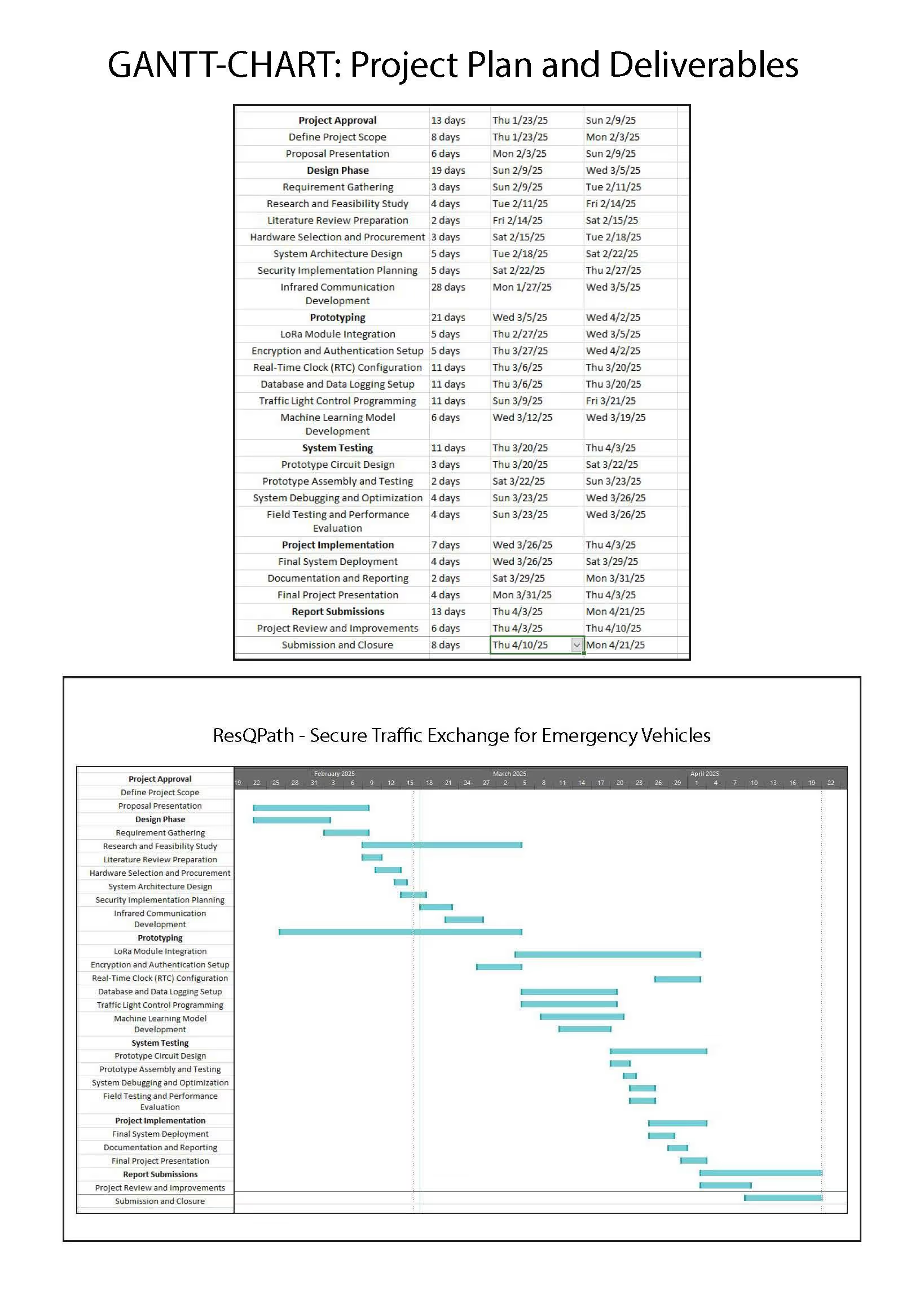
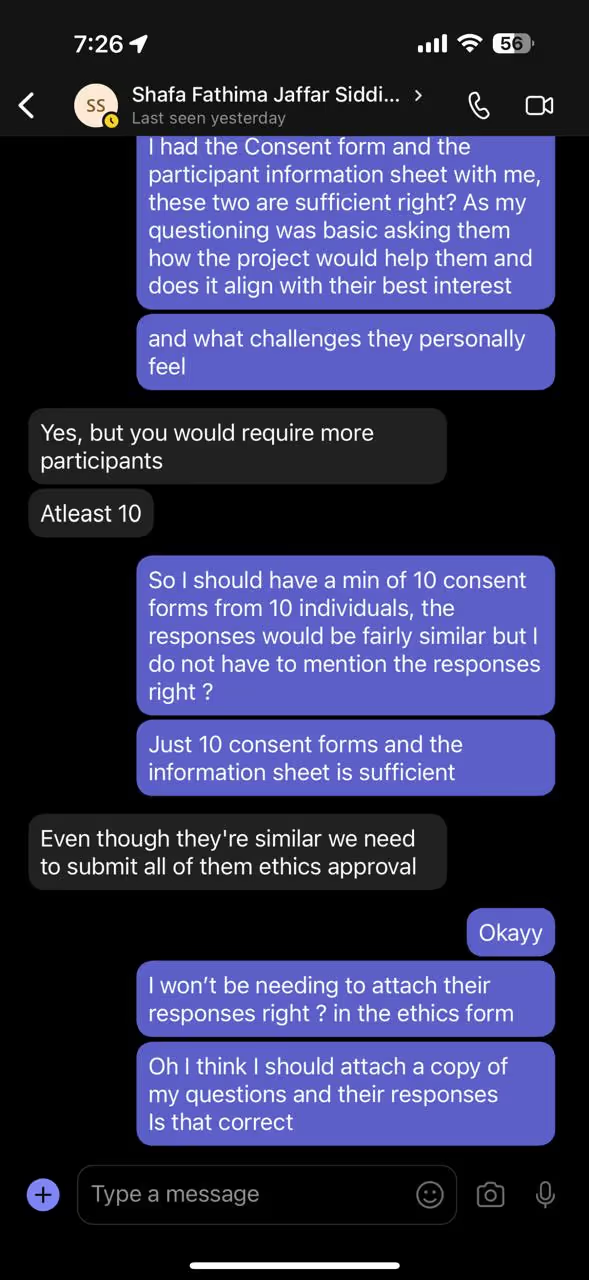
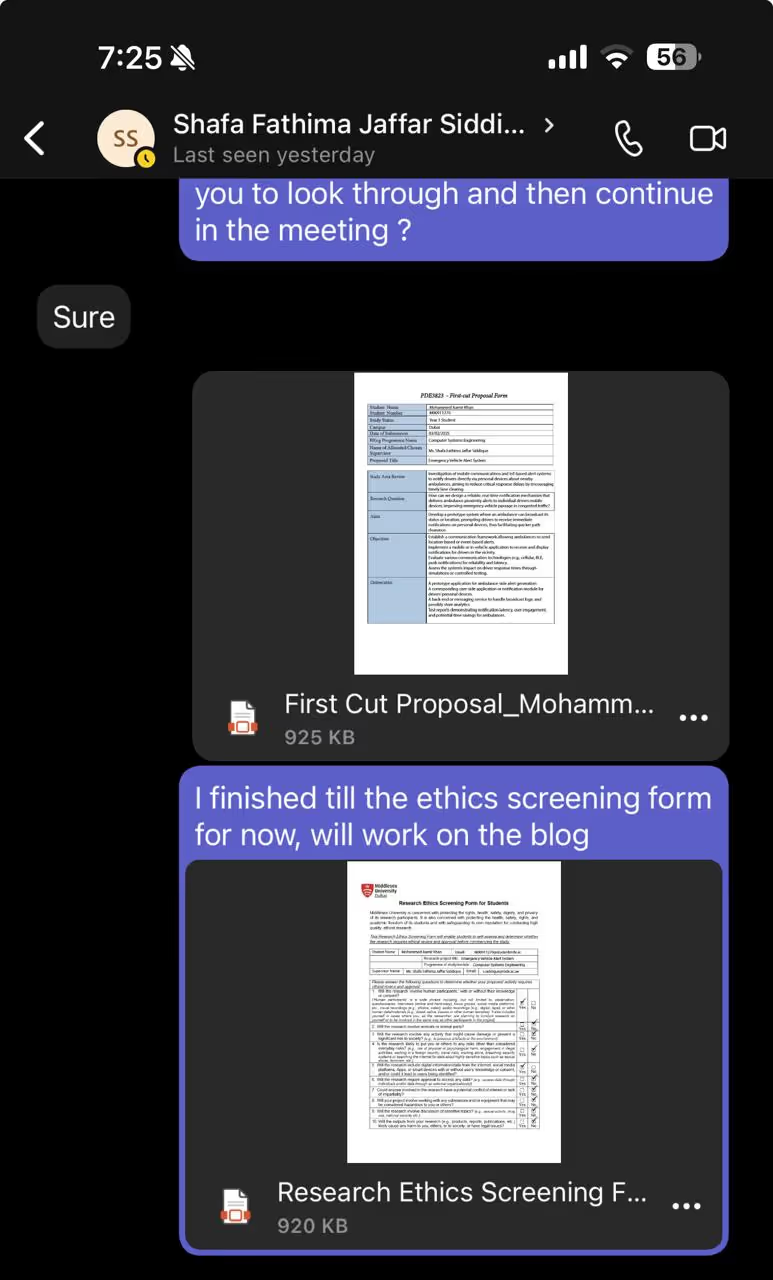
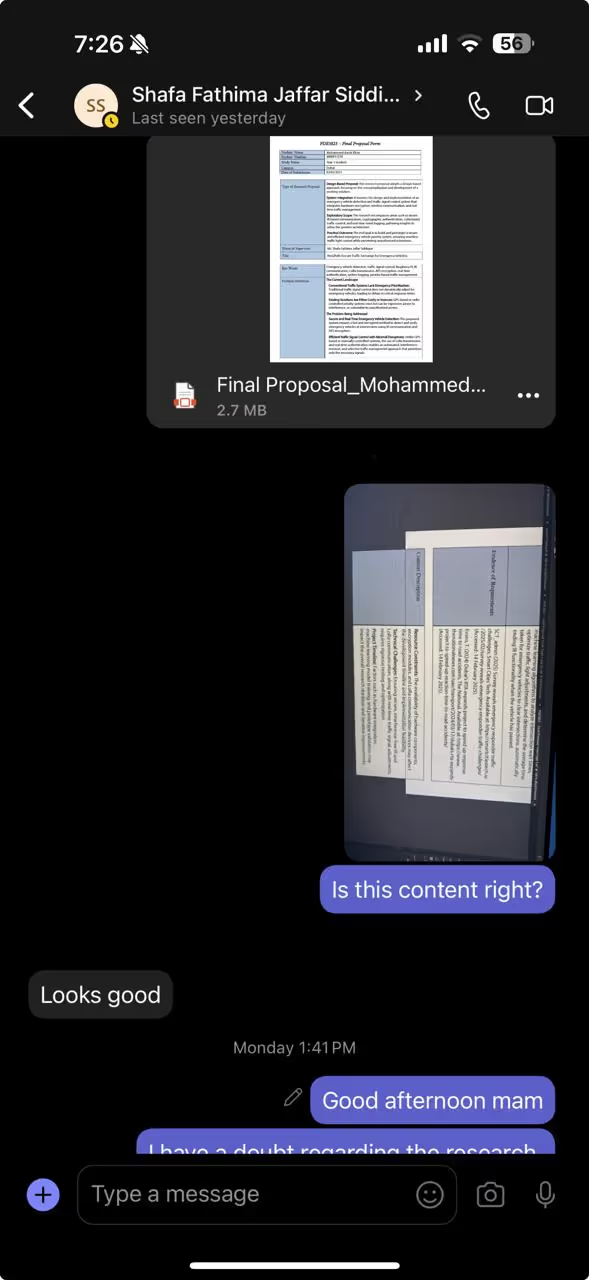
Week 3: Literature Review
Date & Time: February 13, 2023 – 2:10 PM to 2:25 PM
Duration: 15 minutes
Attendees:
-> Me
-> Ms. Shafa
Discussion Points
During this meeting, I presented a detailed review of the literature related to emergency vehicle preemption systems, smart intersection control, and real-time communication methods. We discussed research papers and case studies from global and regional projects, focusing on RF-based communication, decentralized signal control, and RTC synchronization techniques. I explained the key findings that illustrate the benefits and limitations of existing systems and highlighted areas where ResQPath could improve upon them. Additionally, we examined the relevance of Agile methodologies in addressing challenges identified in the literature.
Outcomes:
The review session helped confirm that the current design direction for ResQPath is well aligned with contemporary research.
Ms. Shafa agreed on the importance of decentralized RF communication and RTC-based synchronization for real-time override and default operations. A preliminary list of references was approved, and we identified key themes for further investigation to inform the upcoming design phases
Action Items:
• Compile a comprehensive bibliography of the identified sources.
• Summarize the key insights from the literature to incorporate them into the final proposal and system design documentation.
• Schedule the next meeting to discuss design concepts and how to integrate these research findings into the hardware and software architecture.
Duration: 15 minutes
Attendees:
-> Me
-> Ms. Shafa
Discussion Points
During this meeting, I presented a detailed review of the literature related to emergency vehicle preemption systems, smart intersection control, and real-time communication methods. We discussed research papers and case studies from global and regional projects, focusing on RF-based communication, decentralized signal control, and RTC synchronization techniques. I explained the key findings that illustrate the benefits and limitations of existing systems and highlighted areas where ResQPath could improve upon them. Additionally, we examined the relevance of Agile methodologies in addressing challenges identified in the literature.
Outcomes:
The review session helped confirm that the current design direction for ResQPath is well aligned with contemporary research.
Ms. Shafa agreed on the importance of decentralized RF communication and RTC-based synchronization for real-time override and default operations. A preliminary list of references was approved, and we identified key themes for further investigation to inform the upcoming design phases
Action Items:
• Compile a comprehensive bibliography of the identified sources.
• Summarize the key insights from the literature to incorporate them into the final proposal and system design documentation.
• Schedule the next meeting to discuss design concepts and how to integrate these research findings into the hardware and software architecture.
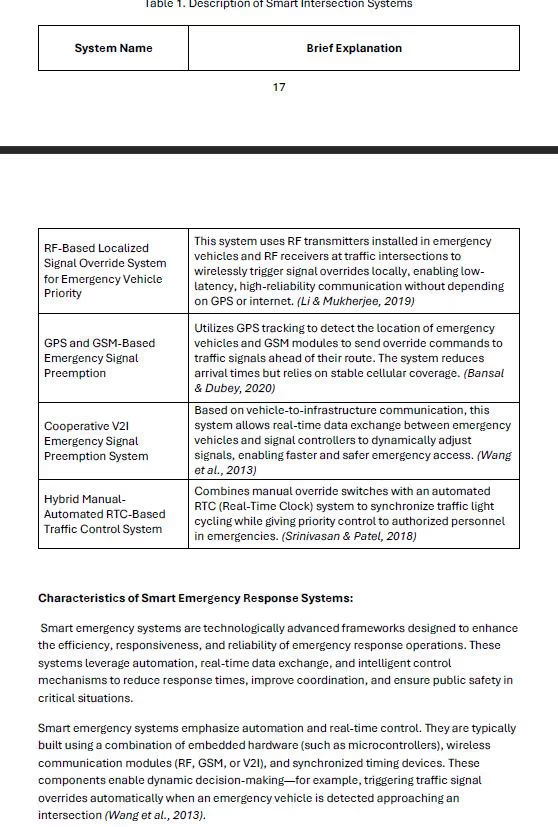
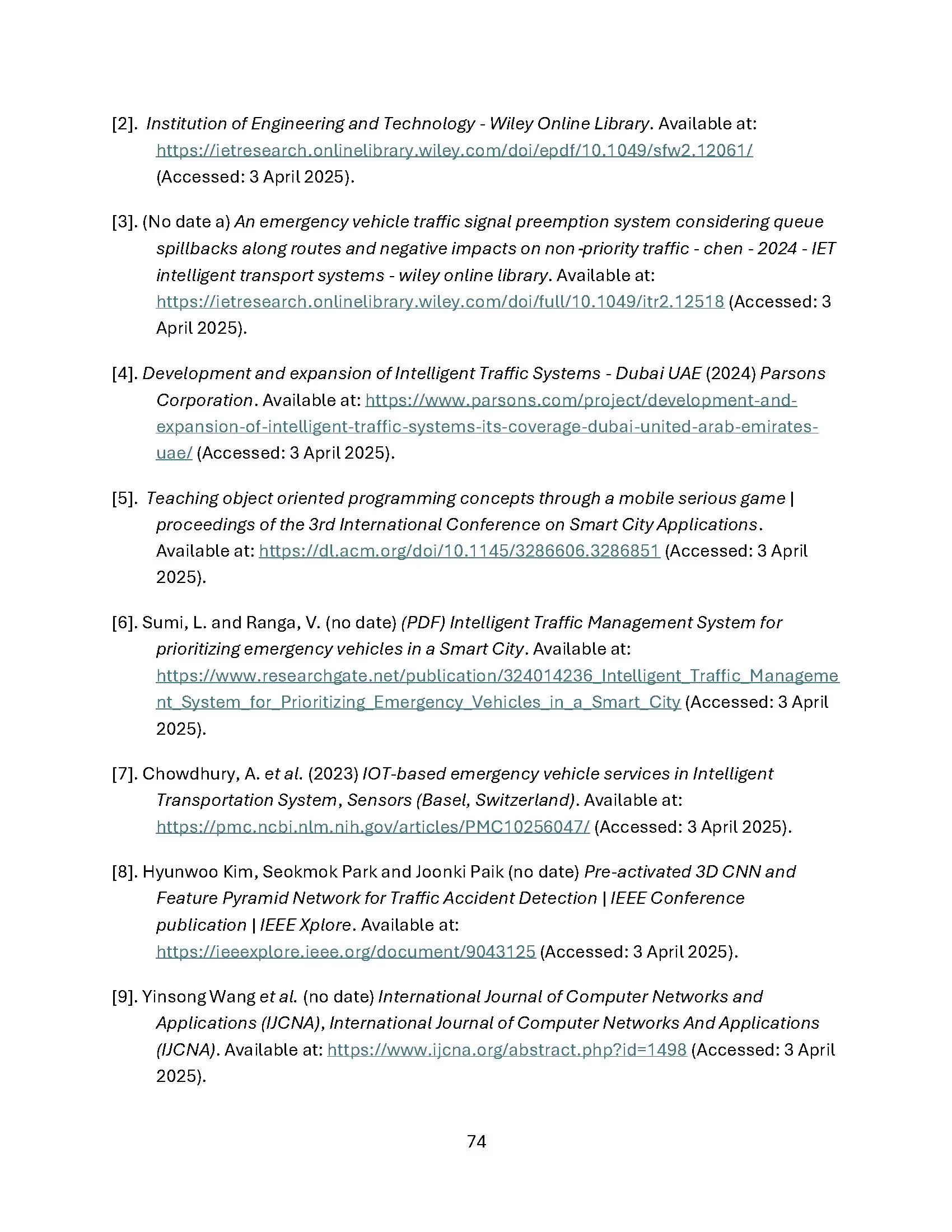
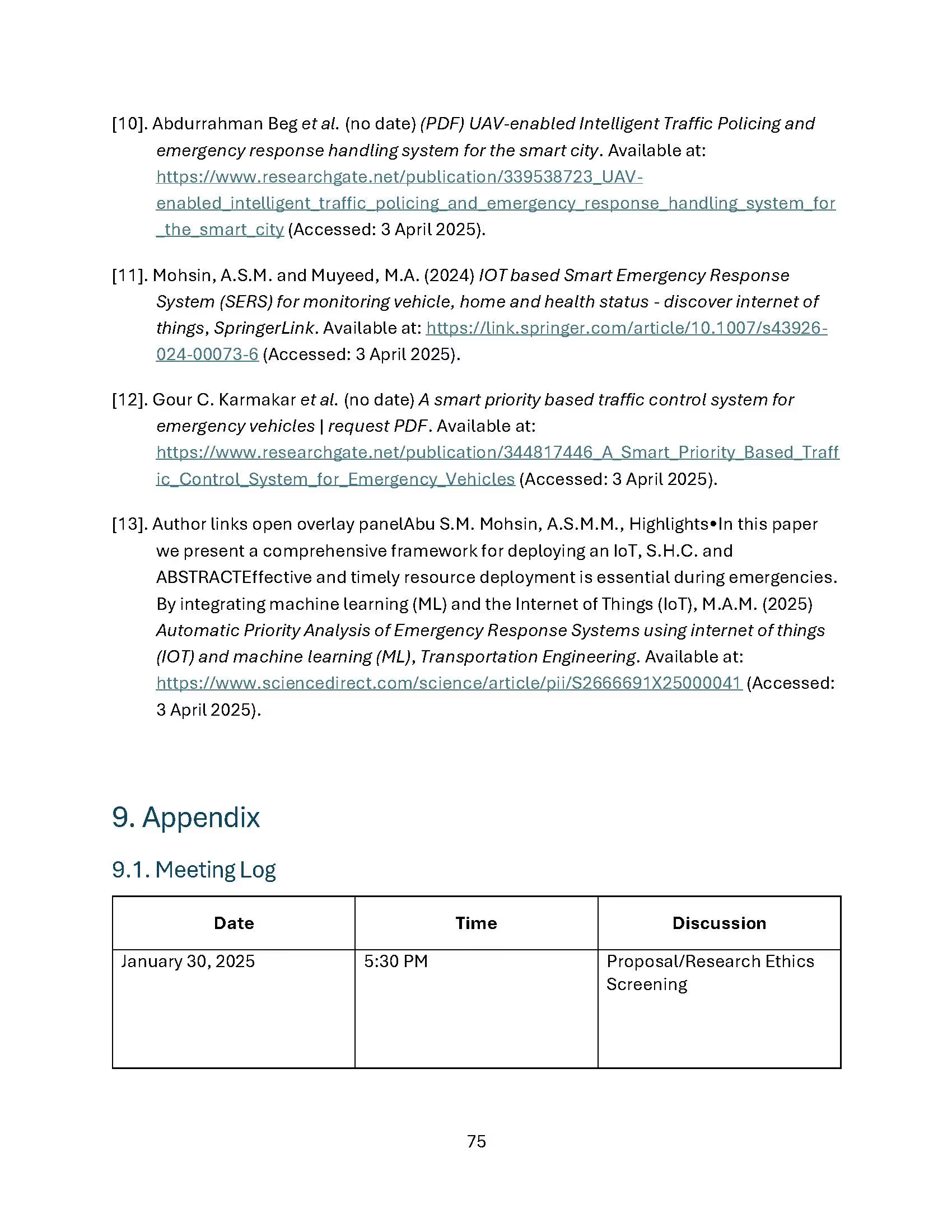
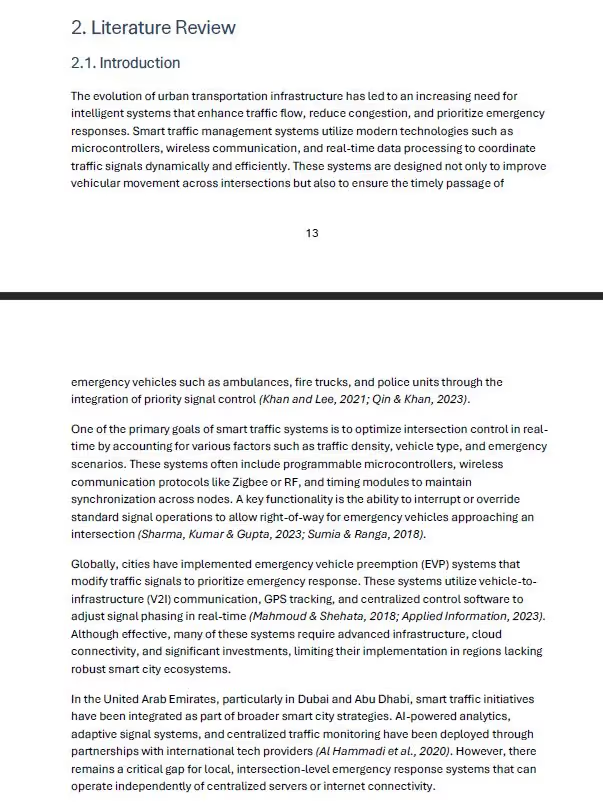
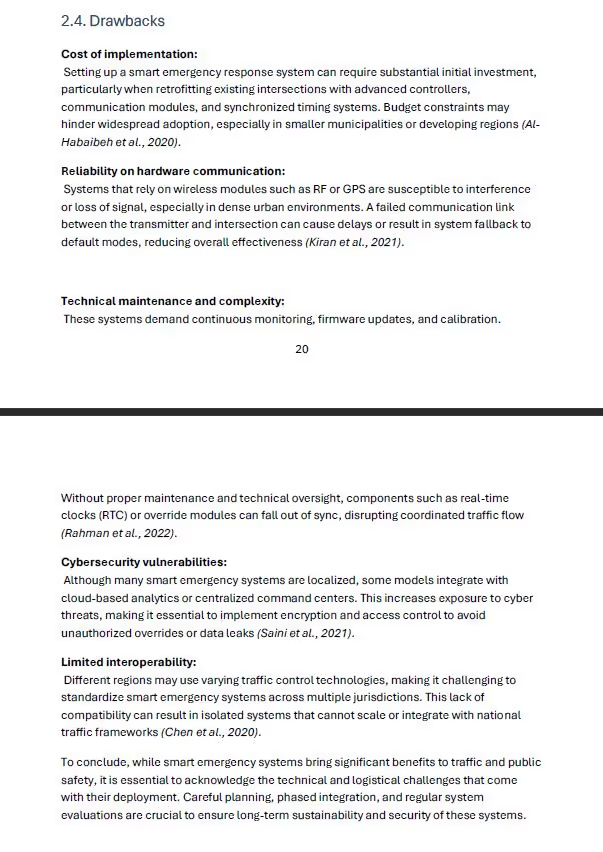
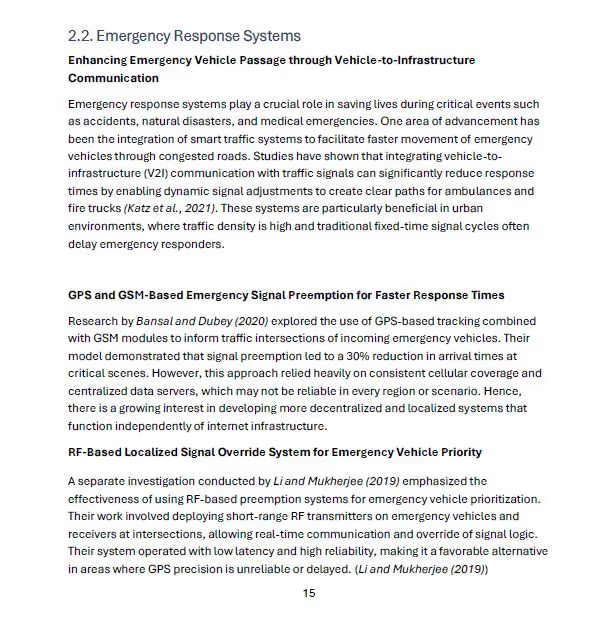
Week 4: Methodology (Design and Research)
Date & Time: February 20, 2023 – 4:00 PM to 4:10 PM
Duration: 10 minutes
Attendees:
-> Me
-> Ms. Shafa
Discussion Points
In this meeting, I presented the overall design and research methodologies chosen for ResQPath. The discussion focused on how Agile iterative development would guide the project, breaking it into manageable sprints and enabling rapid improvements. I explained the benefits of using planning tools such as Gantt charts and a work breakdown structure to organize tasks, monitor progress, and keep the project on schedule. I also elaborated on the research strategy, which included an in-depth literature review to understand current trends in emergency vehicle preemption systems, RF communications, and RTC-based synchronization. We discussed how these findings influenced the selection of components and helped in shaping the system architecture. The importance of continuous testing (unit, integration, and system testing) as part of the research phase was also reviewed.
Outcomes:
• Ms. Shafa approved the proposed Agile methodology and confirmed that the integration of planning tools would help streamline the project.
• The research approach, including key themes from the literature review (such as decentralized RF communication and real-time synchronization), was validated as a solid foundation for the design work ahead.
• A clear roadmap was established for the next sprint, focusing on the integration of hardware components and initial code development.
Action Items:
• Finalize and document the detailed Agile plan, including sprint timelines and task assignments using Gantt charts and a work breakdown structure.
• Compile the key research findings and insights into a summary that will be incorporated into the project proposal and system design documentation.
• Prepare for the next meeting to review preliminary design drafts and begin hardware integration testing.
Duration: 10 minutes
Attendees:
-> Me
-> Ms. Shafa
Discussion Points
In this meeting, I presented the overall design and research methodologies chosen for ResQPath. The discussion focused on how Agile iterative development would guide the project, breaking it into manageable sprints and enabling rapid improvements. I explained the benefits of using planning tools such as Gantt charts and a work breakdown structure to organize tasks, monitor progress, and keep the project on schedule. I also elaborated on the research strategy, which included an in-depth literature review to understand current trends in emergency vehicle preemption systems, RF communications, and RTC-based synchronization. We discussed how these findings influenced the selection of components and helped in shaping the system architecture. The importance of continuous testing (unit, integration, and system testing) as part of the research phase was also reviewed.
Outcomes:
• Ms. Shafa approved the proposed Agile methodology and confirmed that the integration of planning tools would help streamline the project.
• The research approach, including key themes from the literature review (such as decentralized RF communication and real-time synchronization), was validated as a solid foundation for the design work ahead.
• A clear roadmap was established for the next sprint, focusing on the integration of hardware components and initial code development.
Action Items:
• Finalize and document the detailed Agile plan, including sprint timelines and task assignments using Gantt charts and a work breakdown structure.
• Compile the key research findings and insights into a summary that will be incorporated into the project proposal and system design documentation.
• Prepare for the next meeting to review preliminary design drafts and begin hardware integration testing.
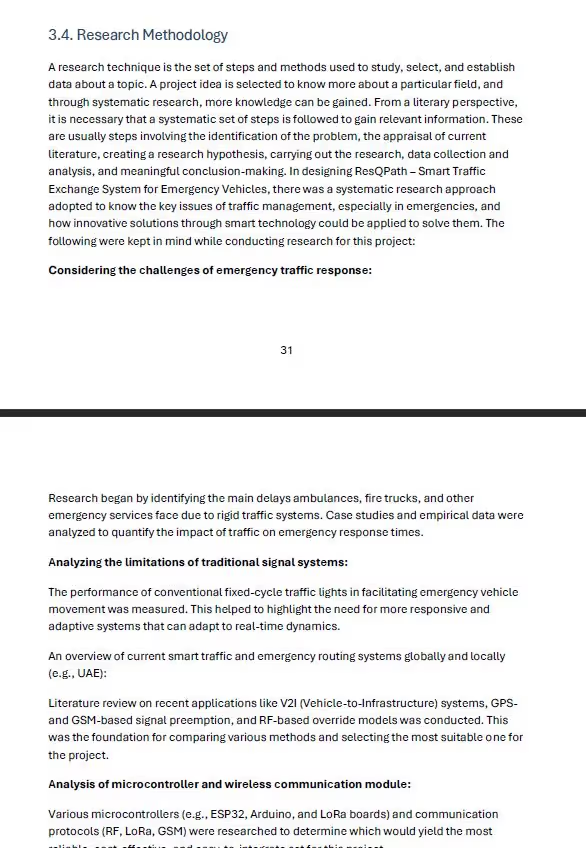
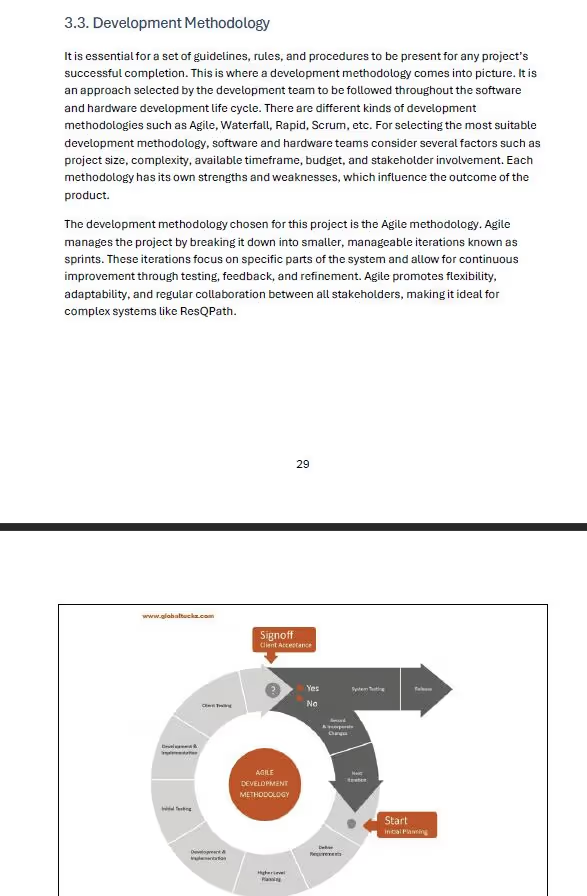
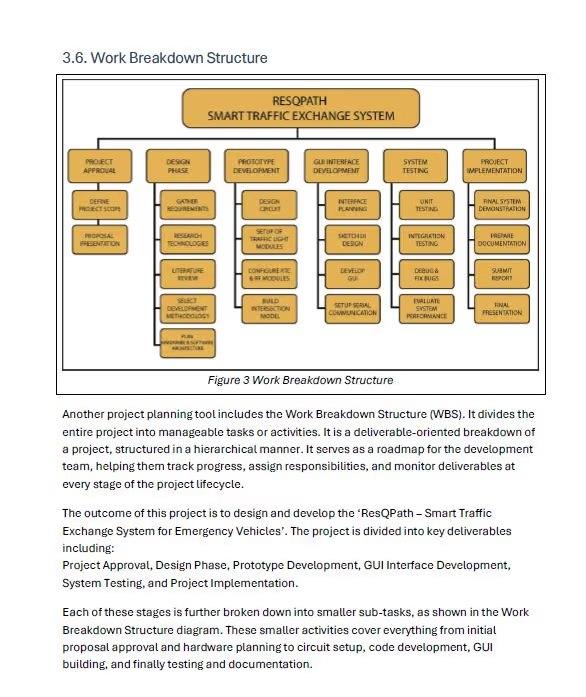
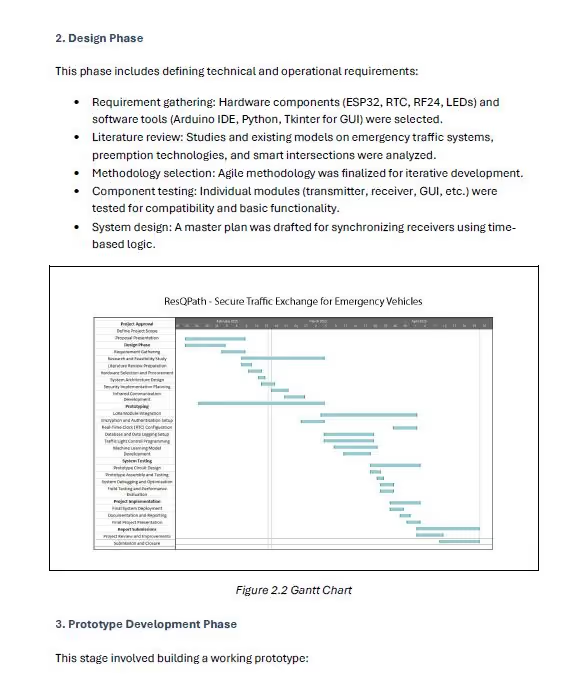
Week 5: Prototyping and Interface
Date & Time: February 27, 2023 – 3:30 PM to 3:45 PM
Duration: 15 minutes
Attendees:
-> Me
-> Ms. Shafa
Discussion Points
During the meeting, I presented the initial prototype for ResQPath. I demonstrated the hardware setup, including the ESP32 boards connected to the nRF24L01 modules, DS3231RTCs, and LED traffic light assemblies arranged on a breadboard. I explained how the connections were made using jumper wires and described the role of each component within the overall system. Additionally, I showcased the Raspberry Pi-based user interface, developed with Python and Tkinter, which serves as the control panel for sending over ride and reset commands. We discussed how the interface allows emergency vehicle operators to easily trigger specific traffic signal overrides from the 7-inch touch screen display and how the commands are transmitted via a serial connection to the ESP32transmitter. Some issues, such as minor wiring inconsistencies and a few adjustments needed in the UI for better visibility and responsiveness, were identified during the demonstration.
Outcomes:
• The initial hardware prototype was successfully assembled and demonstrated, with basic functionalities (RF transmission, RTC synchronization, and LED control)working as expected.
• The Raspberry Pi GUI interface is operational, and its button layout was found to be intuitive, although some refinements were suggested for improved clarity.
• Feedback was provided on the need to stabilize the breadboard wiring and optimize the serial communication between the Raspberry Pi and the ESP32.
Action Items:
• Recheck and secure all jumper connections on the breadboard to ensure consistent power and signal integrity.
• Make design adjustments to the GUI for better user visibility and quicker responsiveness.
• Perform further integration testing to verify that the hardware and software components work seamlessly together in different scenarios.
Duration: 15 minutes
Attendees:
-> Me
-> Ms. Shafa
Discussion Points
During the meeting, I presented the initial prototype for ResQPath. I demonstrated the hardware setup, including the ESP32 boards connected to the nRF24L01 modules, DS3231RTCs, and LED traffic light assemblies arranged on a breadboard. I explained how the connections were made using jumper wires and described the role of each component within the overall system. Additionally, I showcased the Raspberry Pi-based user interface, developed with Python and Tkinter, which serves as the control panel for sending over ride and reset commands. We discussed how the interface allows emergency vehicle operators to easily trigger specific traffic signal overrides from the 7-inch touch screen display and how the commands are transmitted via a serial connection to the ESP32transmitter. Some issues, such as minor wiring inconsistencies and a few adjustments needed in the UI for better visibility and responsiveness, were identified during the demonstration.
Outcomes:
• The initial hardware prototype was successfully assembled and demonstrated, with basic functionalities (RF transmission, RTC synchronization, and LED control)working as expected.
• The Raspberry Pi GUI interface is operational, and its button layout was found to be intuitive, although some refinements were suggested for improved clarity.
• Feedback was provided on the need to stabilize the breadboard wiring and optimize the serial communication between the Raspberry Pi and the ESP32.
Action Items:
• Recheck and secure all jumper connections on the breadboard to ensure consistent power and signal integrity.
• Make design adjustments to the GUI for better user visibility and quicker responsiveness.
• Perform further integration testing to verify that the hardware and software components work seamlessly together in different scenarios.
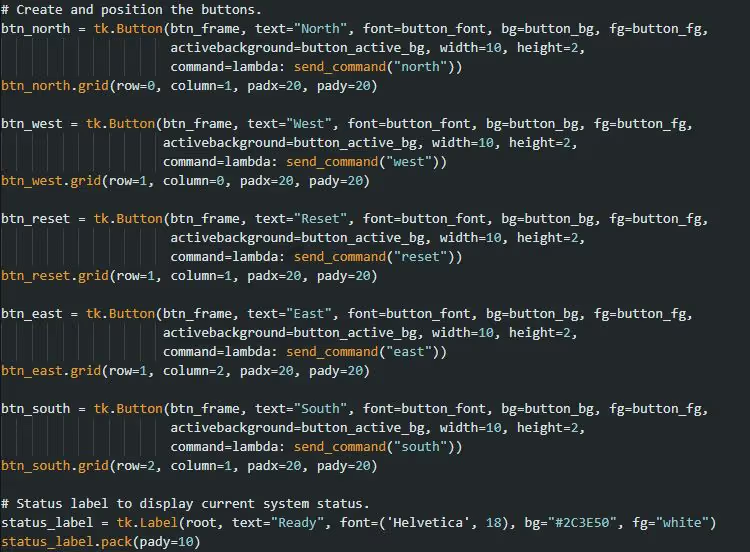
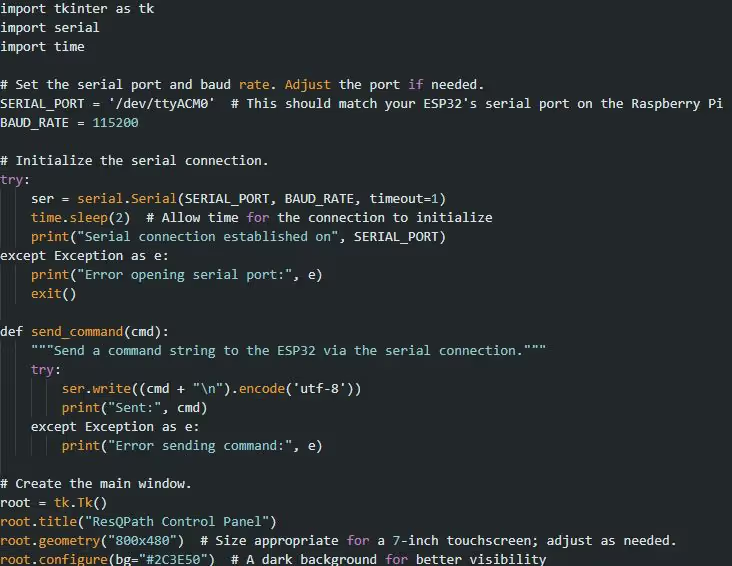
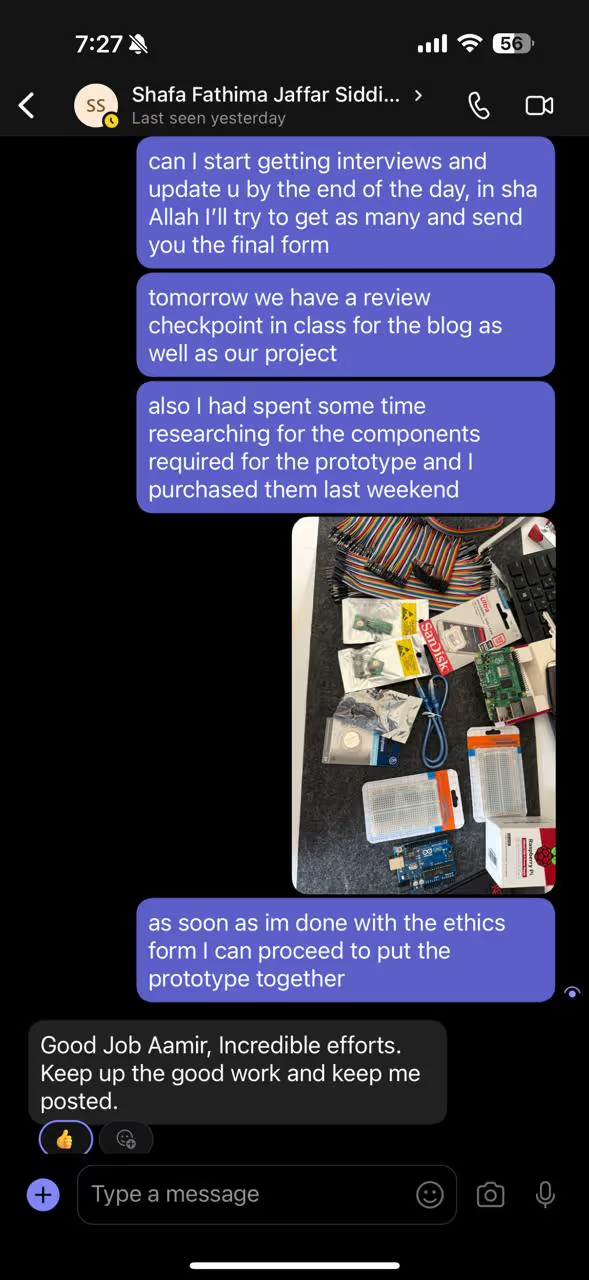
Week 6: UML Diagrams and UI Testing
Date & Time: March 6, 2023 – 10:15 AM to 10:25 AM
Duration: 10 minutes
Attendees:
-> Me
-> Ms. Shafa
Discussion Points
During this session, I presented the UML diagrams, including the use case diagram and block diagram, which detail the interactions within the ResQPath system. We reviewed the diagrams to ensure they clearly illustrated how the system functions, and feedback was provided to improve clarity and detail. Additionally, I conducted initial UI testing of the Raspberry Pi-based control panel, verifying that the GUI responded correctly to user inputs and accurately sent commands through the serial connection. The test focused on button functionality, navigation ease, and real-time status updates.
Outcomes:
• UML diagrams were approved with minor suggestions for refinement.
• UI testing confirmed that the interface is functional and user-friendly, though a few layout adjustments were recommended for optimal responsiveness.
Action Items:
• Revise UML diagrams based on the feedback received.
• Refine the UI design to improve button layout and screen transitions.
• Schedule a follow-up session to integrate UI improvements into overall system testing.
Duration: 10 minutes
Attendees:
-> Me
-> Ms. Shafa
Discussion Points
During this session, I presented the UML diagrams, including the use case diagram and block diagram, which detail the interactions within the ResQPath system. We reviewed the diagrams to ensure they clearly illustrated how the system functions, and feedback was provided to improve clarity and detail. Additionally, I conducted initial UI testing of the Raspberry Pi-based control panel, verifying that the GUI responded correctly to user inputs and accurately sent commands through the serial connection. The test focused on button functionality, navigation ease, and real-time status updates.
Outcomes:
• UML diagrams were approved with minor suggestions for refinement.
• UI testing confirmed that the interface is functional and user-friendly, though a few layout adjustments were recommended for optimal responsiveness.
Action Items:
• Revise UML diagrams based on the feedback received.
• Refine the UI design to improve button layout and screen transitions.
• Schedule a follow-up session to integrate UI improvements into overall system testing.
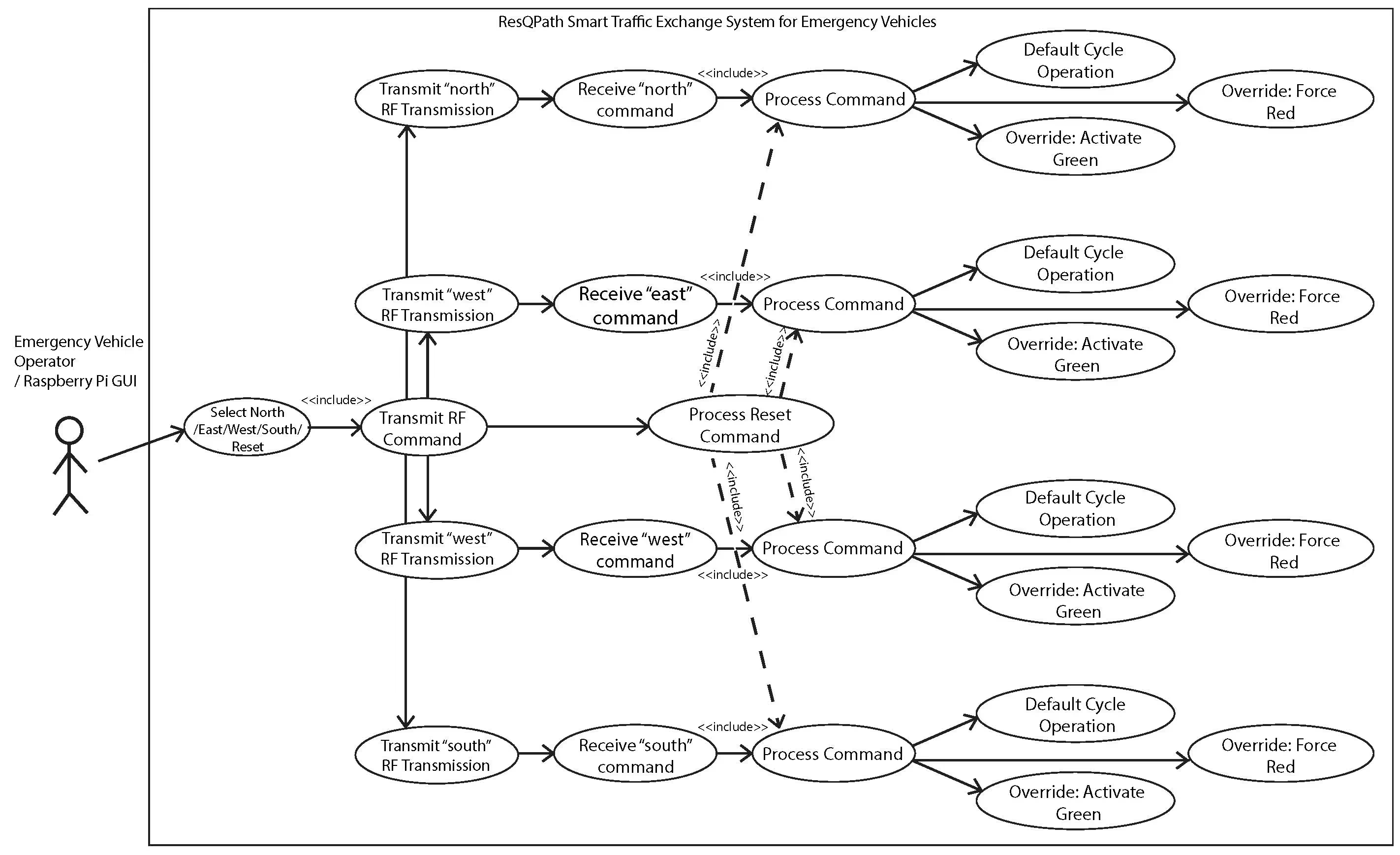
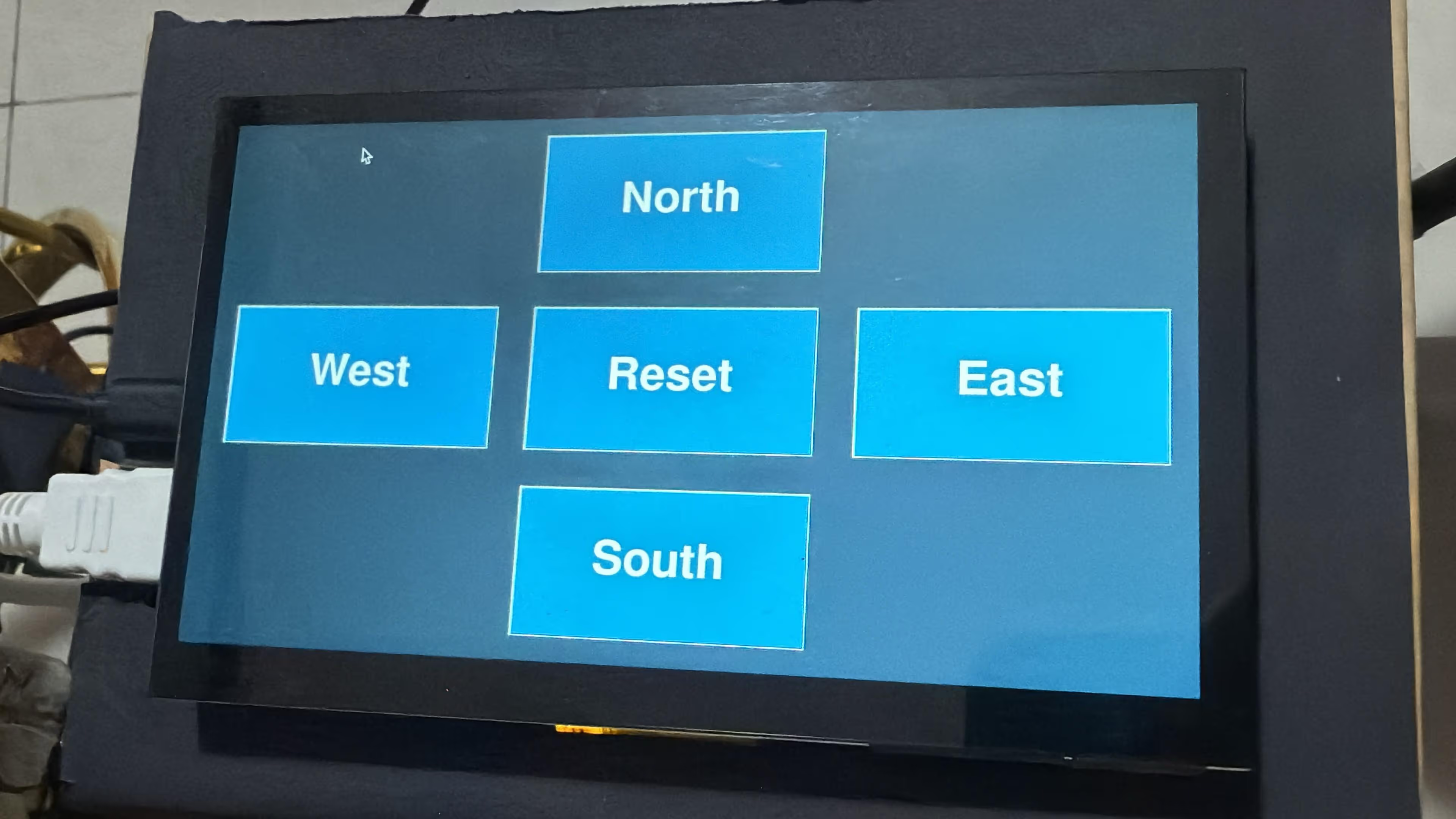
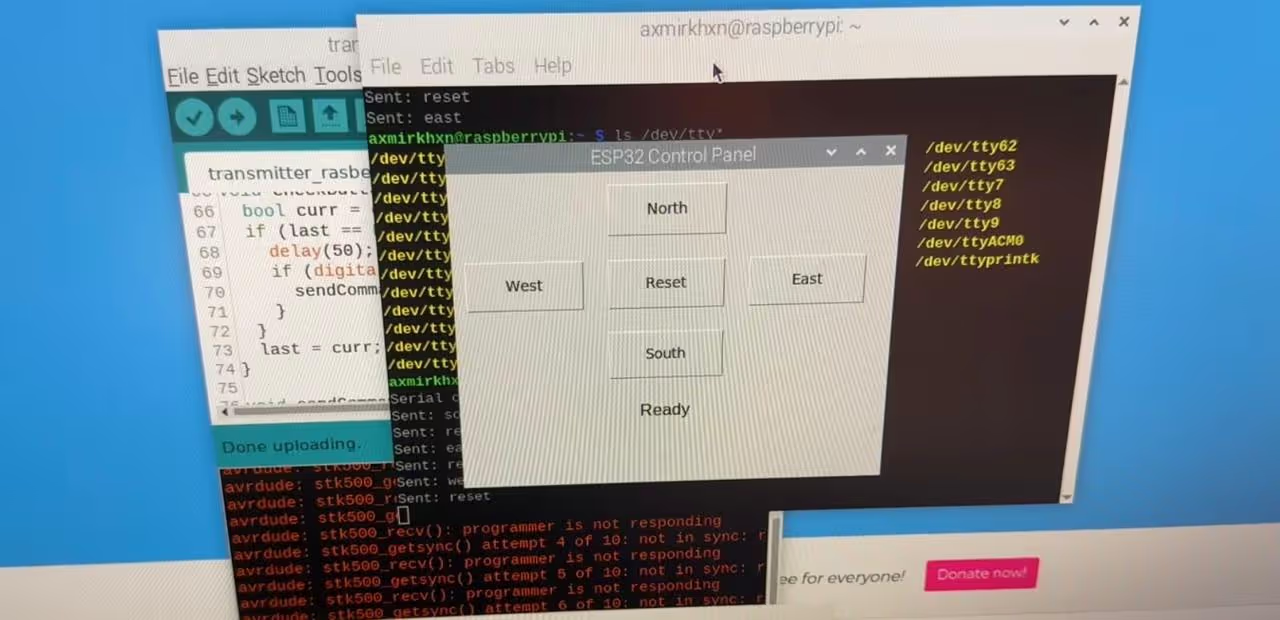
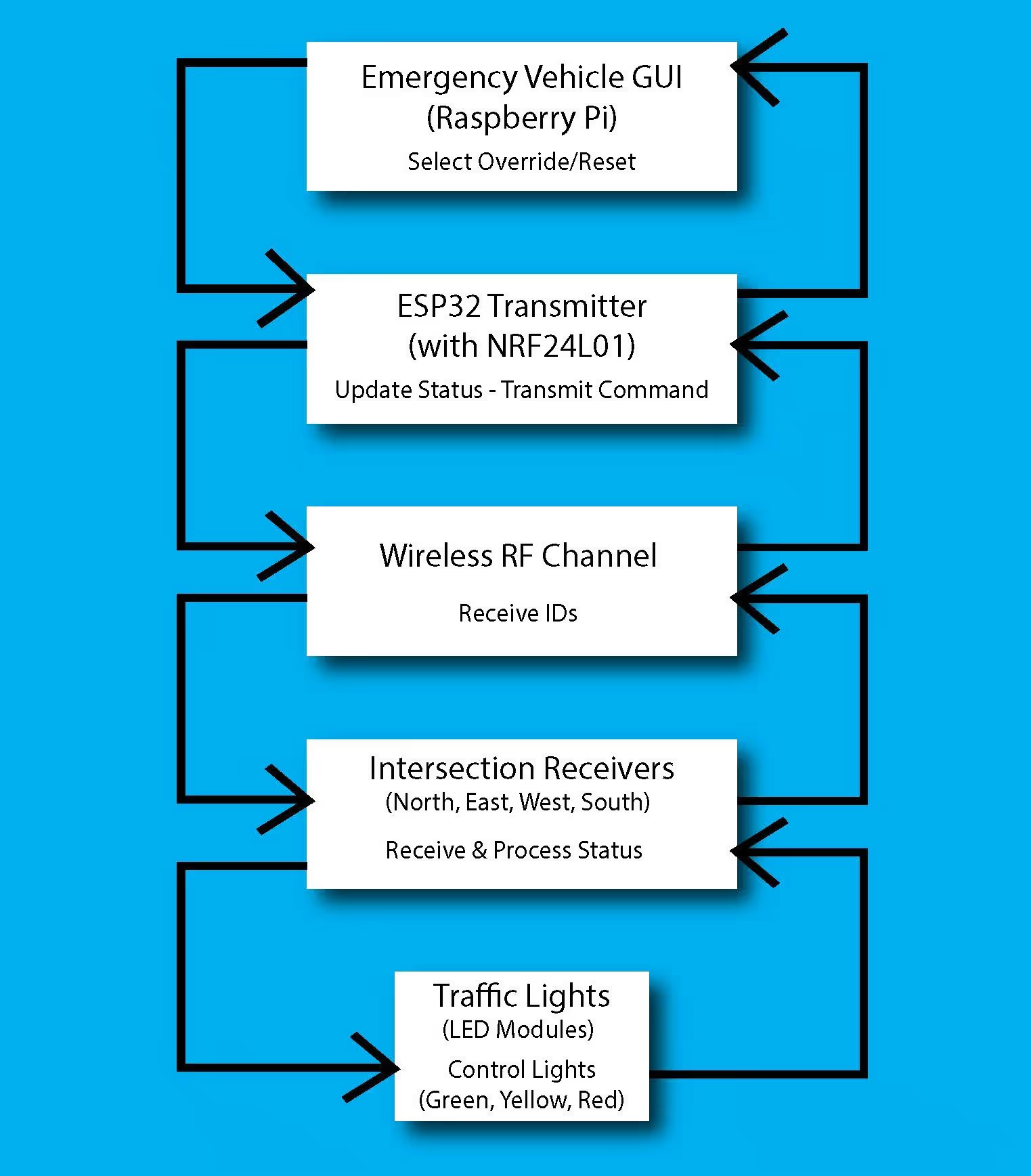
Week 7: Interview and Ethics Approval
Date & Time: March 13, 2023 – 12:00 PM to 12:10 PM
Duration: 10 minutes
Attendees:
-> Me
-> Ms. Shafa
Discussion Points
During this meeting, I presented the interview plan for gathering user feedback on the ResQPath system. We discussed the interview questions and protocols to ensure that the process captures meaningful insights from emergency vehicle operators while respecting user privacy. Ms. Shafa reviewed the ethics form details, and we confirmed that the project meets the necessary ethical standards regarding data collection and privacy. The discussion also covered how to document consent and handle any sensitive user information.
Outcomes:
• The ethics approval was confirmed, and the final ethics form was ready for submission.
• The interview plan was refined with a set of clear, concise questions that focus on user experience and system usability.
• A timeline for conducting interviews was tentatively established for further user feedback.
Action Items:
• Submit the completed ethics form to the relevant committee.
• Finalize the interview guide and schedule interviews with selected emergency personnel.
• Prepare a brief summary report on initial interview feedback for review in the next meeting.
Duration: 10 minutes
Attendees:
-> Me
-> Ms. Shafa
Discussion Points
During this meeting, I presented the interview plan for gathering user feedback on the ResQPath system. We discussed the interview questions and protocols to ensure that the process captures meaningful insights from emergency vehicle operators while respecting user privacy. Ms. Shafa reviewed the ethics form details, and we confirmed that the project meets the necessary ethical standards regarding data collection and privacy. The discussion also covered how to document consent and handle any sensitive user information.
Outcomes:
• The ethics approval was confirmed, and the final ethics form was ready for submission.
• The interview plan was refined with a set of clear, concise questions that focus on user experience and system usability.
• A timeline for conducting interviews was tentatively established for further user feedback.
Action Items:
• Submit the completed ethics form to the relevant committee.
• Finalize the interview guide and schedule interviews with selected emergency personnel.
• Prepare a brief summary report on initial interview feedback for review in the next meeting.
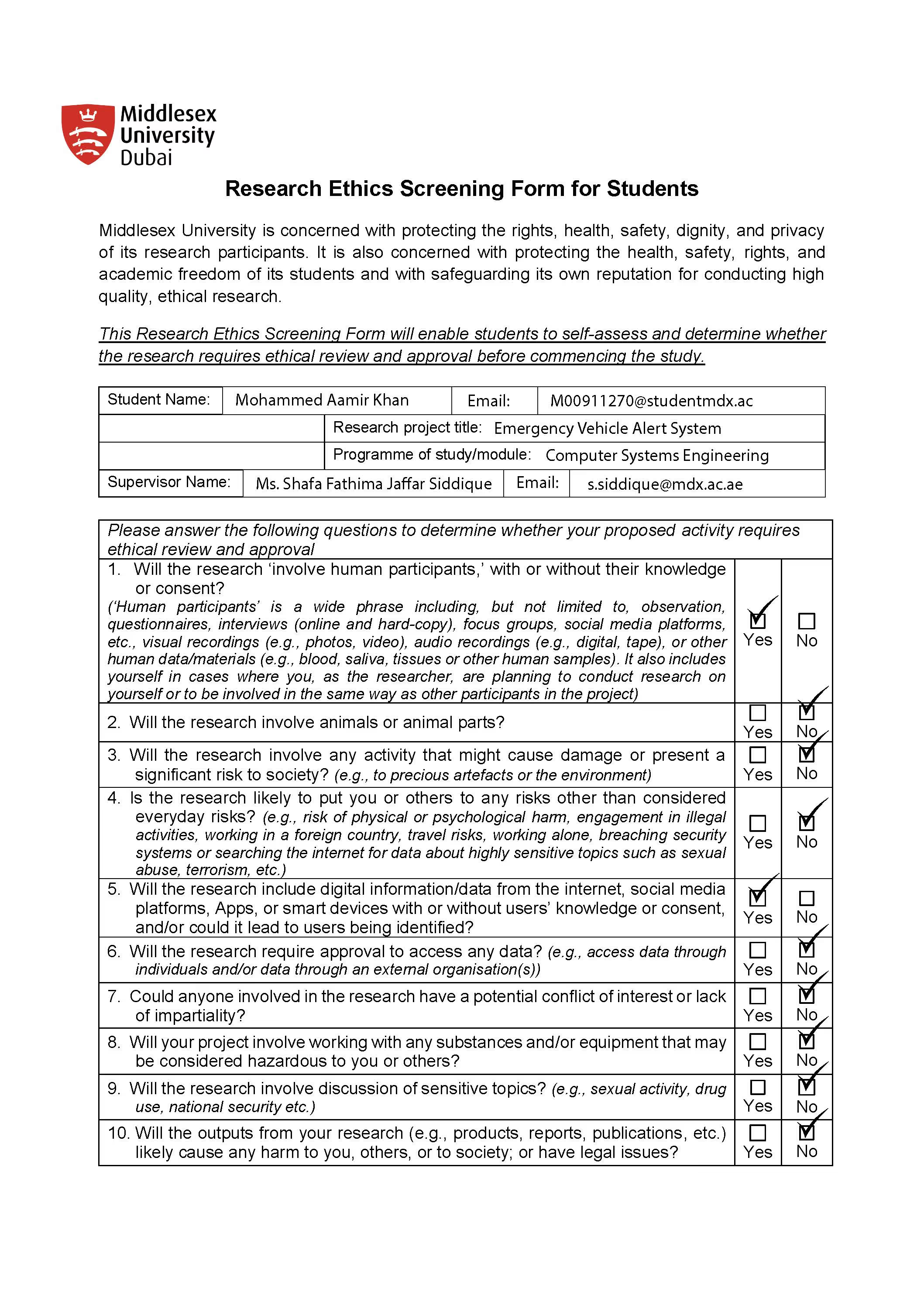
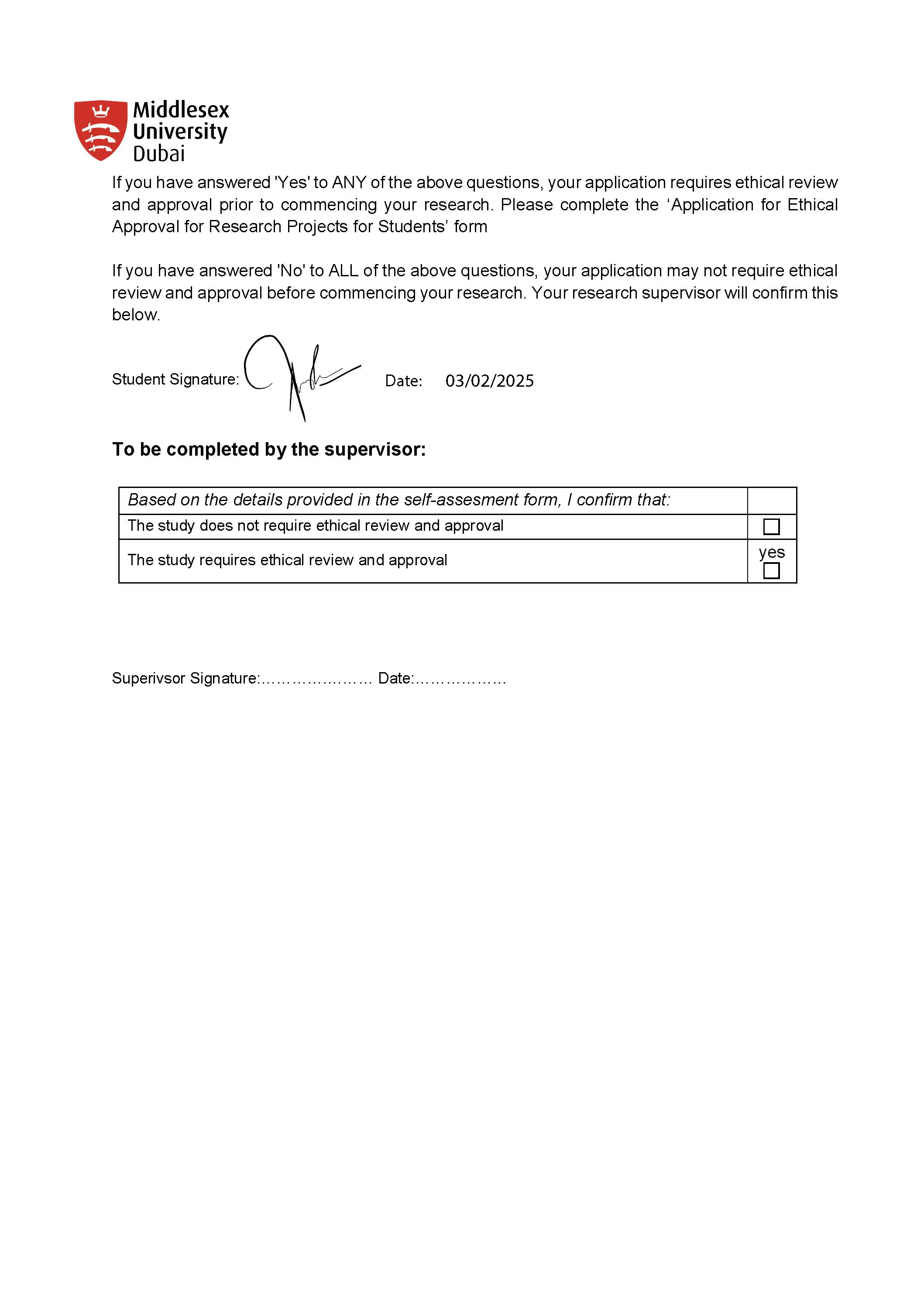
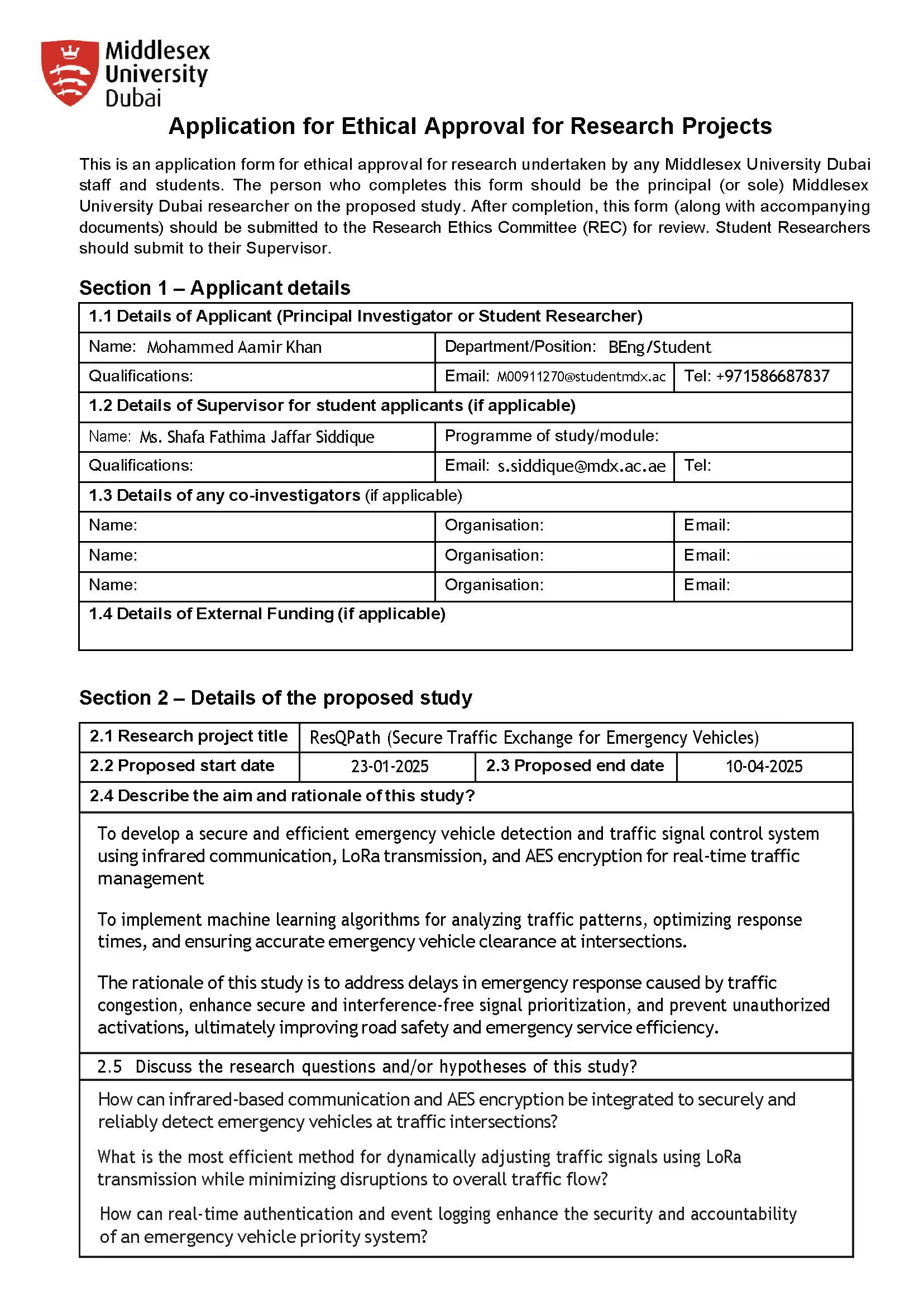
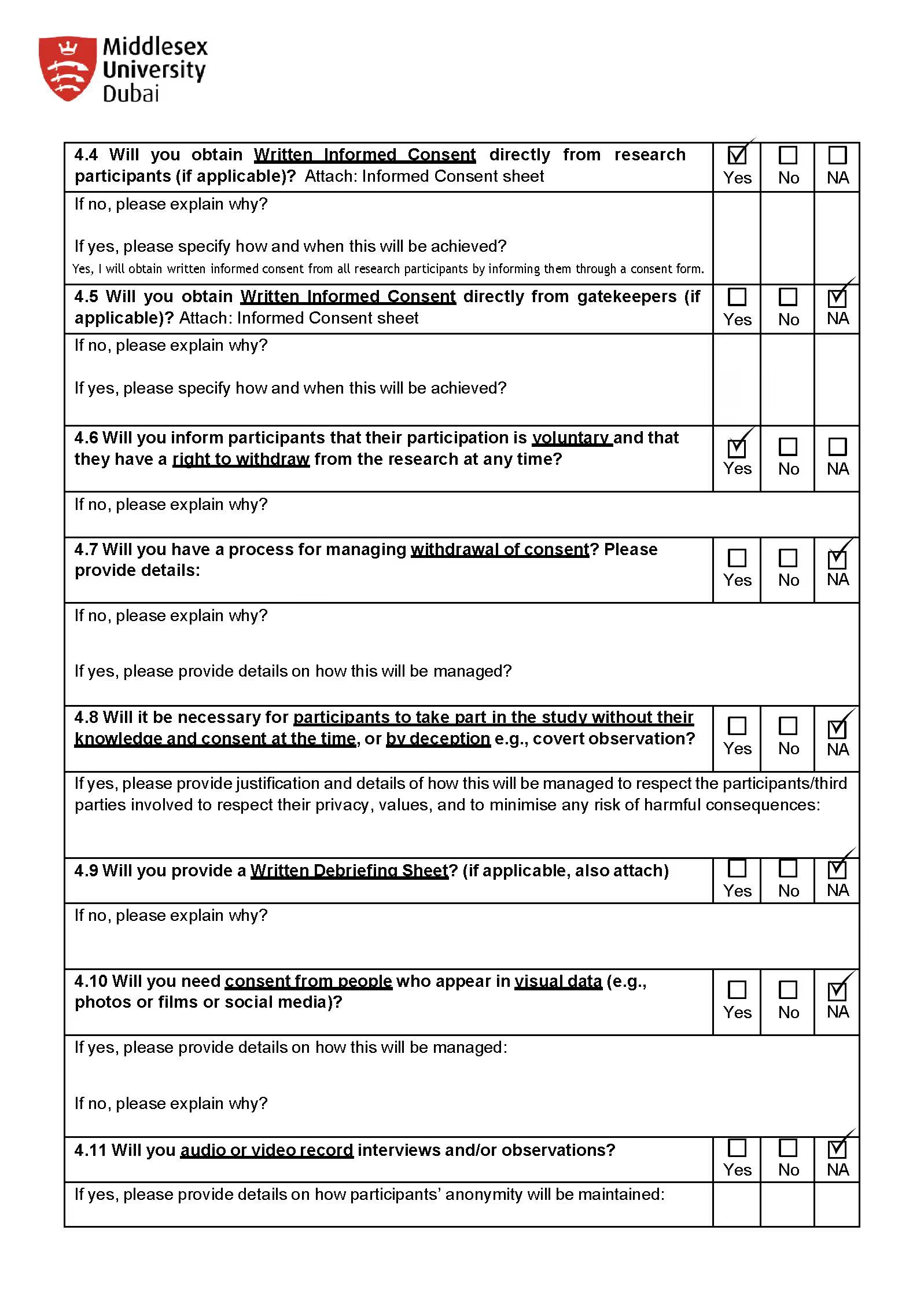
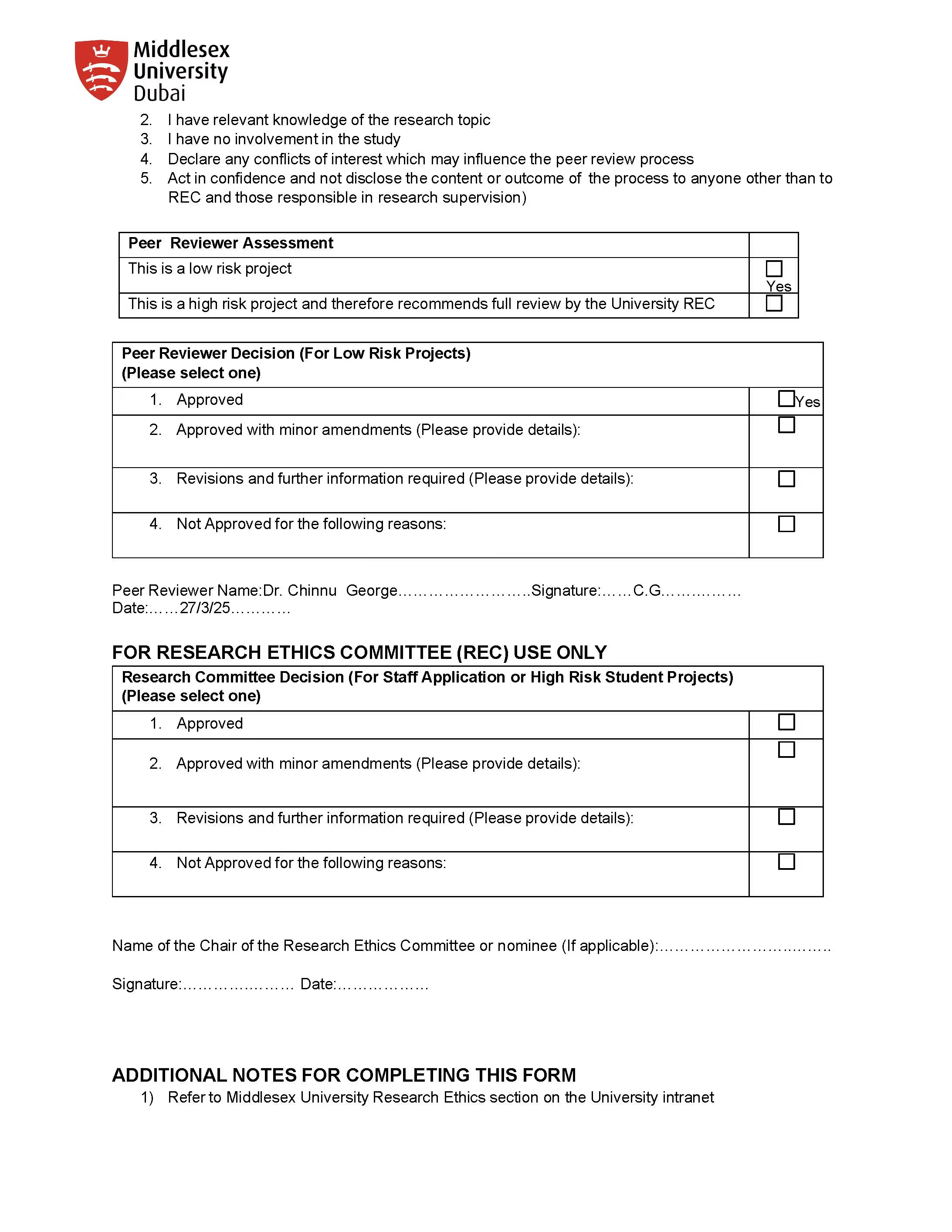
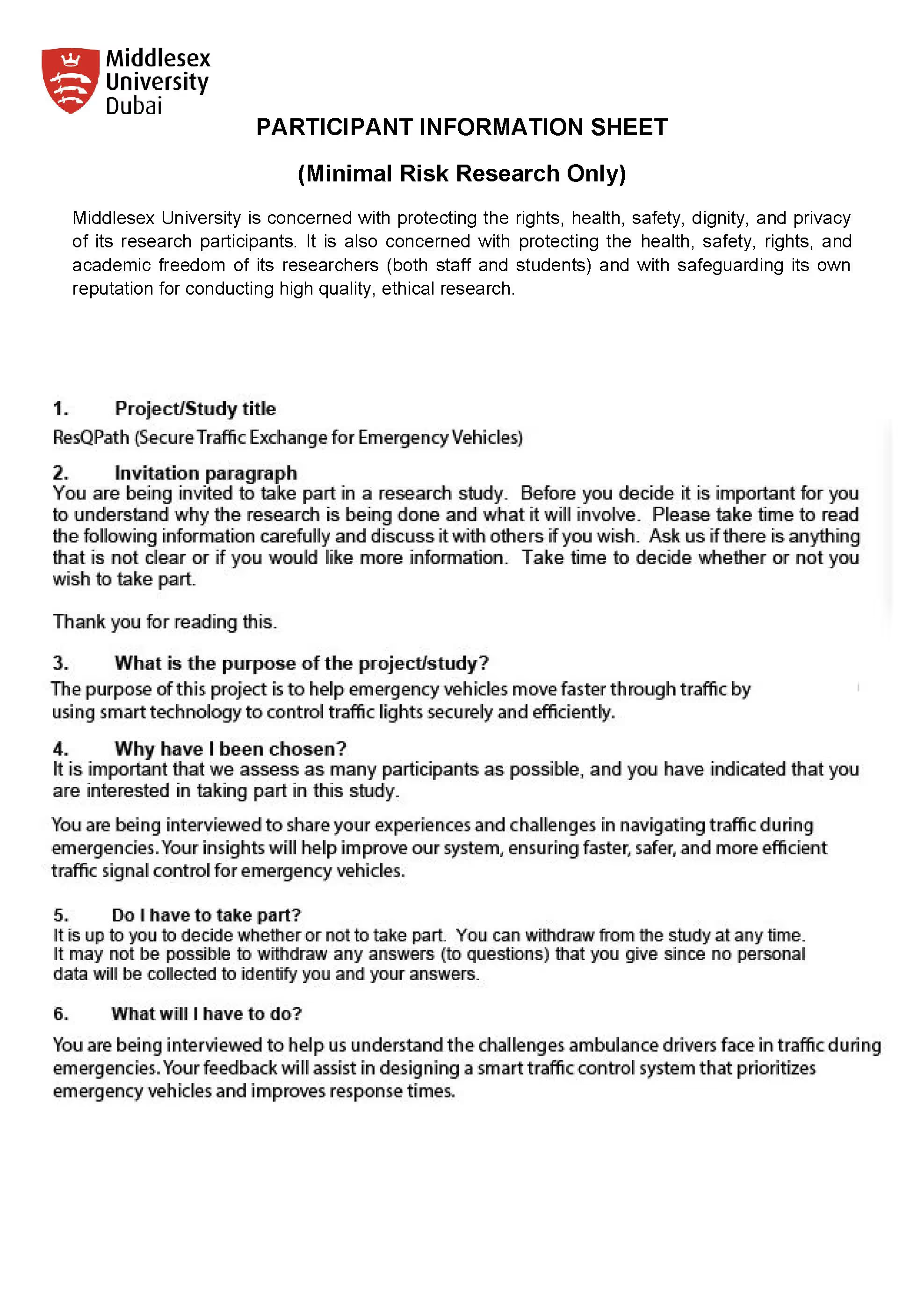
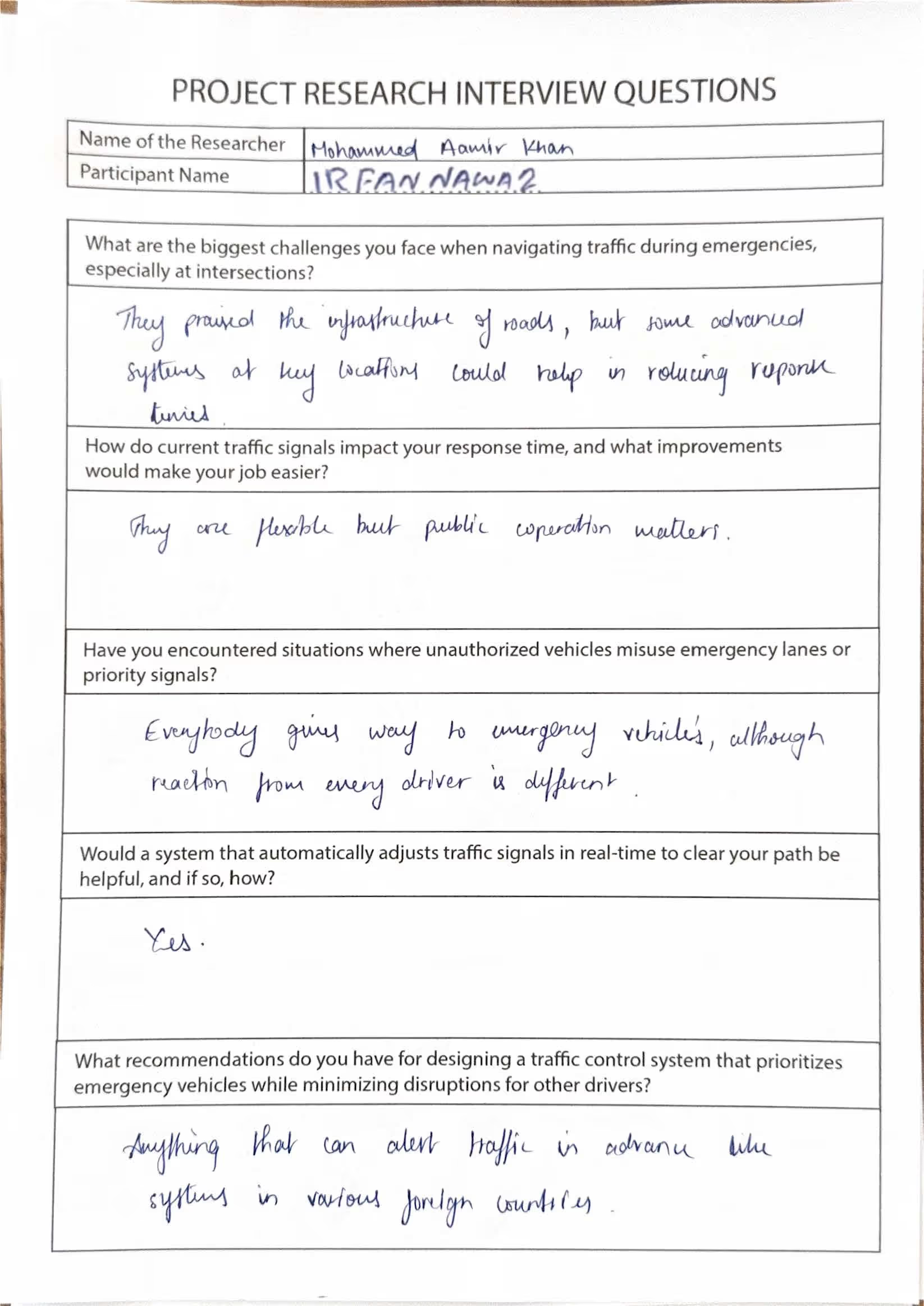
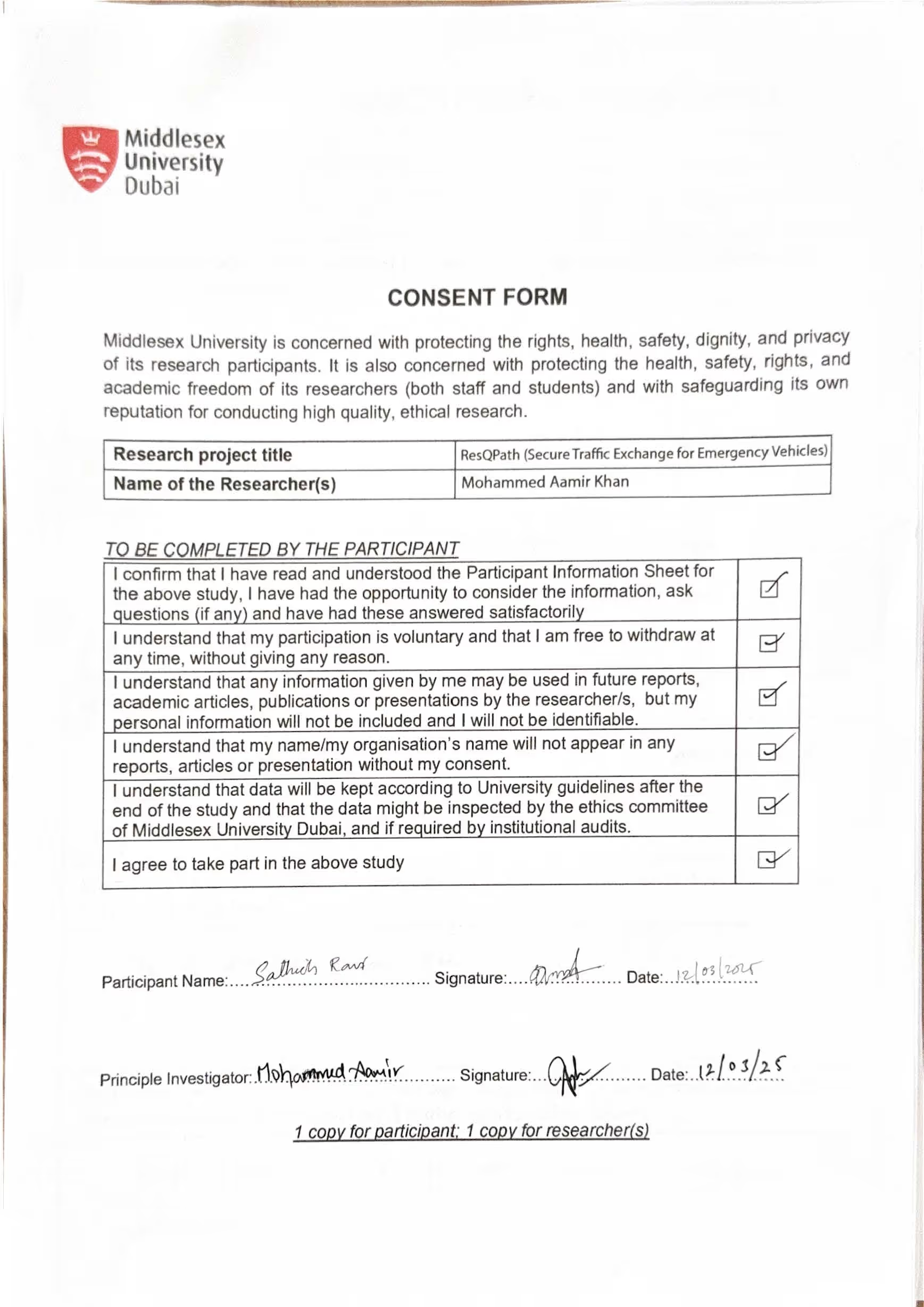
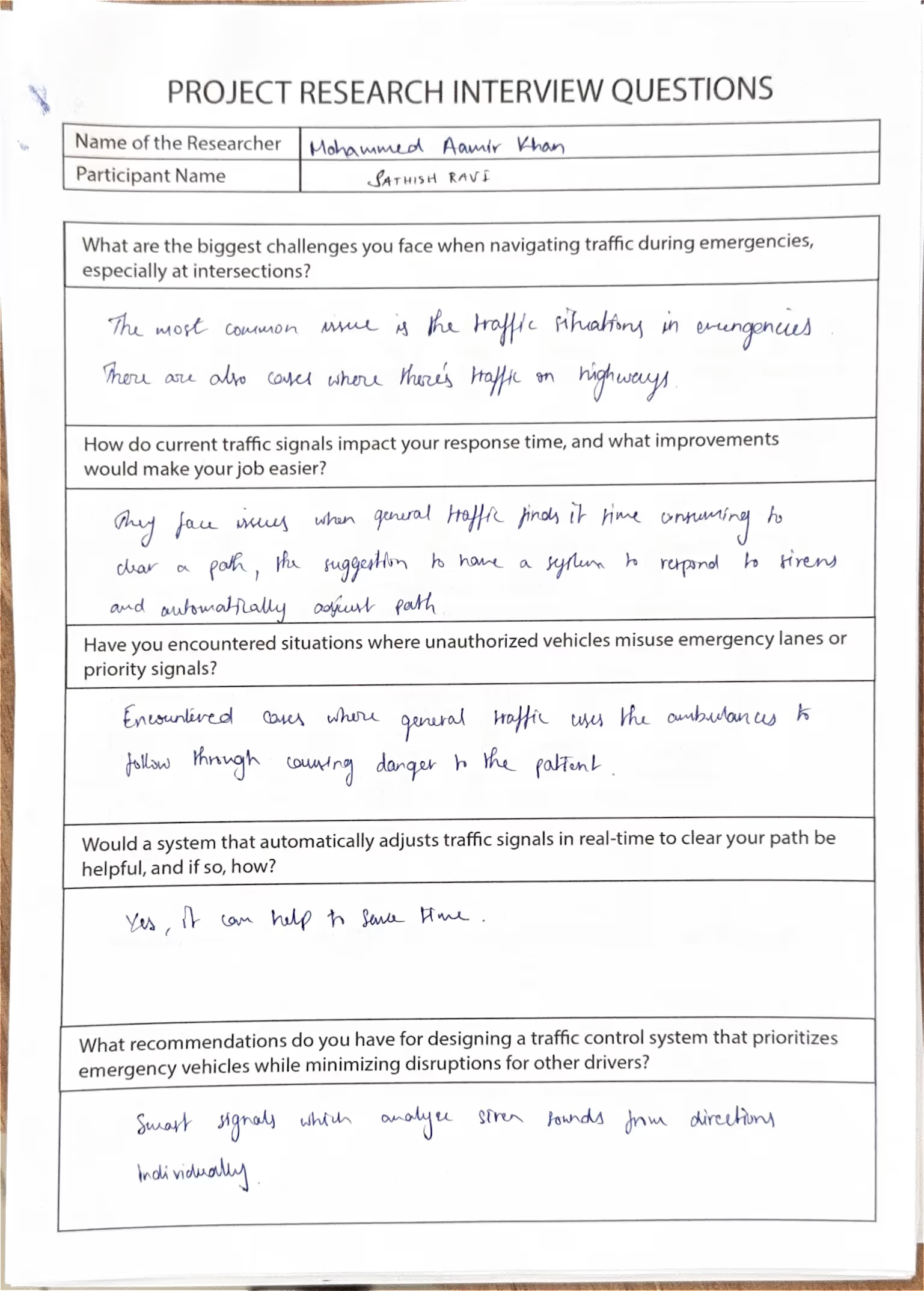




Week 8: Coding and Debugging
Date & Time: March 20, 2023 – 11:30 AM to 11:45 AM
Duration: 15 minutes
Attendees:
-> Me
-> Ms. Shafa
Discussion Points
In this session, I focused on refining the code for both the transmitter and receiver units, as well as troubleshooting issues in the Raspberry Pi GUI. I spent significant time reviewing the ESP32 firmware to ensure that RF command transmission and processing worked smoothly, especially the logic for switching traffic lights based on override commands and default cycles. Several bugs, such as incorrect timing delays and occasional communication dropouts between the ESP32 and the nRF24L01 modules, were identified. Additionally, I debugged the Python Tkinter GUI to ensure that button presses accurately sent commands over the serial link and that status updates were properly displayed.
Outcomes:
• The ESP32 code was revised to handle RF commands more reliably, and the signal transition logic (green, yellow, red) now operates as expected.
• I resolved issues with timing delays and improved the stability of serial communication.
• The GUI was refined to eliminate lag and ensure clear, real-time feedback for each command sent.
Action Items:
• Perform a final round of testing under various conditions to confirm that all modules work together seamlessly.
• Document the updated code changes and final test results.
• Prepare to integrate the final code into the complete system for the next evaluation phase.
Duration: 15 minutes
Attendees:
-> Me
-> Ms. Shafa
Discussion Points
In this session, I focused on refining the code for both the transmitter and receiver units, as well as troubleshooting issues in the Raspberry Pi GUI. I spent significant time reviewing the ESP32 firmware to ensure that RF command transmission and processing worked smoothly, especially the logic for switching traffic lights based on override commands and default cycles. Several bugs, such as incorrect timing delays and occasional communication dropouts between the ESP32 and the nRF24L01 modules, were identified. Additionally, I debugged the Python Tkinter GUI to ensure that button presses accurately sent commands over the serial link and that status updates were properly displayed.
Outcomes:
• The ESP32 code was revised to handle RF commands more reliably, and the signal transition logic (green, yellow, red) now operates as expected.
• I resolved issues with timing delays and improved the stability of serial communication.
• The GUI was refined to eliminate lag and ensure clear, real-time feedback for each command sent.
Action Items:
• Perform a final round of testing under various conditions to confirm that all modules work together seamlessly.
• Document the updated code changes and final test results.
• Prepare to integrate the final code into the complete system for the next evaluation phase.
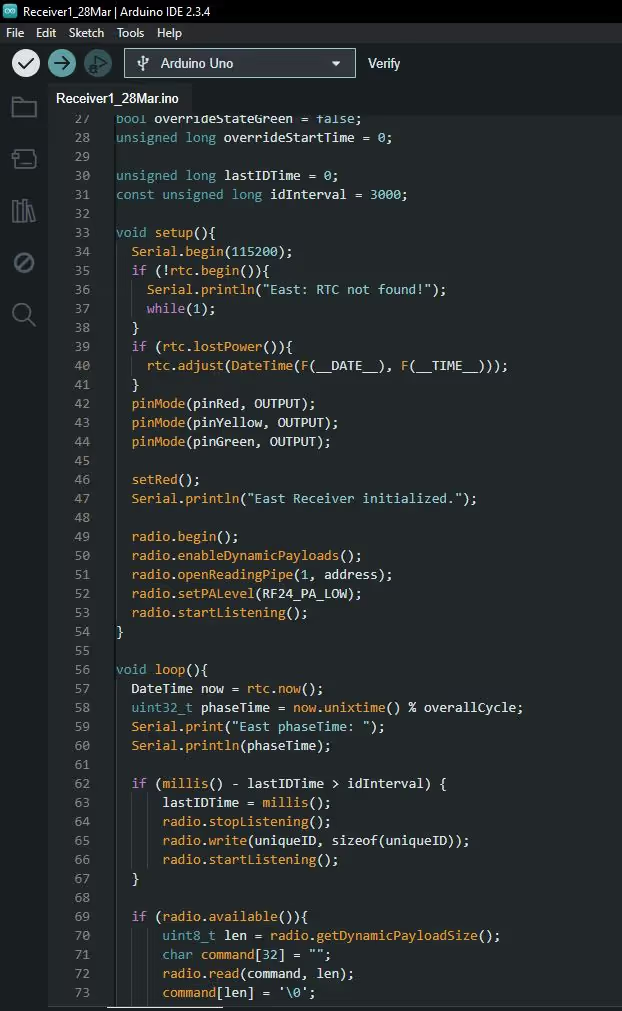
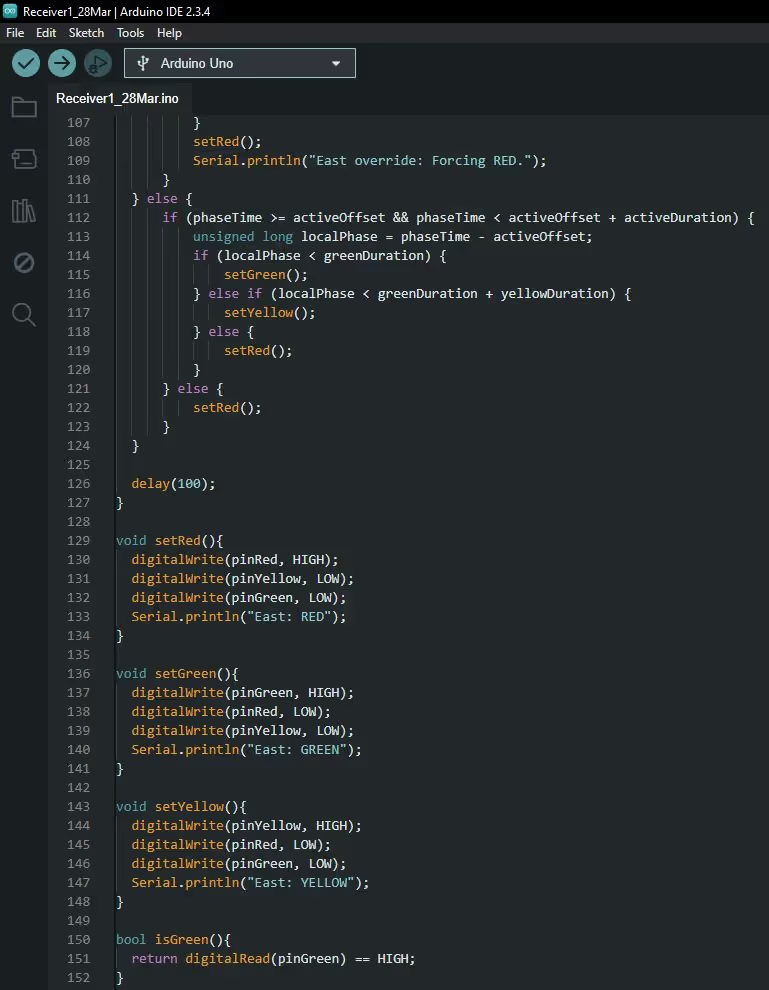
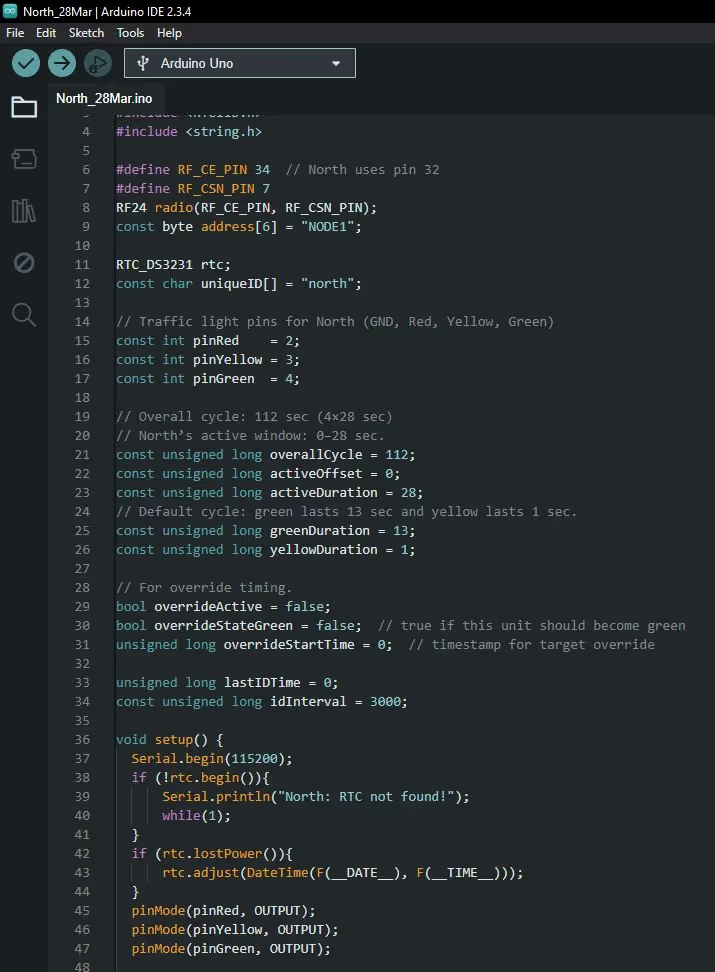
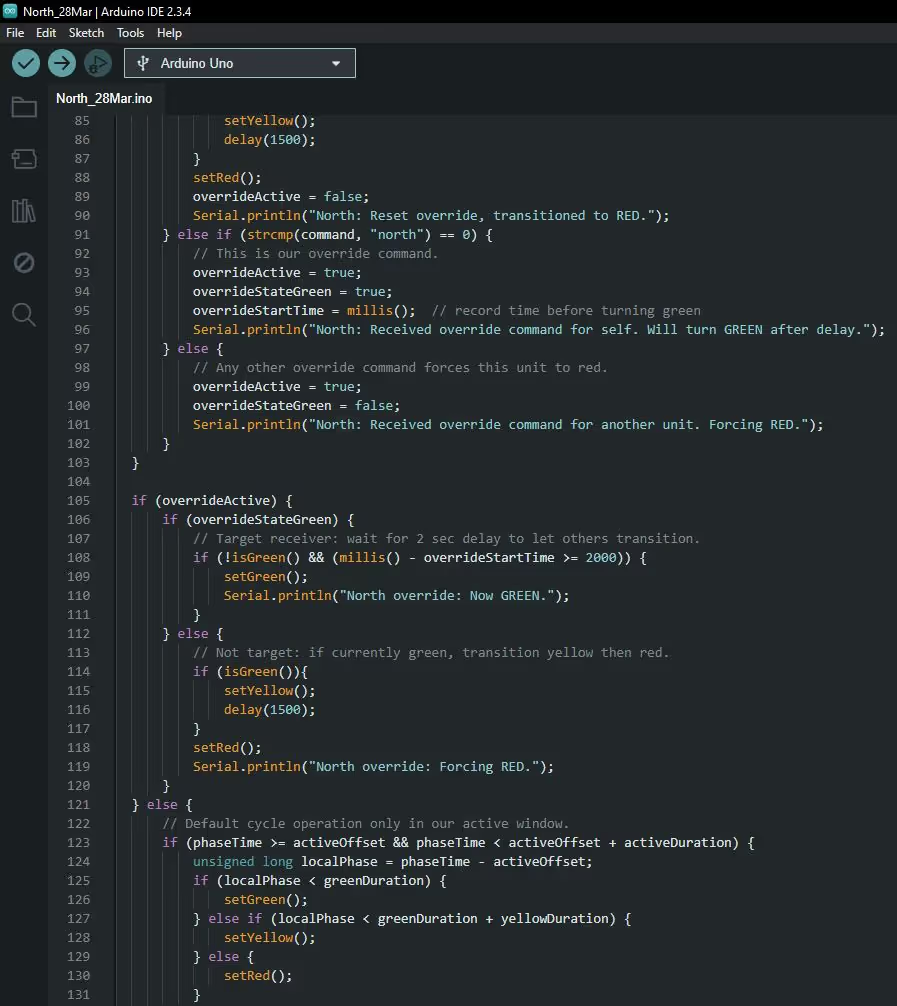
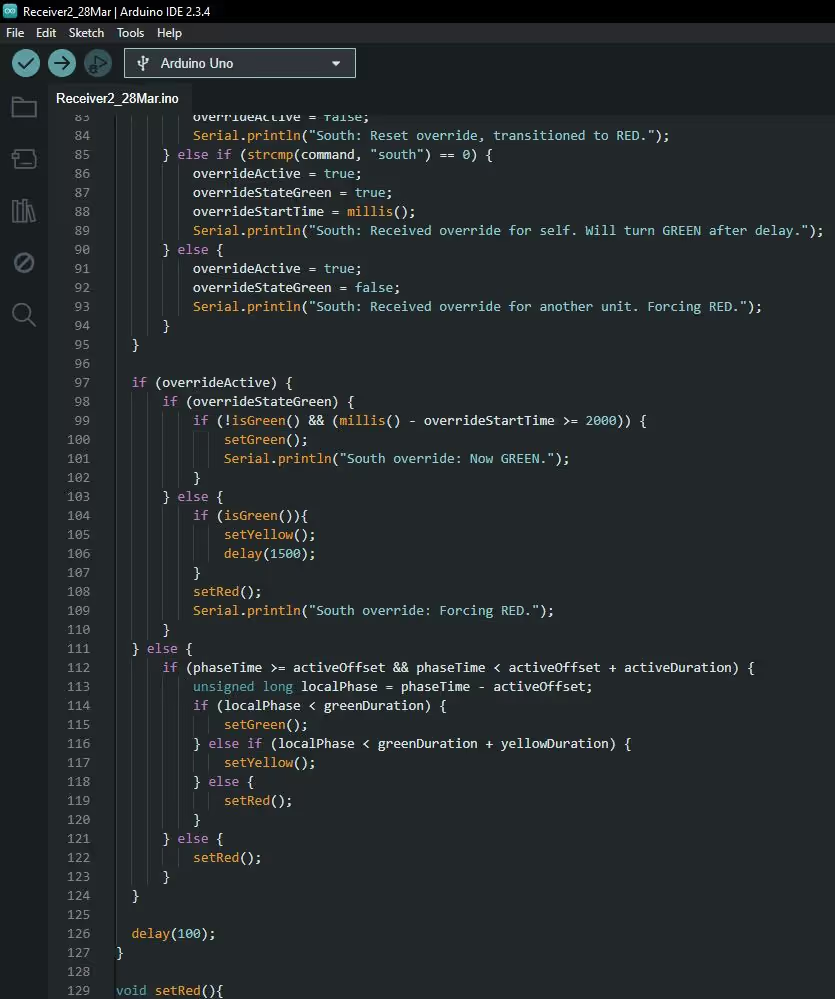
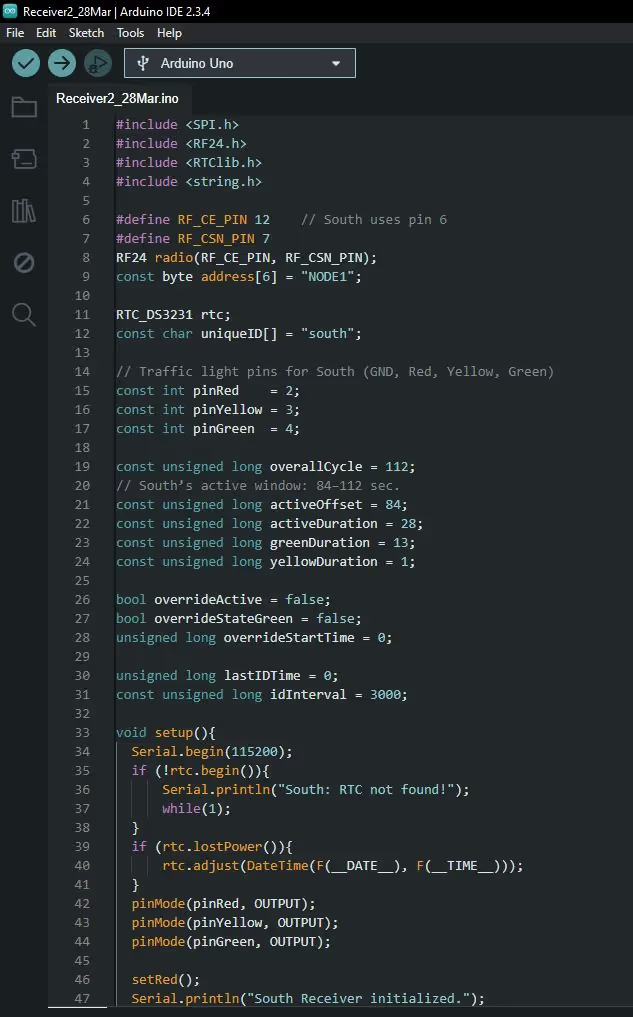
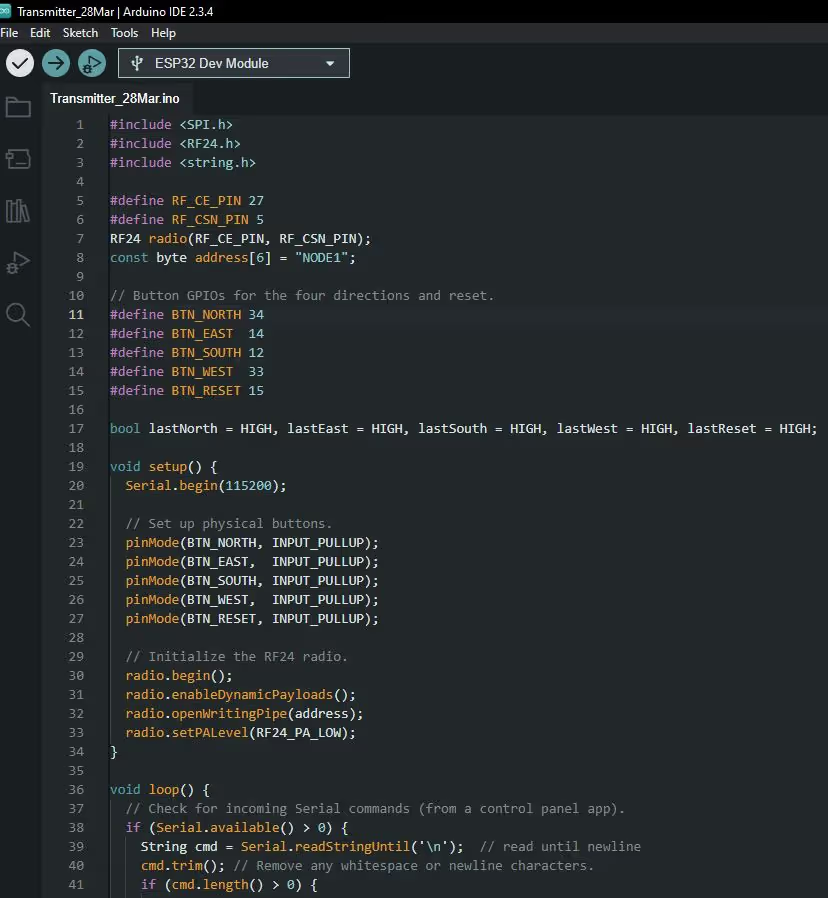
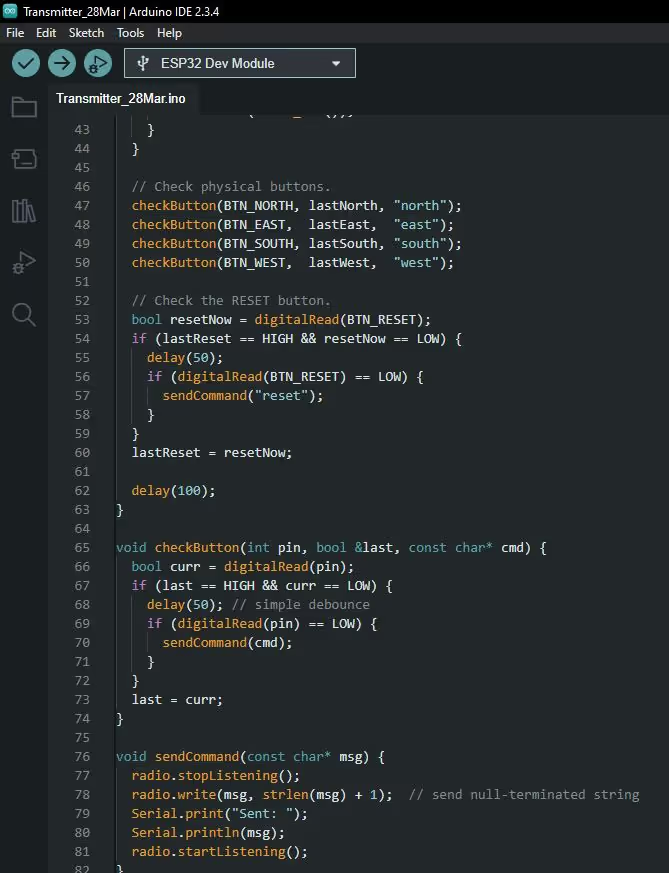
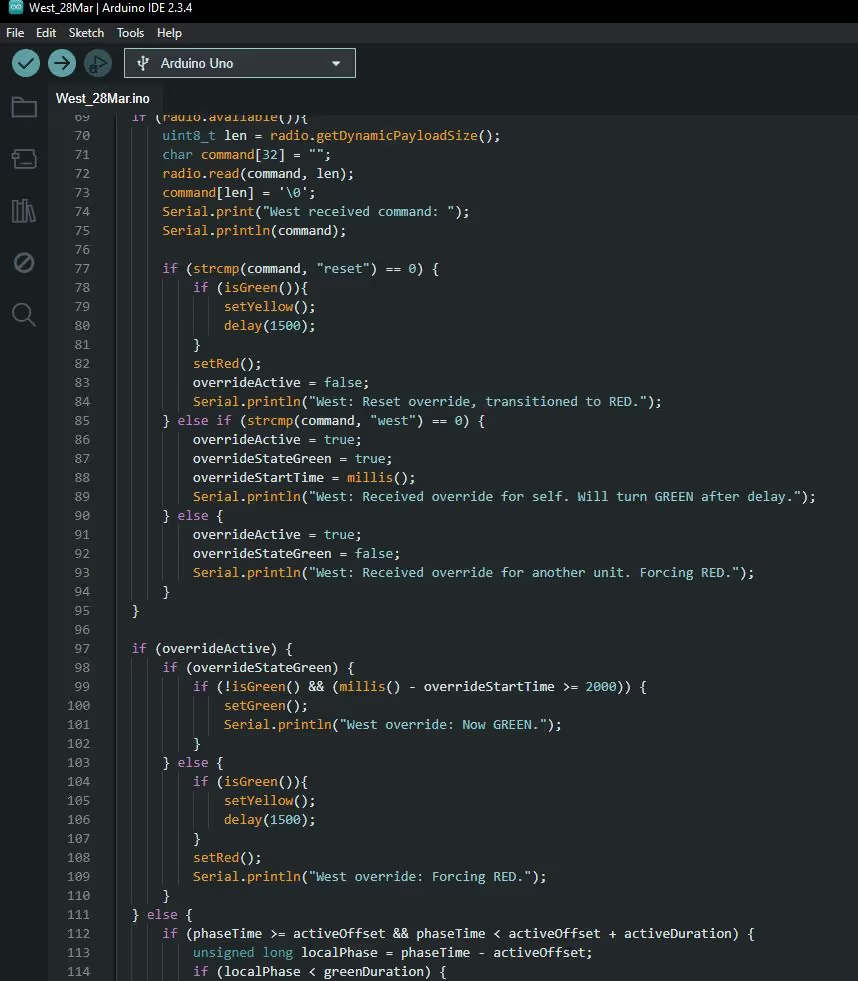
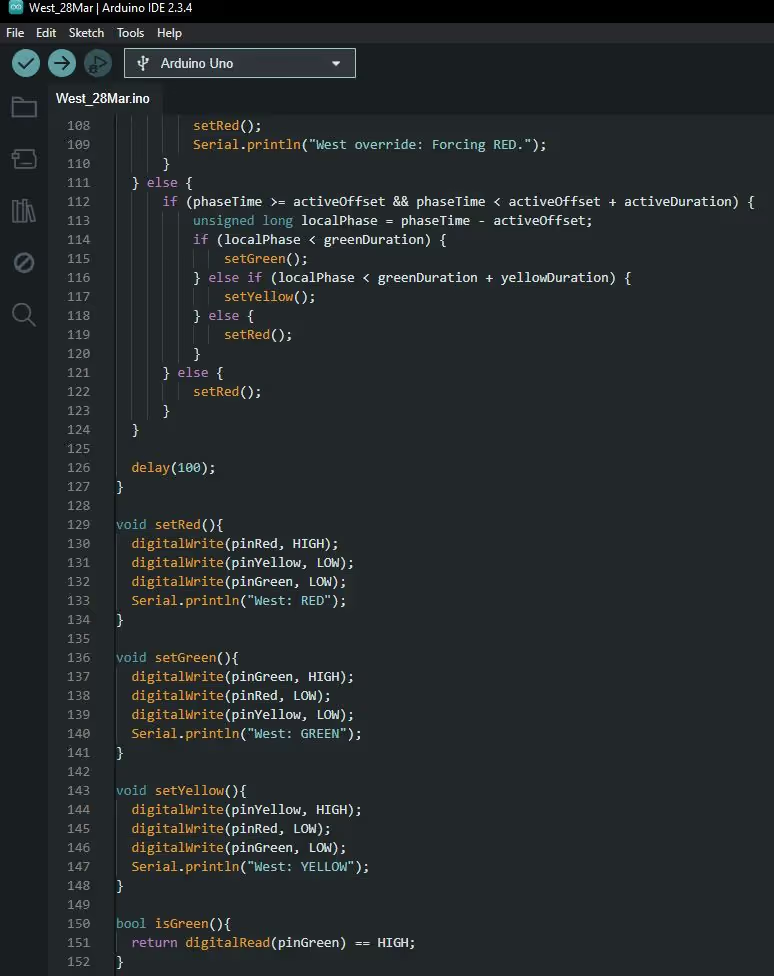
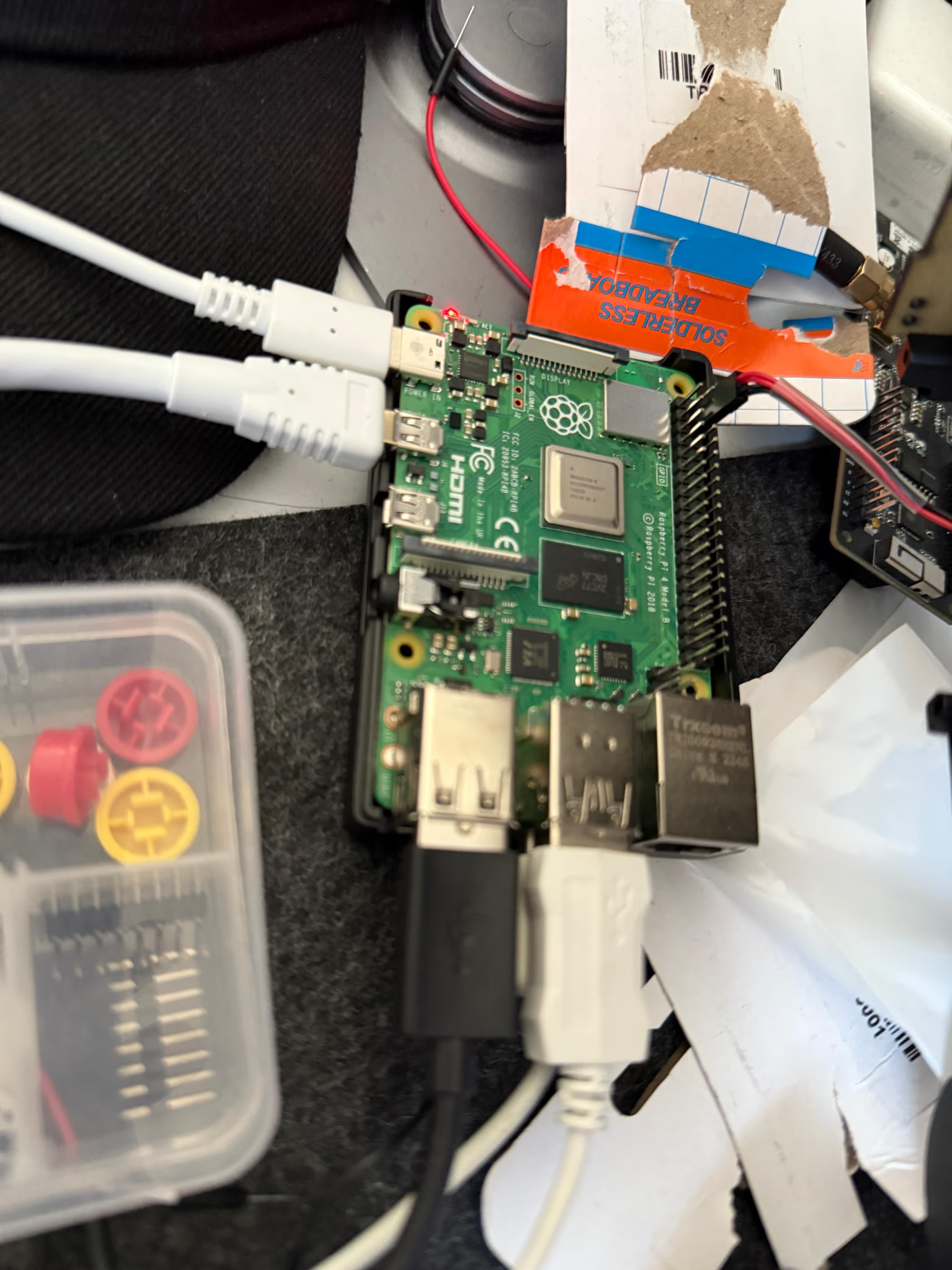
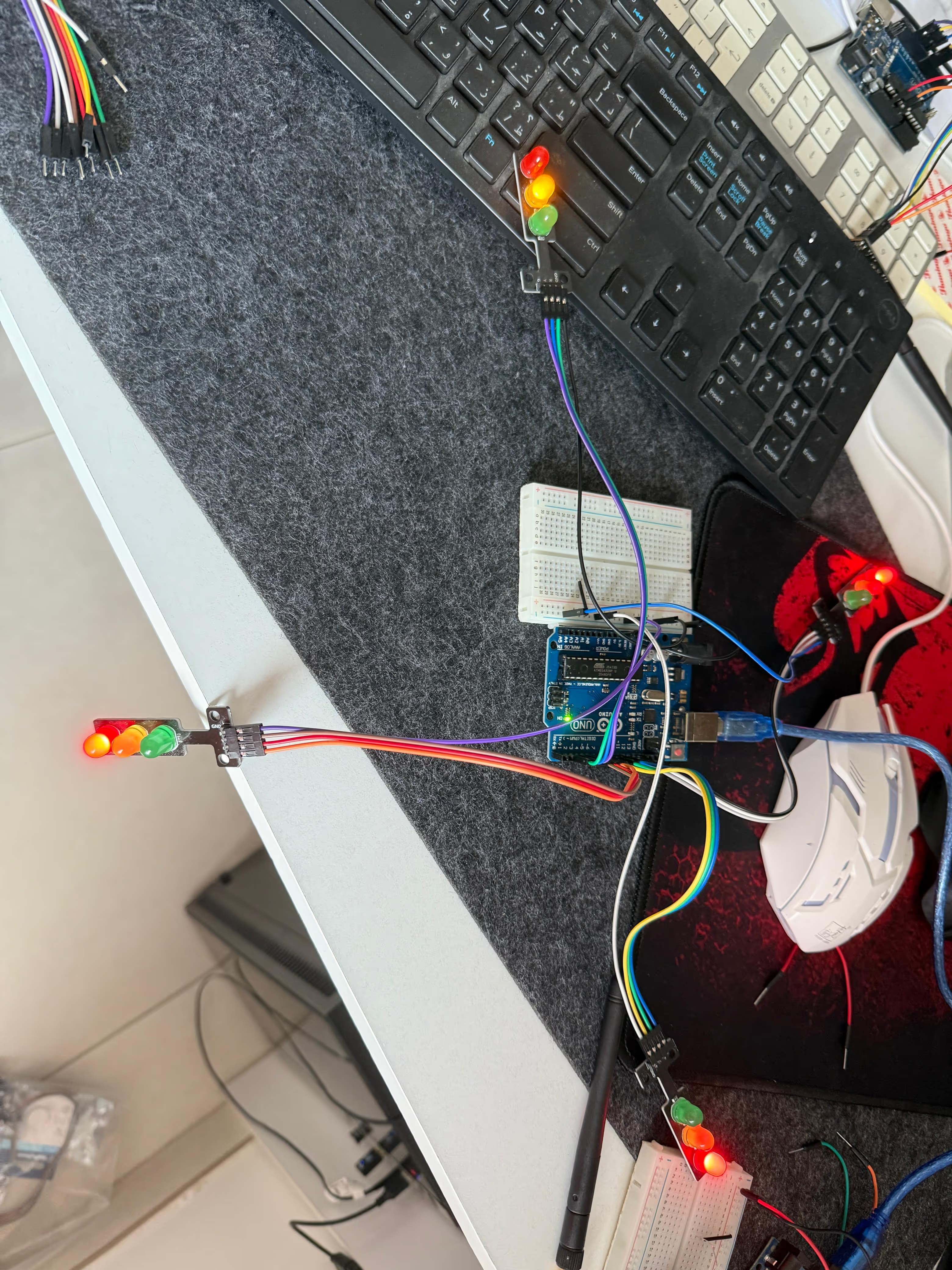
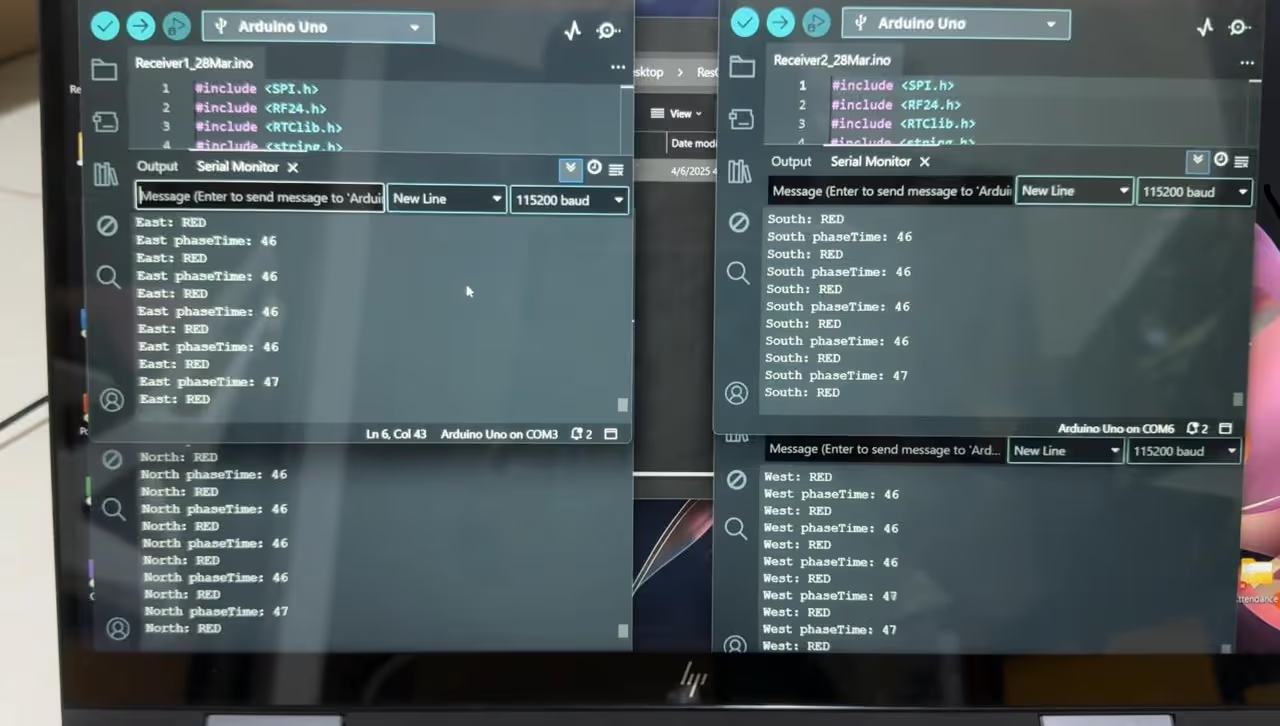
Week 9: Testing
Date & Time: March 27, 2023 – 1:20 PM to 1:35 PM
Duration: 15 minutes
Attendees:
-> Me
-> Ms. Shafa
Discussion Points
During this session, I conducted comprehensive testing on the complete ResQPath system. This stage involved system testing as a whole—ensuring that the transmitter, all receiver units, and the Raspberry Pi GUI worked together seamlessly. I reviewed the overall functionality by simulating emergency scenarios, sending override commands, and verifying that the appropriate traffic signals responded as expected. In addition, I carried out functional tests on each use case, confirming that the override, reset, and default cycle behaviors were reliable. I also verified the responsiveness of the user interface and confirmed that all serial communications were stable under different conditions.
Outcomes:
• The complete system performed as required in simulated emergency scenarios, with override commands correctly prioritizing one intersection direction and returning to the default cycle after a reset.
• Functional and integration tests confirmed that the timing and communication between the transmitter and receivers were consistent.
• Minor issues with response delays were identified and addressed to enhance overall system robustness
Action Items:
• Finalize the testing documentation, including test case results and any residual issues.
• Conduct a final round of system-wide stress tests to ensure stability under prolonged operation.
• Prepare for the final project review and incorporate any necessary tweaks based on user feedback from these tests.
Duration: 15 minutes
Attendees:
-> Me
-> Ms. Shafa
Discussion Points
During this session, I conducted comprehensive testing on the complete ResQPath system. This stage involved system testing as a whole—ensuring that the transmitter, all receiver units, and the Raspberry Pi GUI worked together seamlessly. I reviewed the overall functionality by simulating emergency scenarios, sending override commands, and verifying that the appropriate traffic signals responded as expected. In addition, I carried out functional tests on each use case, confirming that the override, reset, and default cycle behaviors were reliable. I also verified the responsiveness of the user interface and confirmed that all serial communications were stable under different conditions.
Outcomes:
• The complete system performed as required in simulated emergency scenarios, with override commands correctly prioritizing one intersection direction and returning to the default cycle after a reset.
• Functional and integration tests confirmed that the timing and communication between the transmitter and receivers were consistent.
• Minor issues with response delays were identified and addressed to enhance overall system robustness
Action Items:
• Finalize the testing documentation, including test case results and any residual issues.
• Conduct a final round of system-wide stress tests to ensure stability under prolonged operation.
• Prepare for the final project review and incorporate any necessary tweaks based on user feedback from these tests.
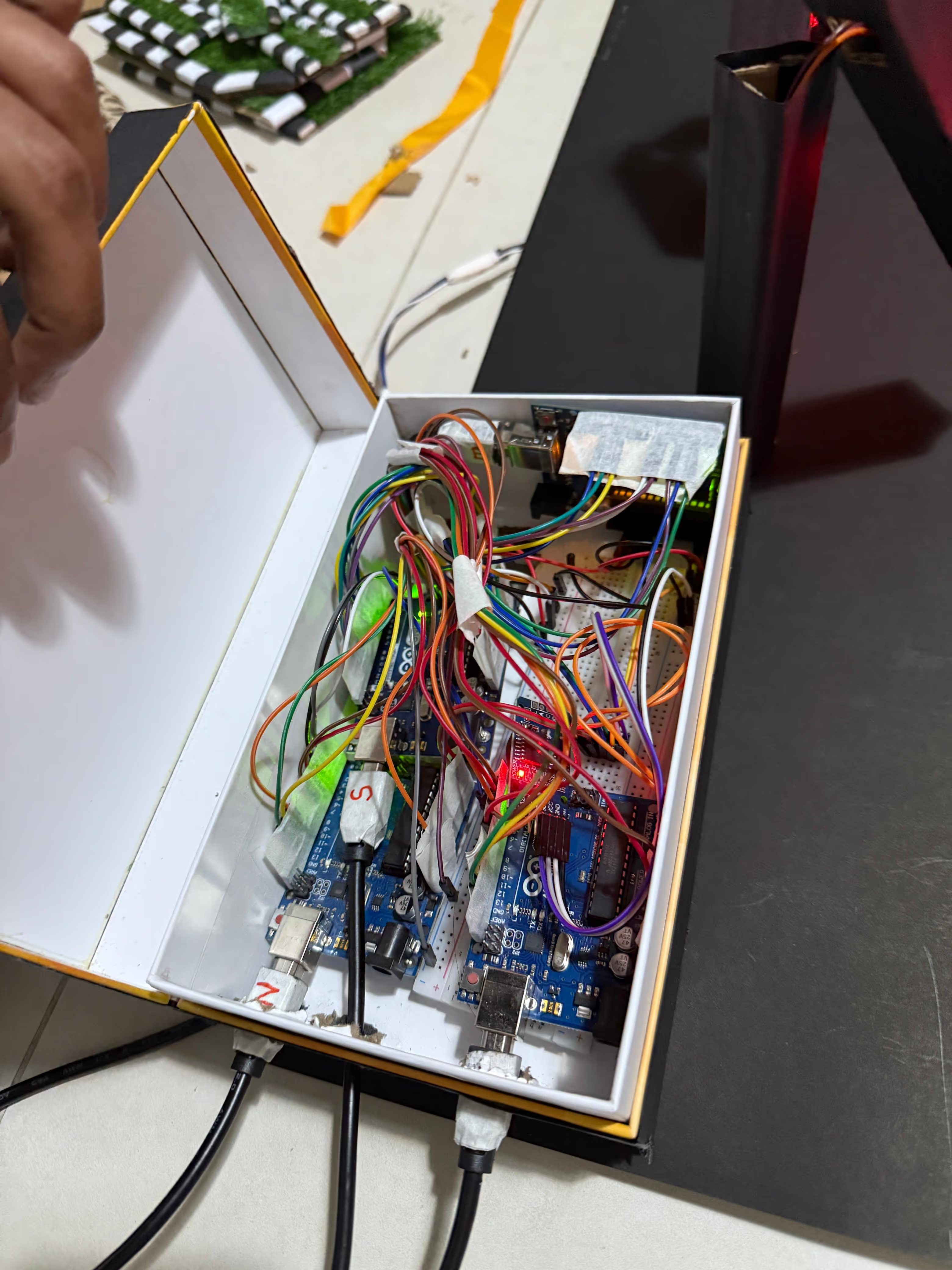
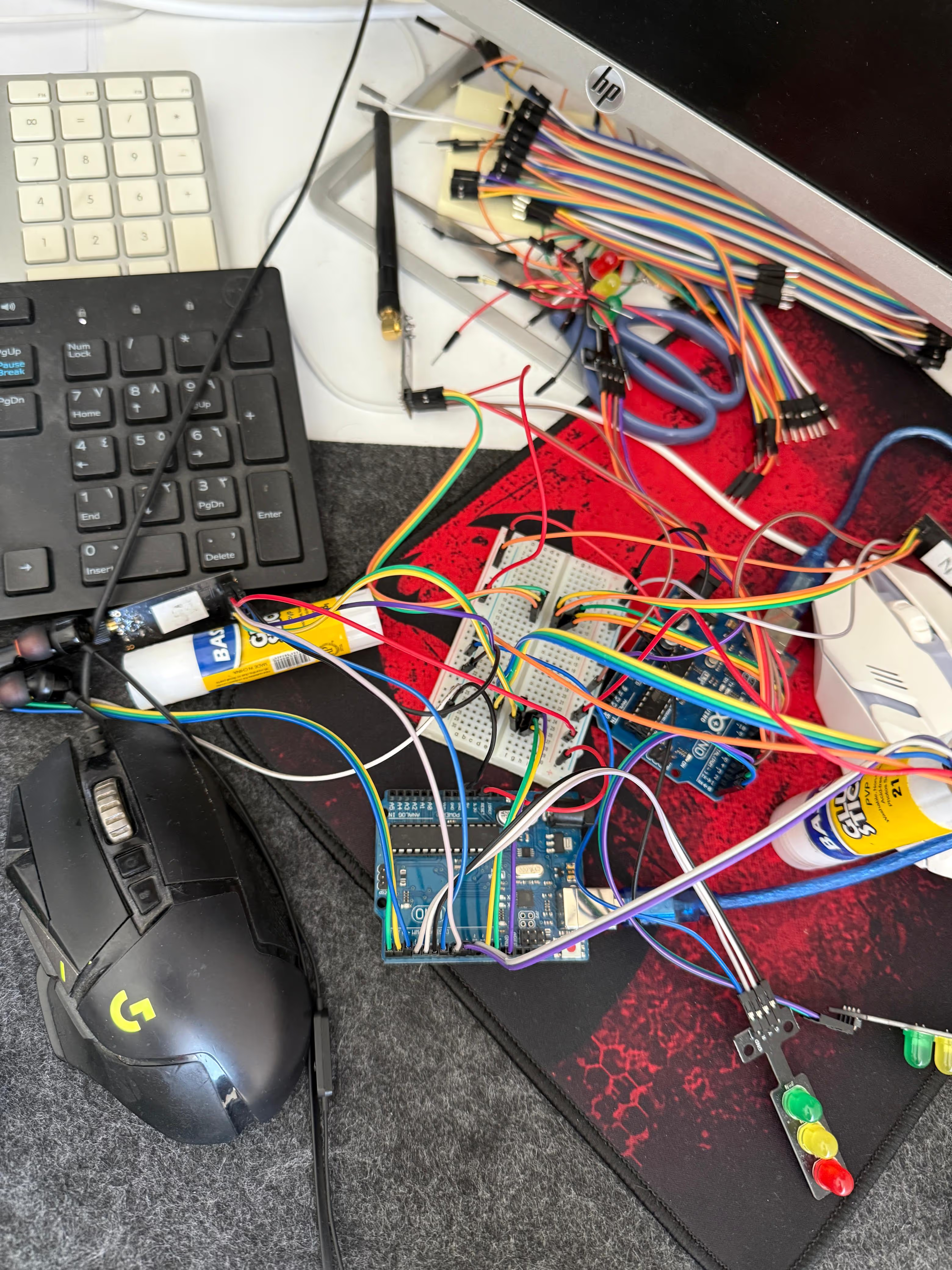
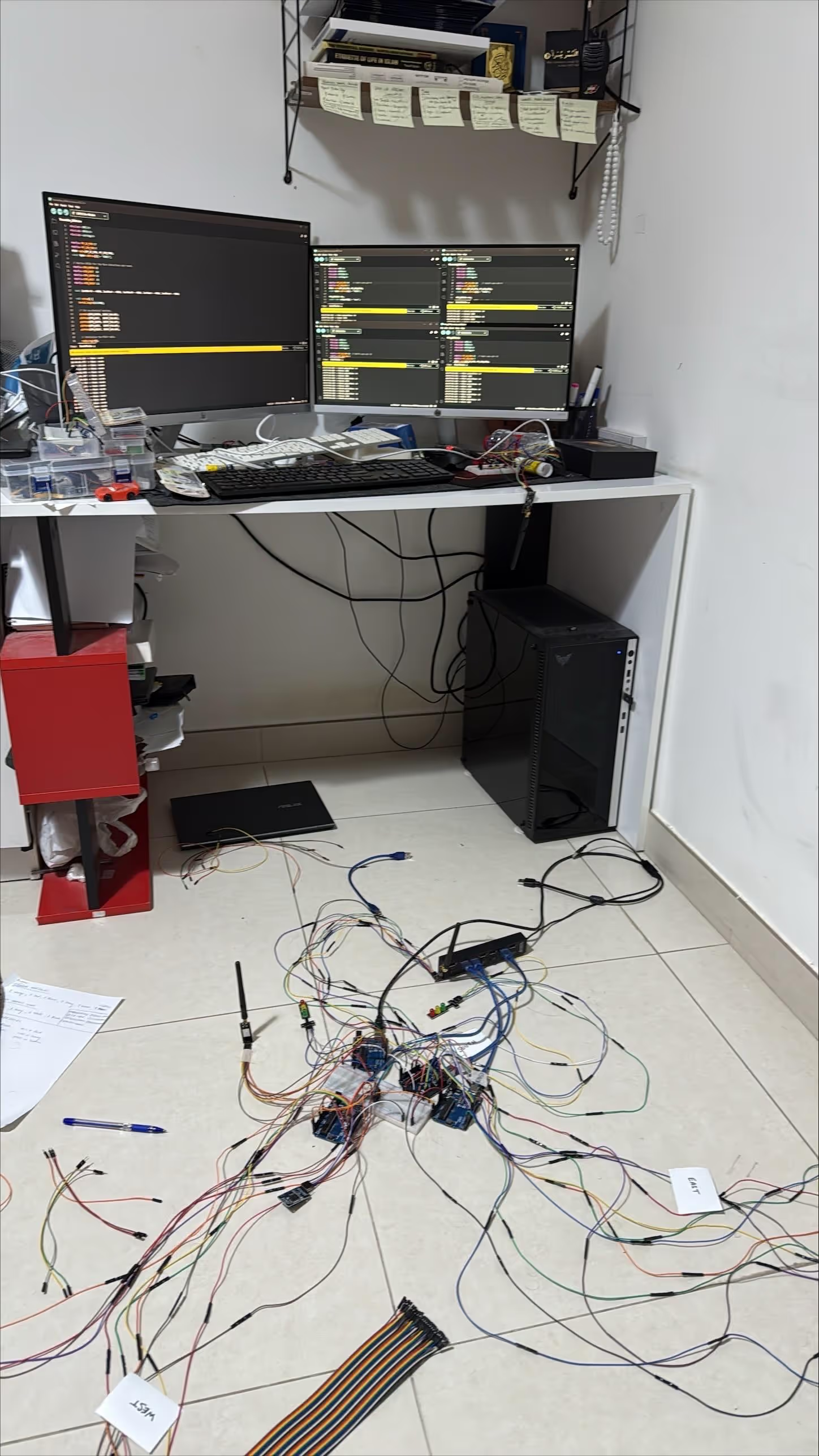
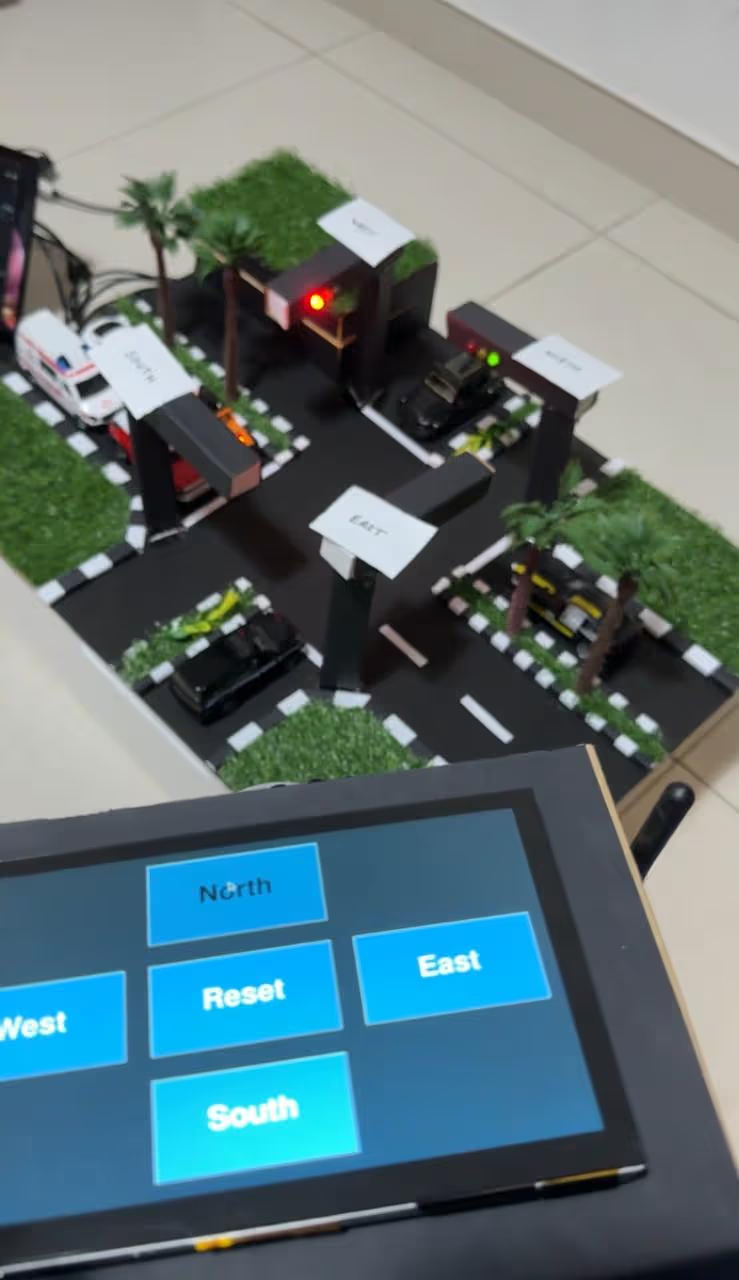
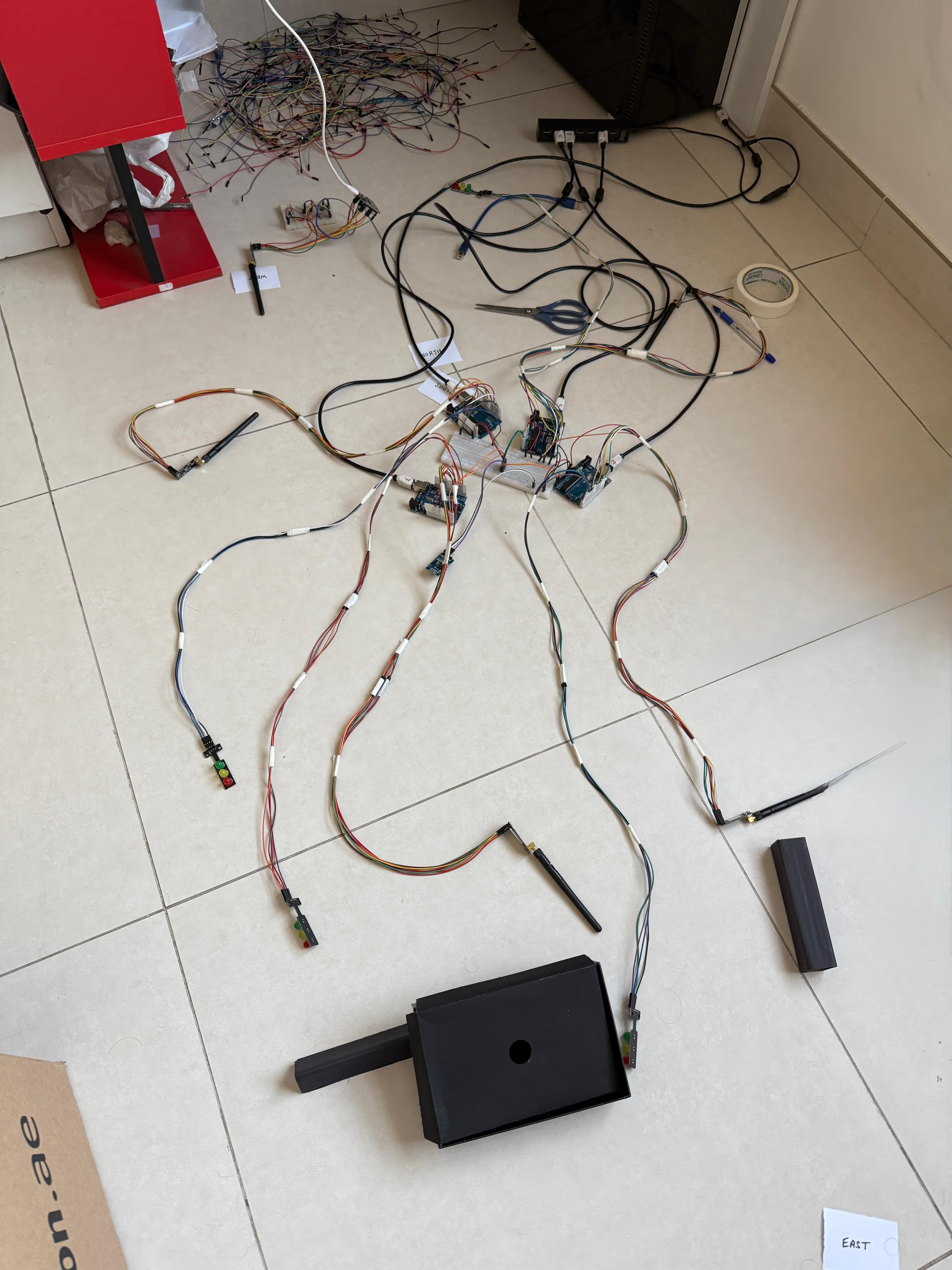
Week 10: Building Model
Date & Time: April 3, 2023 – 10:00 AM to 10:15 AM
Duration: 15 minutes
Attendees:
-> Me
-> Ms. Shafa
Discussion Points
During this session, I focused on assembling the final physical model for ResQPath. I integrated all hardware components—including the ESP32 boards, nRF24L01 modules,DS3231 RTCs, LED traffic light modules, breadboards, and jumper wires—into one cohesive prototype. Special care was taken to secure all wiring and ensure a stable power supply across the circuit. I also made final adjustments based on earlier debugging, testing that every connection was robust and that the system responded correctly to override and reset commands. The goal was to create a tangible model that accurately represents a smart intersection and can be used for live demonstrations.
Outcomes:
• Successfully assembled the final physical prototype of the ResQPath system.
• All hardware components were integrated securely and functioned as designed under simulation conditions.
• Minor aesthetic improvements and additional fixes for component placement were noted for future enhancements.
Action Items:
• Refine the physical setup for enhanced durability and improved demonstration quality.
• Document the final assembly with detailed instructions and include photos for the final report.
• Prepare the prototype for a live demonstration during the final project review.
Duration: 15 minutes
Attendees:
-> Me
-> Ms. Shafa
Discussion Points
During this session, I focused on assembling the final physical model for ResQPath. I integrated all hardware components—including the ESP32 boards, nRF24L01 modules,DS3231 RTCs, LED traffic light modules, breadboards, and jumper wires—into one cohesive prototype. Special care was taken to secure all wiring and ensure a stable power supply across the circuit. I also made final adjustments based on earlier debugging, testing that every connection was robust and that the system responded correctly to override and reset commands. The goal was to create a tangible model that accurately represents a smart intersection and can be used for live demonstrations.
Outcomes:
• Successfully assembled the final physical prototype of the ResQPath system.
• All hardware components were integrated securely and functioned as designed under simulation conditions.
• Minor aesthetic improvements and additional fixes for component placement were noted for future enhancements.
Action Items:
• Refine the physical setup for enhanced durability and improved demonstration quality.
• Document the final assembly with detailed instructions and include photos for the final report.
• Prepare the prototype for a live demonstration during the final project review.
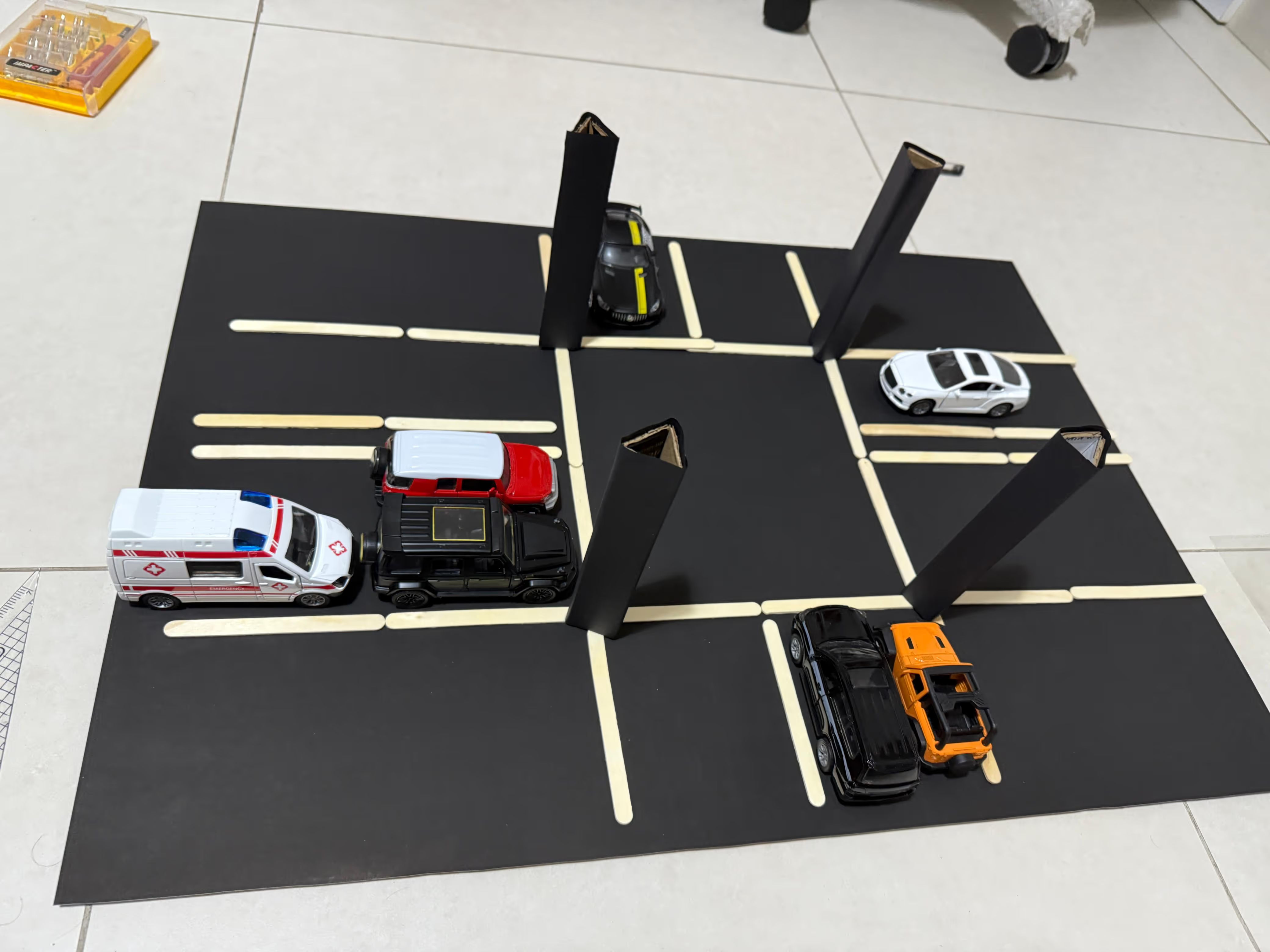
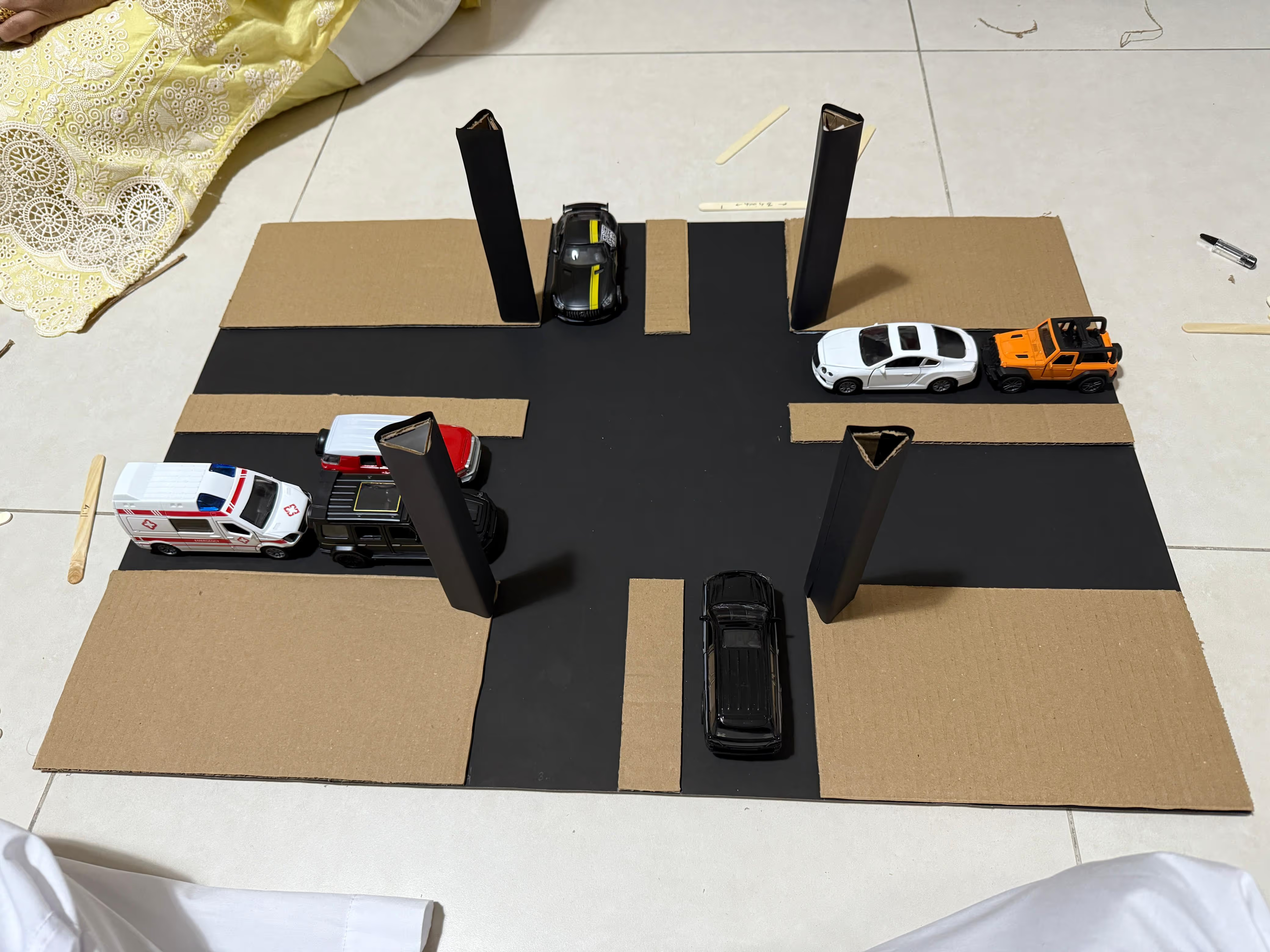
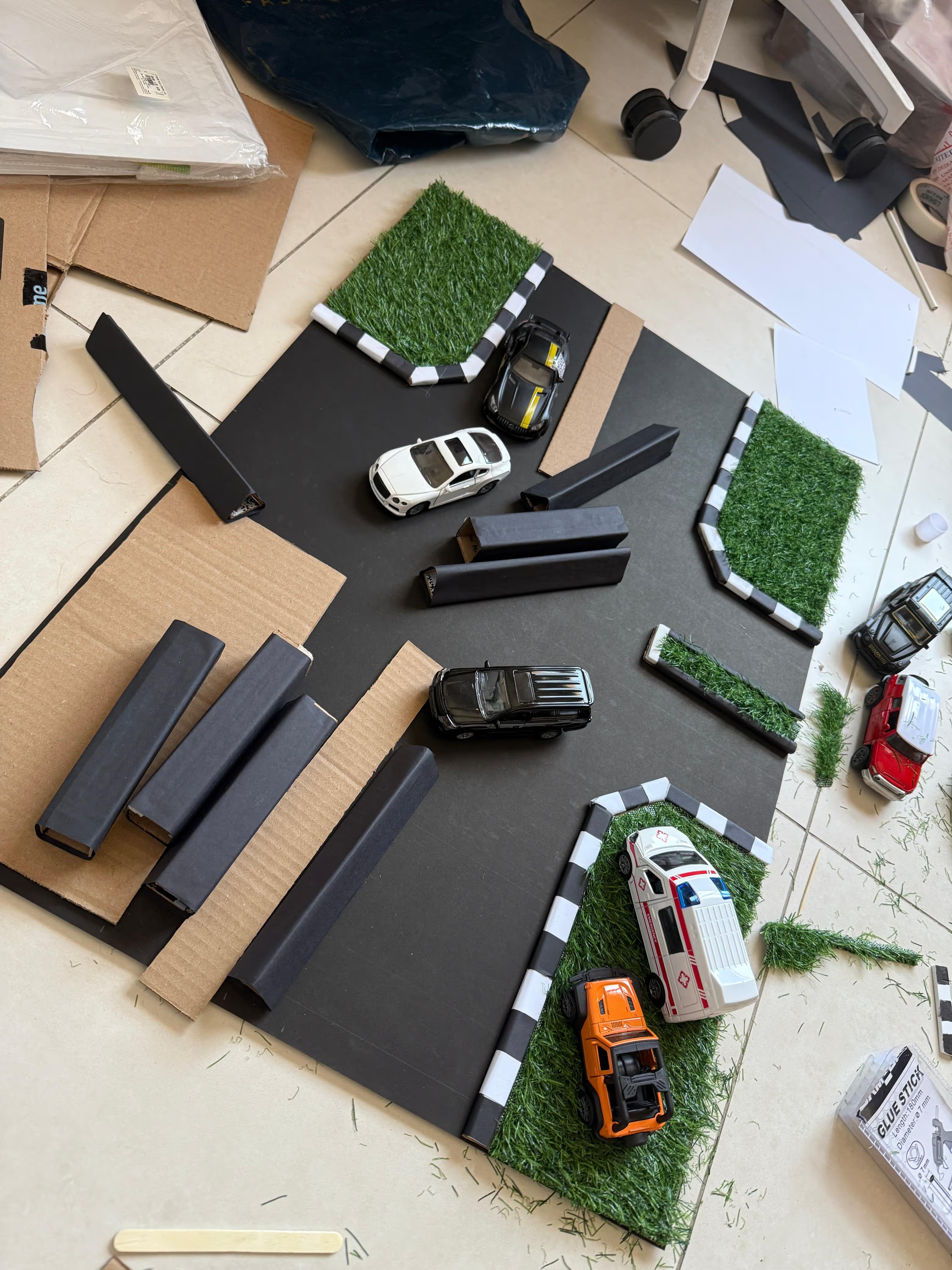
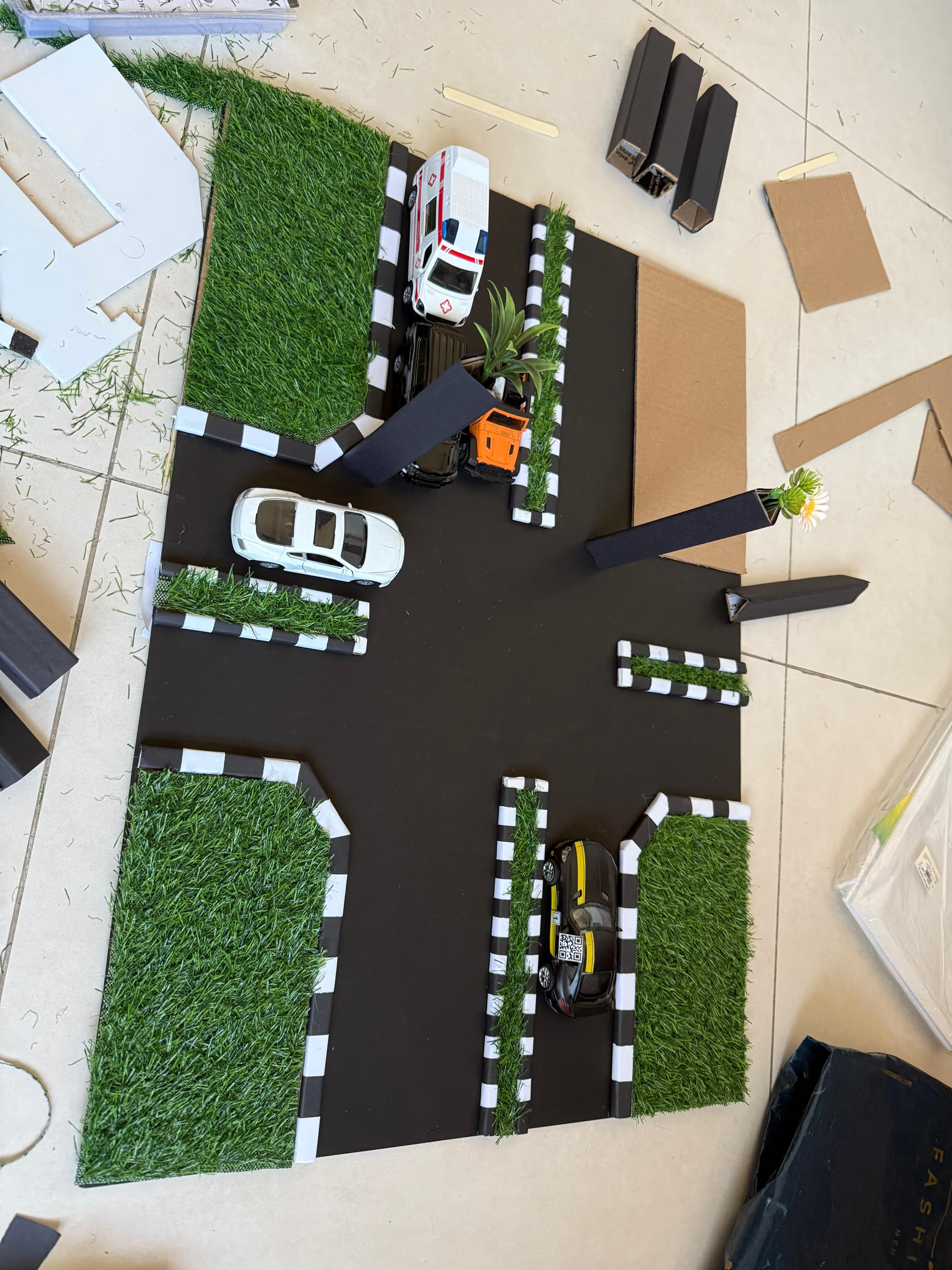
Week 11: Integrating Model with Components
Date & Time: April 10, 2023 – 2:45 PM to 2:55 PM
Duration: 10 minutes
Attendees:
-> Me
-> Ms. Shafa
Discussion Points
During this session, I focused on integrating the final physical model with all the tested hardware components. This involved carefully connecting the assembled prototype—comprising the ESP32 boards, nRF24L01 modules, DS3231 RTCs, LED traffic light modules, breadboard, and jumper wires—with the overarching system. I ensured that each component was securely connected and that wiring was neat and organized. The emphasis was on verifying that the entire setup worked as a single, cohesive system and that the wireless commands from the transmitter and Raspberry Pi GUI reached each receiver correctly.
Outcomes:
• All hardware components were successfully integrated into the prototype
• The integrated system correctly executed override and reset commands, with each receiver responding according to its designated logic.
• Communication between the transmitter and receiver units was confirmed to be consistent.
• Minor issues, such as a few loose connections, were identified and promptly resolved.
Action Items:
• Perform a final round of stress testing on the fully integrated model to check for any intermittent issues.
• Secure all wiring for improved durability and refine the overall physical layout as needed.
• Document the integration process with updated schematics and photographs for the final project report.
Duration: 10 minutes
Attendees:
-> Me
-> Ms. Shafa
Discussion Points
During this session, I focused on integrating the final physical model with all the tested hardware components. This involved carefully connecting the assembled prototype—comprising the ESP32 boards, nRF24L01 modules, DS3231 RTCs, LED traffic light modules, breadboard, and jumper wires—with the overarching system. I ensured that each component was securely connected and that wiring was neat and organized. The emphasis was on verifying that the entire setup worked as a single, cohesive system and that the wireless commands from the transmitter and Raspberry Pi GUI reached each receiver correctly.
Outcomes:
• All hardware components were successfully integrated into the prototype
• The integrated system correctly executed override and reset commands, with each receiver responding according to its designated logic.
• Communication between the transmitter and receiver units was confirmed to be consistent.
• Minor issues, such as a few loose connections, were identified and promptly resolved.
Action Items:
• Perform a final round of stress testing on the fully integrated model to check for any intermittent issues.
• Secure all wiring for improved durability and refine the overall physical layout as needed.
• Document the integration process with updated schematics and photographs for the final project report.
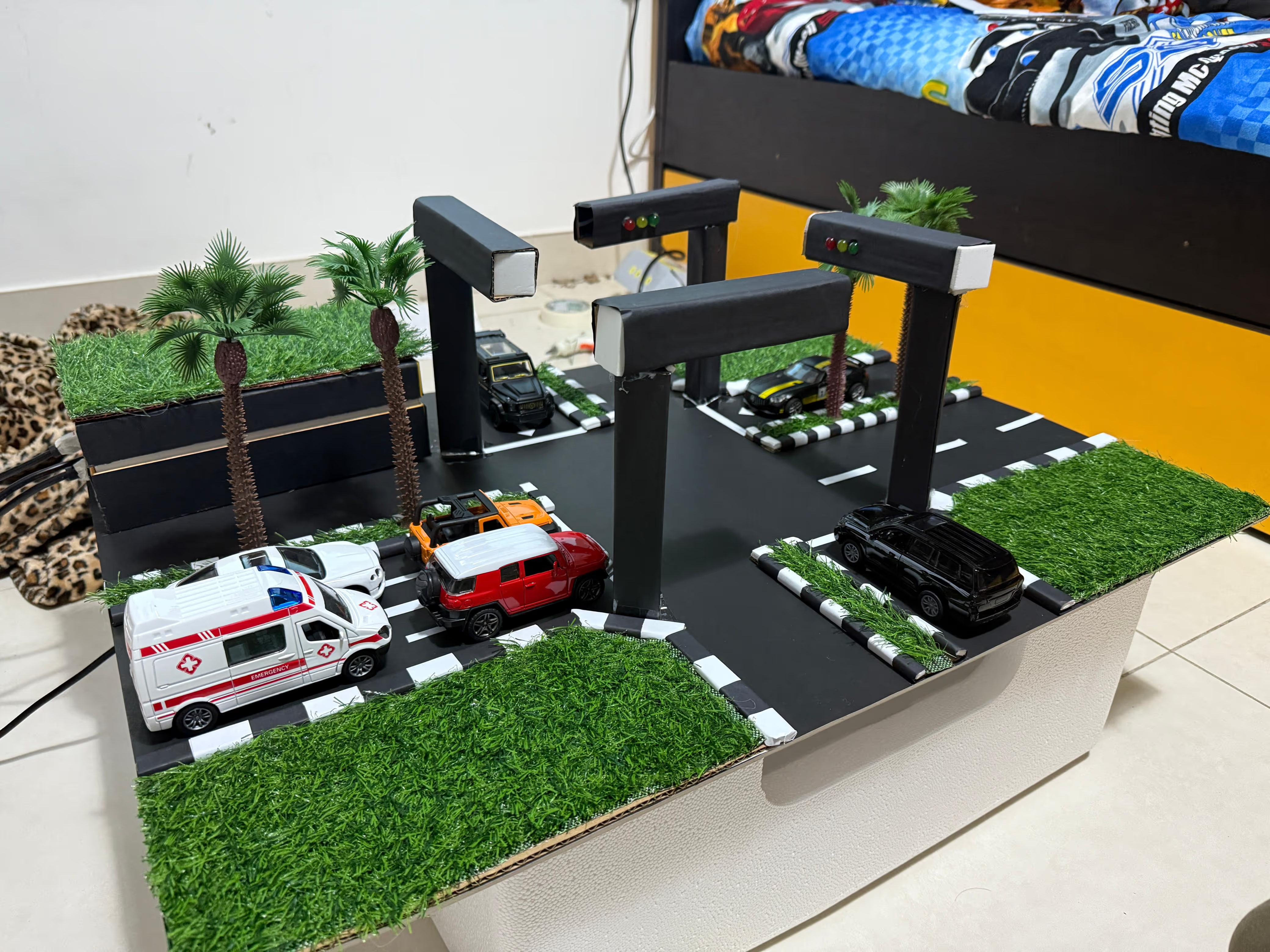

Week 12: Final Model Video, Report Feedback, and Preparing Presentation Slides
Date & Time: April 12, 2023 – 3:10 PM to 3:25 PM
Duration: 15 minutes
Attendees:
-> Me
-> Ms. Shafa
Discussion Points
During this session, I focused on preparing the final model video and gathering feedback on the project report. I recorded a video demonstration of the fully integrated ResQPath system in action, highlighting the override functions, reset operation, and system responses at the intersection. Following the recording, I reviewed the final draft of the project report with Ms. Shafa, and we discussed minor revisions to improve clarity, detail, and overall presentation of the content. In addition, I began preparing the presentation slides for the final project review, ensuring that the slides were concise, visually appealing, and aligned with the project’s key milestones and findings.
Outcomes:
• A comprehensive video demonstration of the final model was recorded, show casing all system functionalities.
• The project report received positive feedback with suggestions for minor edits, which will be incorporated before final submission.
• A draft set of presentation slides was created, summarizing project highlights from the introduction and aims through to the final prototype evaluation and future aspects.
Action Items:
• Incorporate the feedback and finalize the project report
• Refine and complete the presentation slides, ensuring they clearly convey the project objectives, methodologies, outcomes, and future directions.
• Prepare for the final project review and practice the presentation using the slide deck and recorded video demo.
Duration: 15 minutes
Attendees:
-> Me
-> Ms. Shafa
Discussion Points
During this session, I focused on preparing the final model video and gathering feedback on the project report. I recorded a video demonstration of the fully integrated ResQPath system in action, highlighting the override functions, reset operation, and system responses at the intersection. Following the recording, I reviewed the final draft of the project report with Ms. Shafa, and we discussed minor revisions to improve clarity, detail, and overall presentation of the content. In addition, I began preparing the presentation slides for the final project review, ensuring that the slides were concise, visually appealing, and aligned with the project’s key milestones and findings.
Outcomes:
• A comprehensive video demonstration of the final model was recorded, show casing all system functionalities.
• The project report received positive feedback with suggestions for minor edits, which will be incorporated before final submission.
• A draft set of presentation slides was created, summarizing project highlights from the introduction and aims through to the final prototype evaluation and future aspects.
Action Items:
• Incorporate the feedback and finalize the project report
• Refine and complete the presentation slides, ensuring they clearly convey the project objectives, methodologies, outcomes, and future directions.
• Prepare for the final project review and practice the presentation using the slide deck and recorded video demo.

